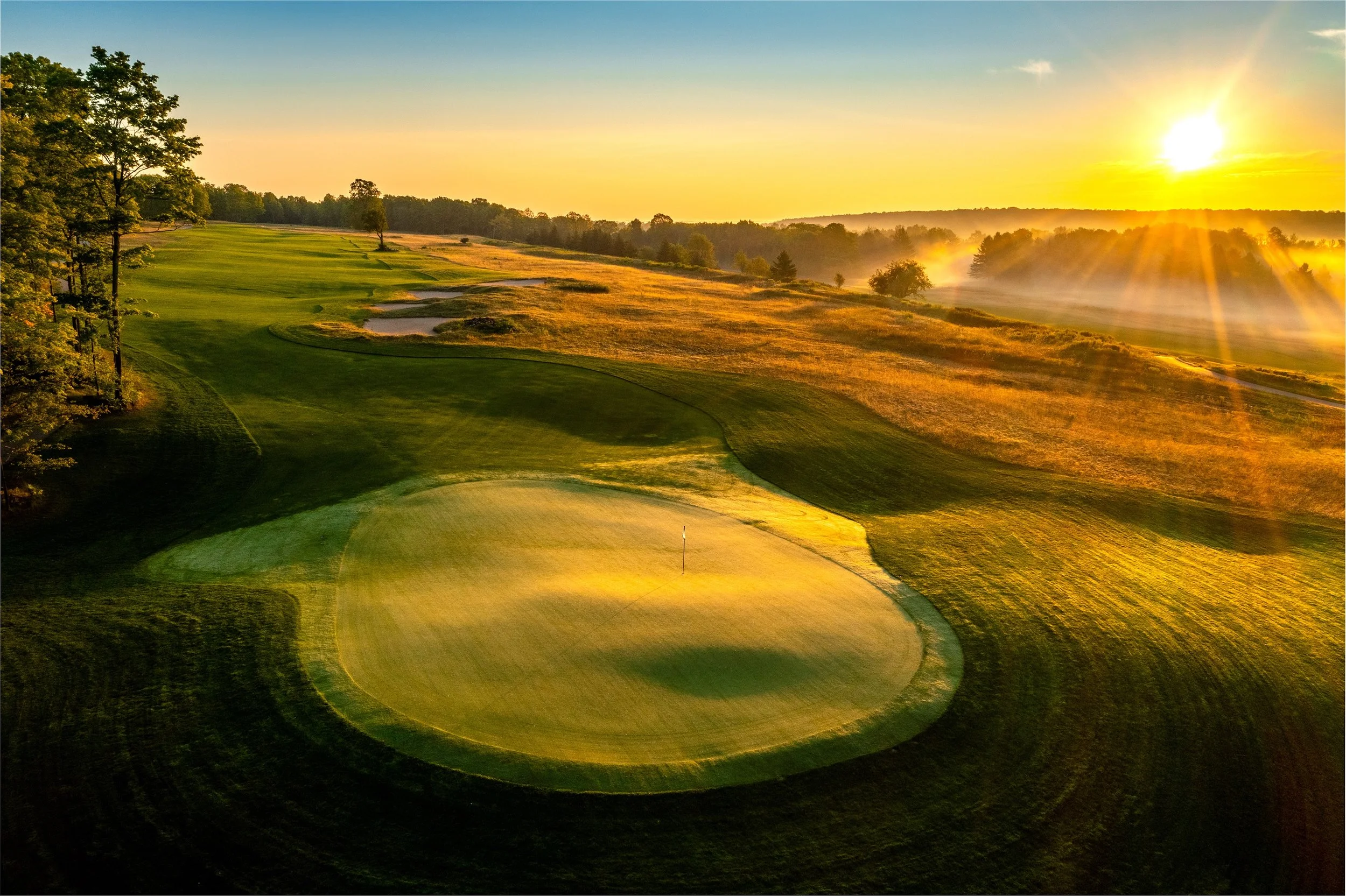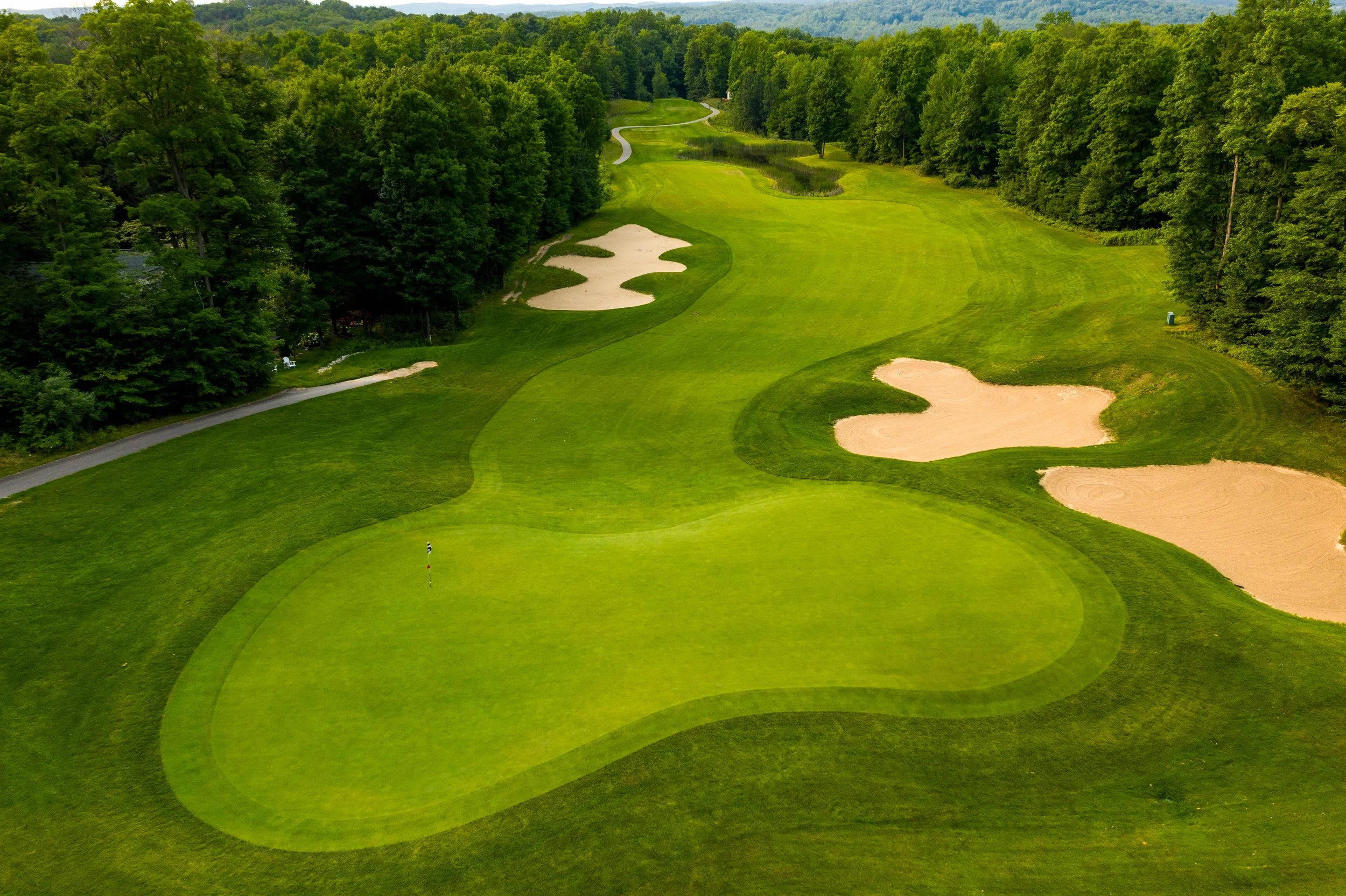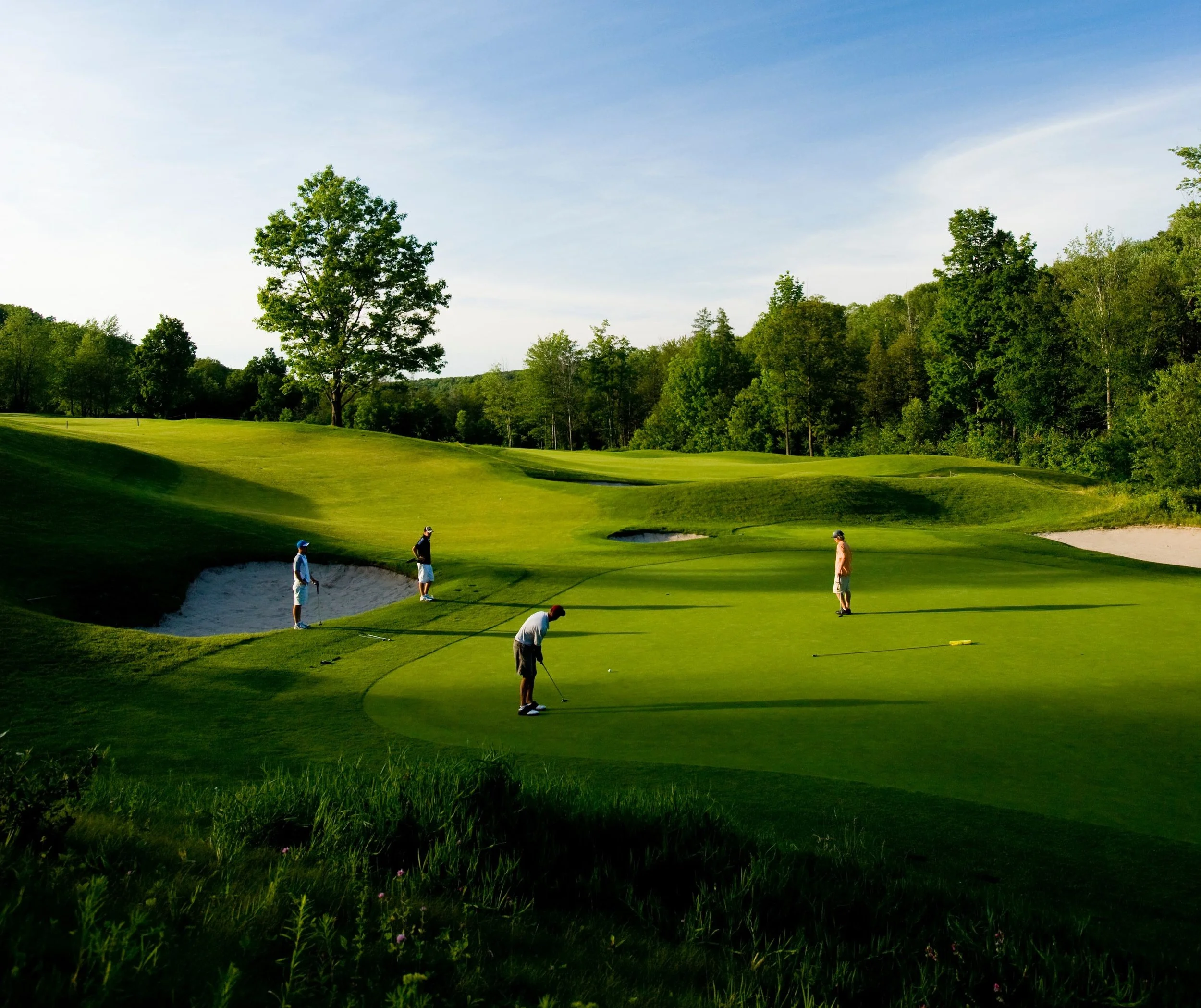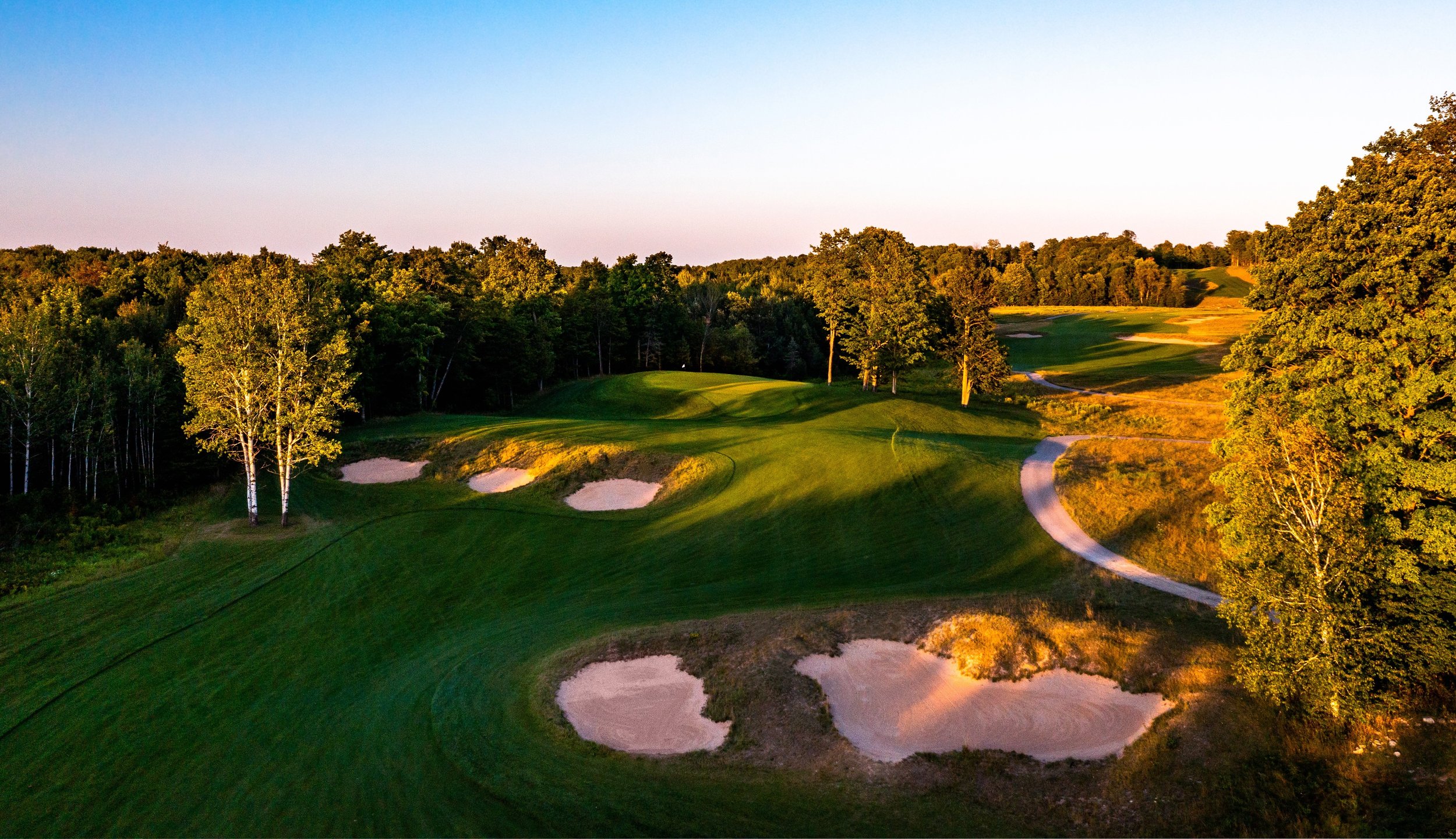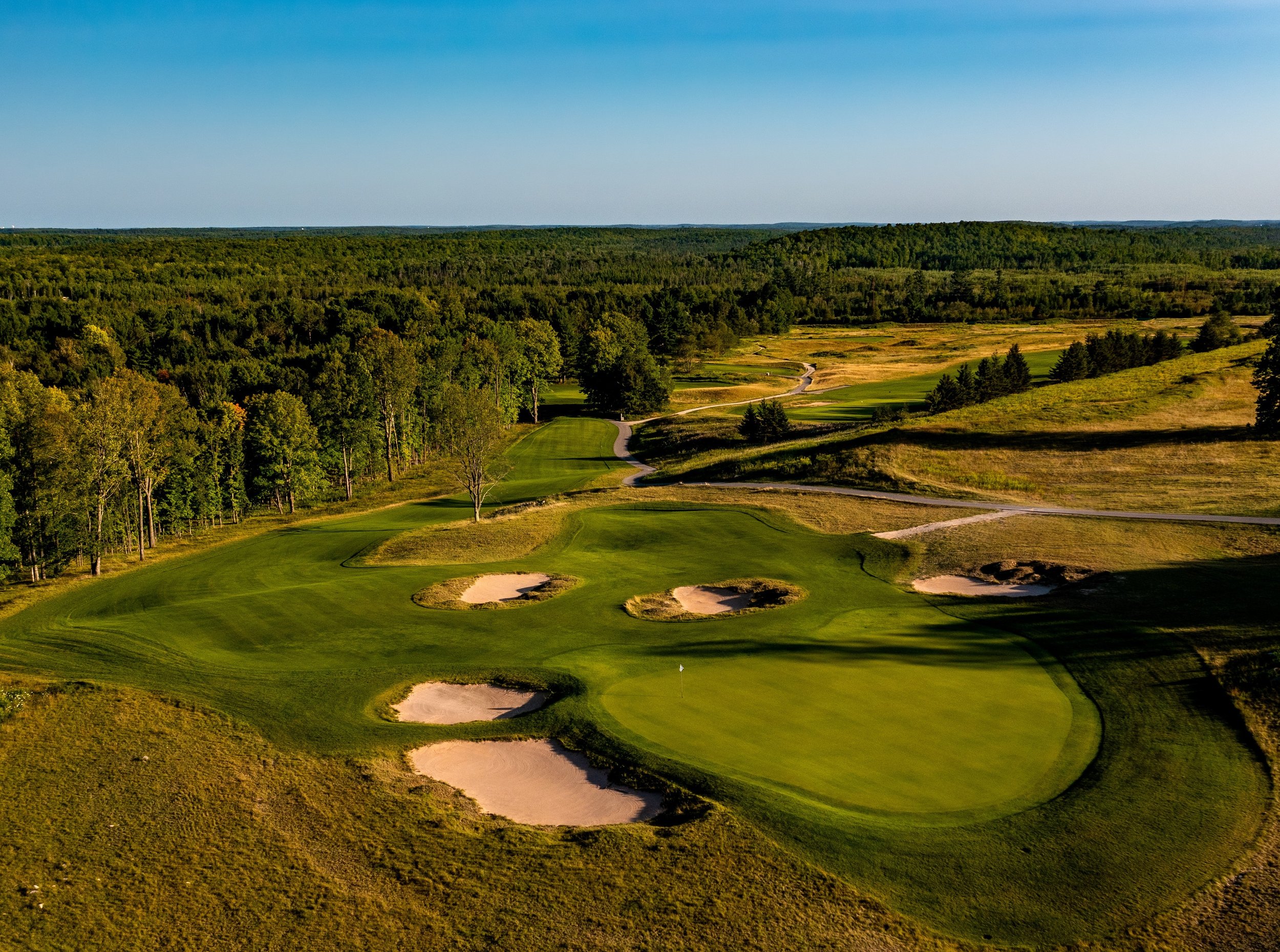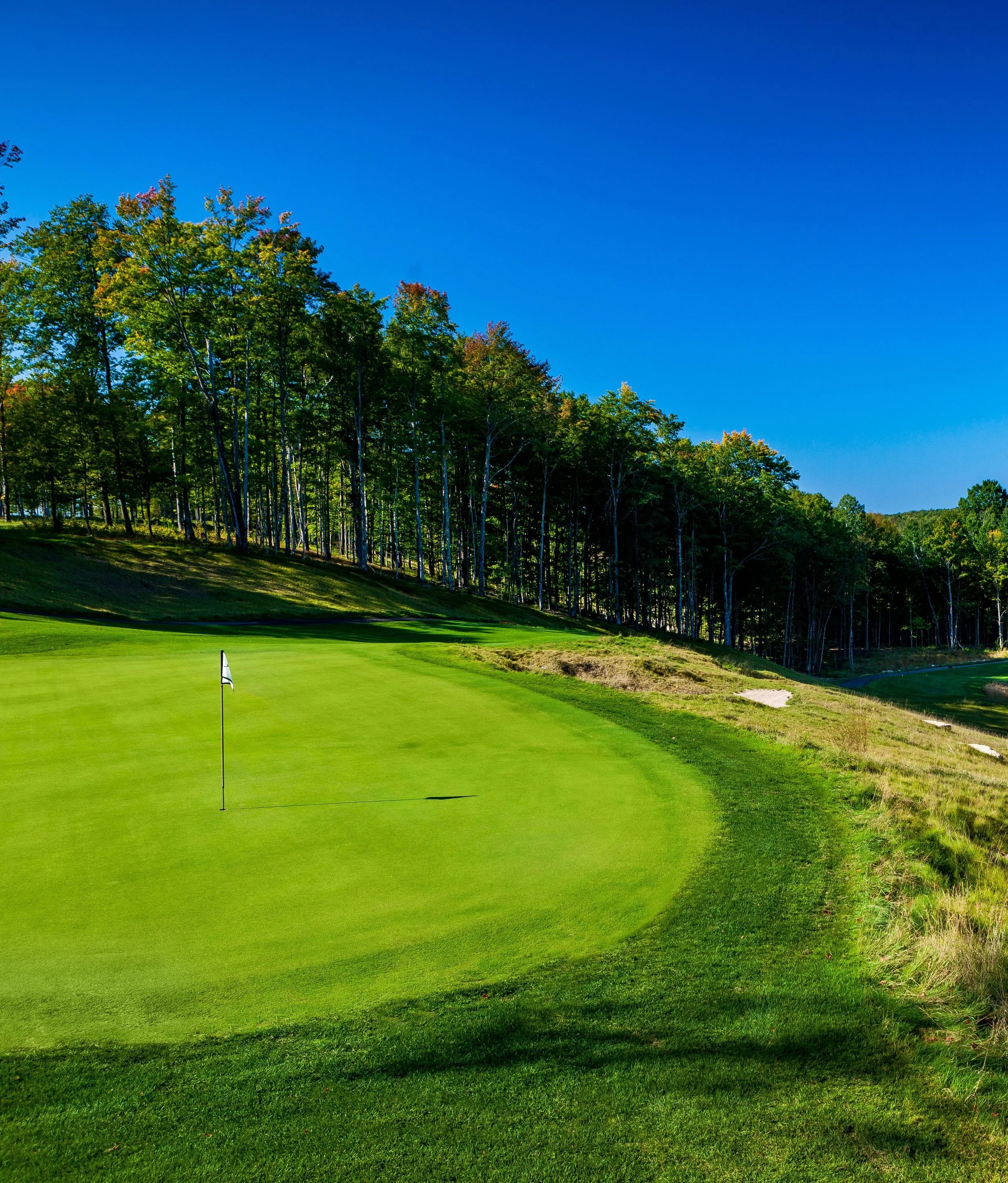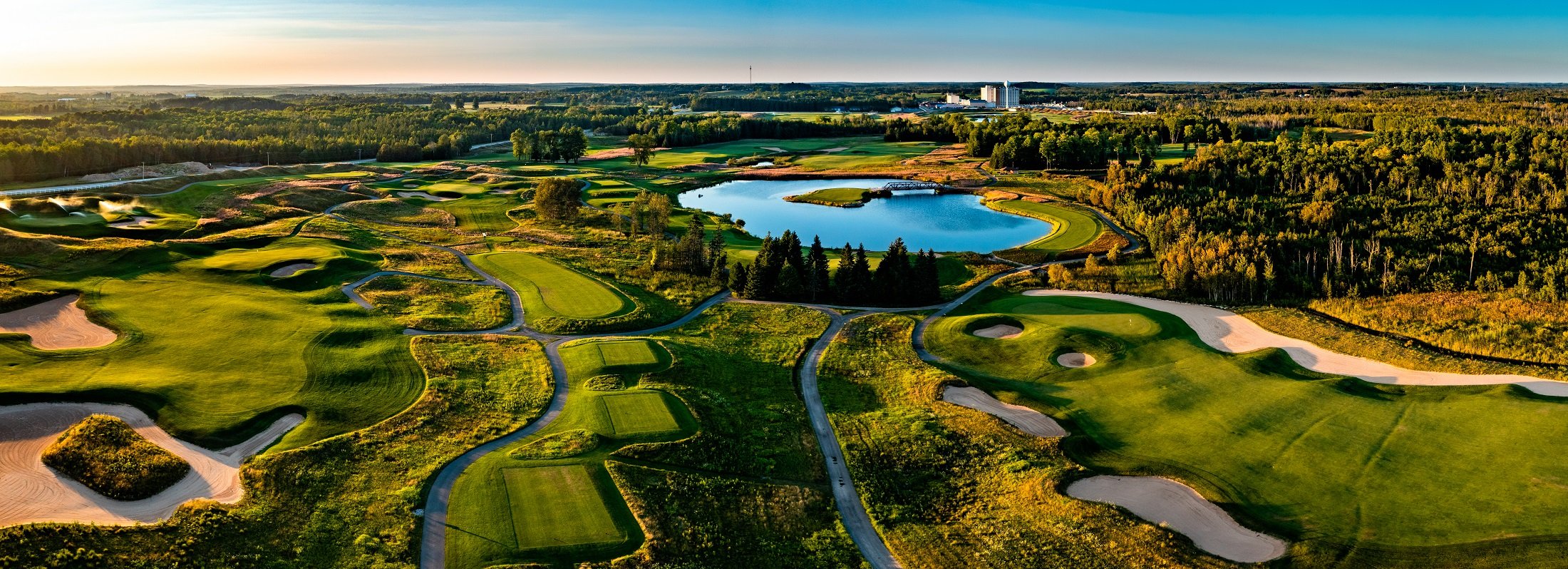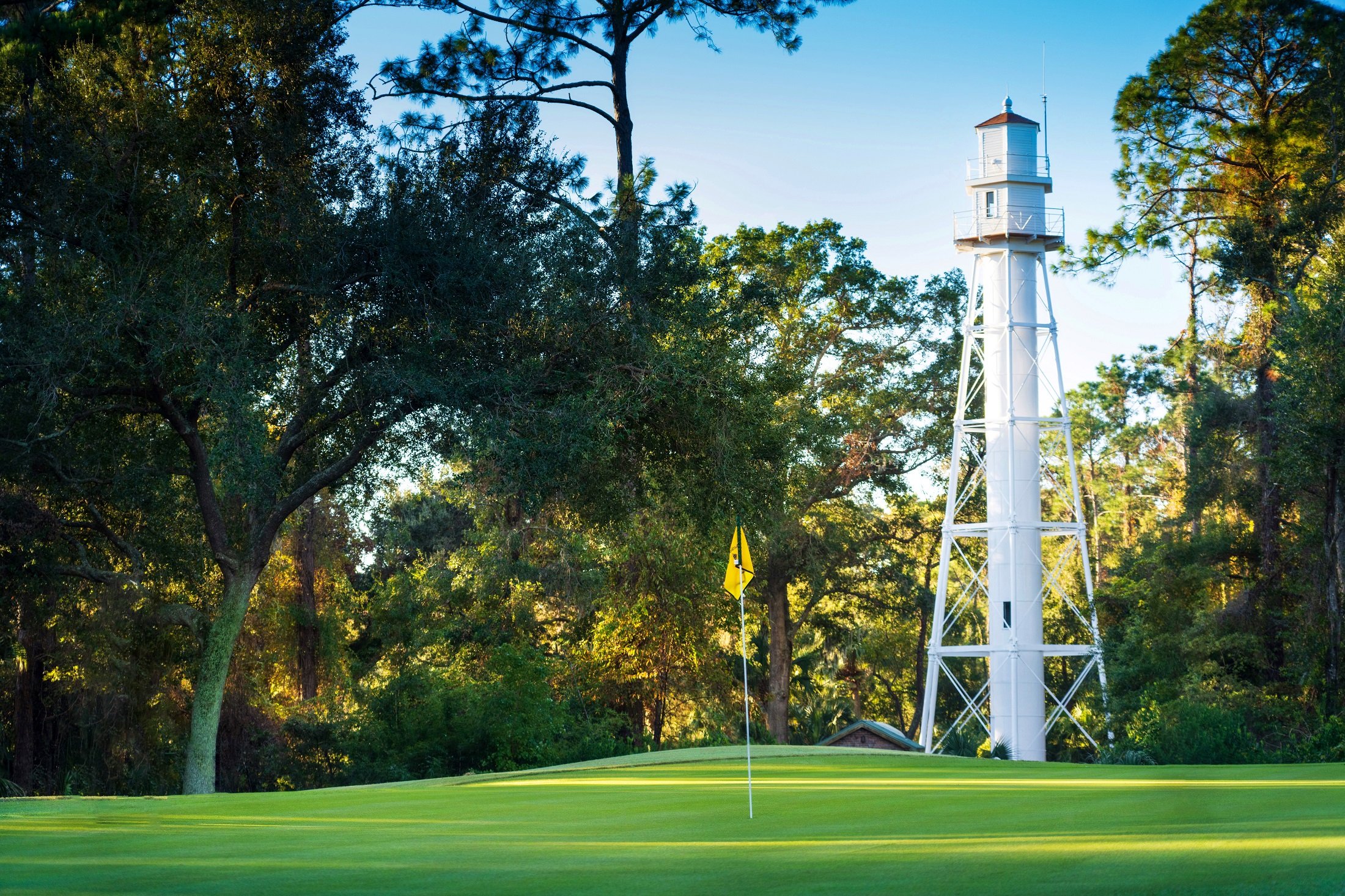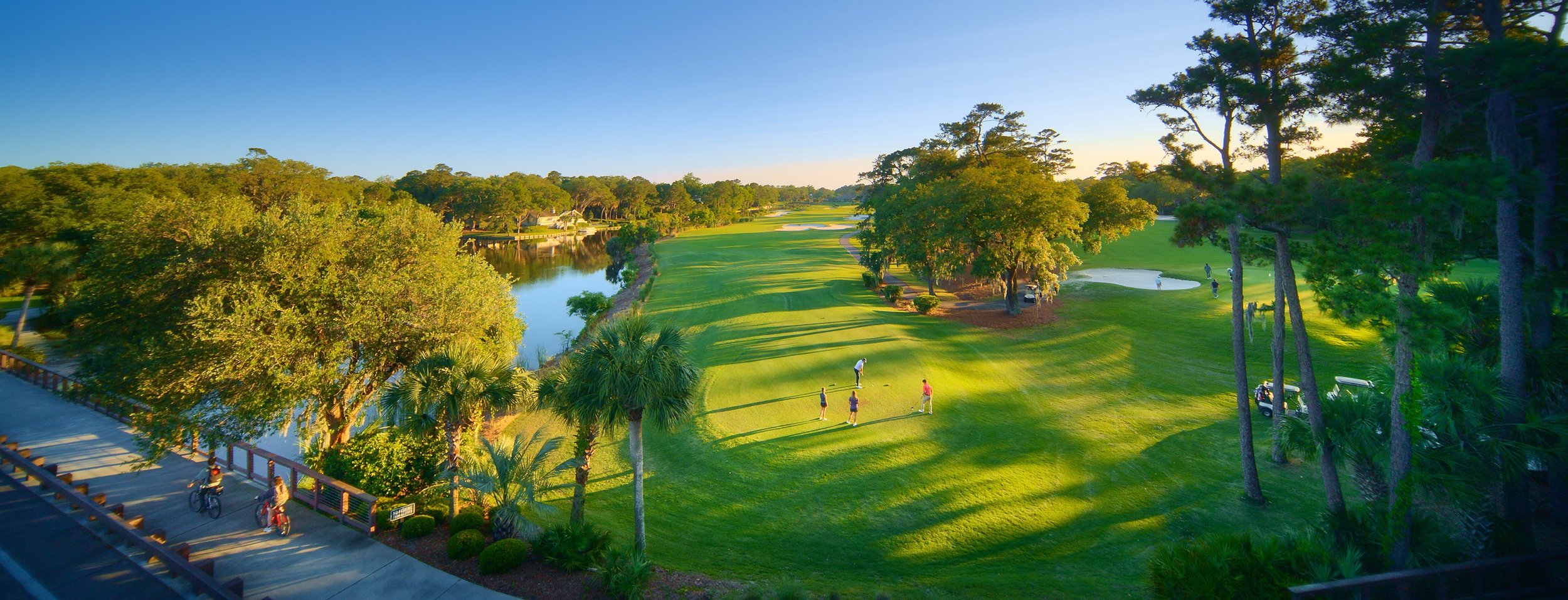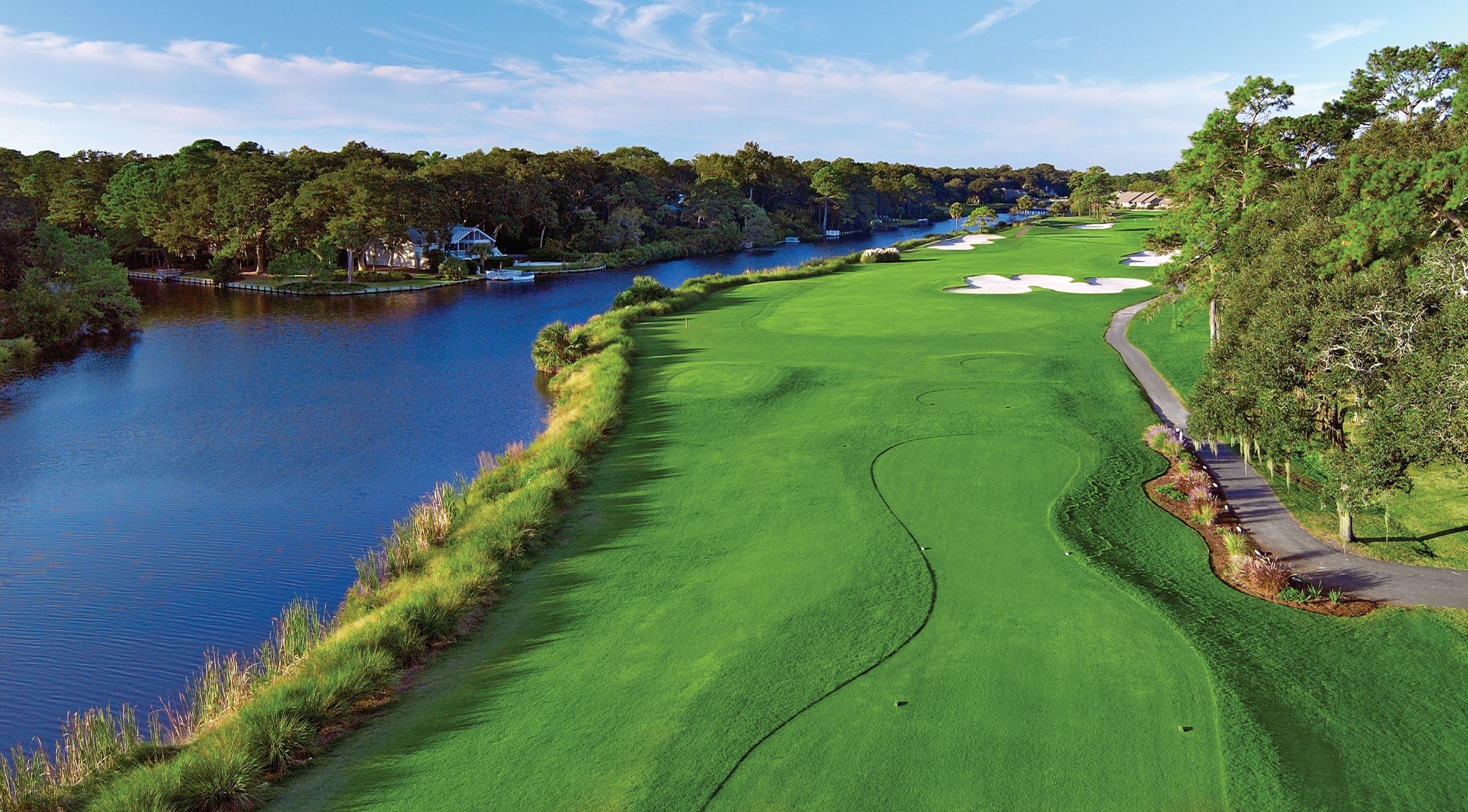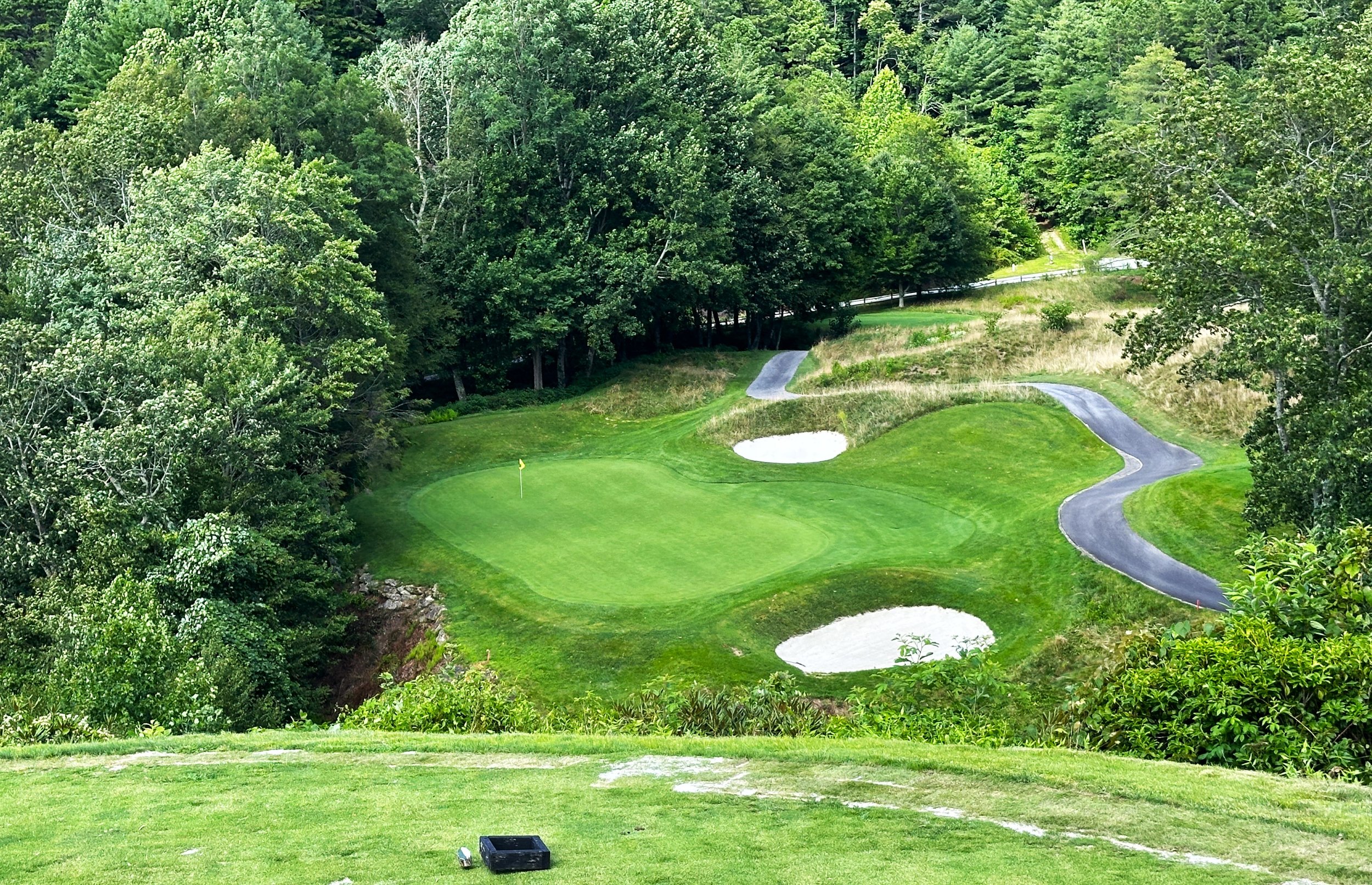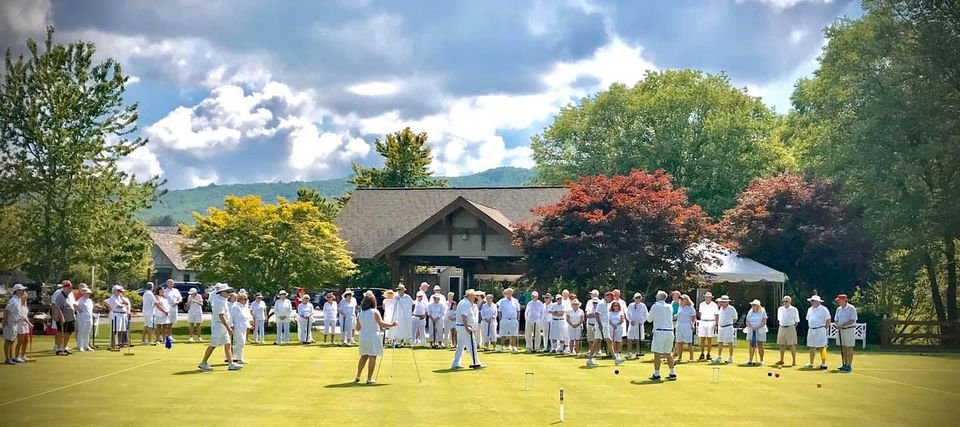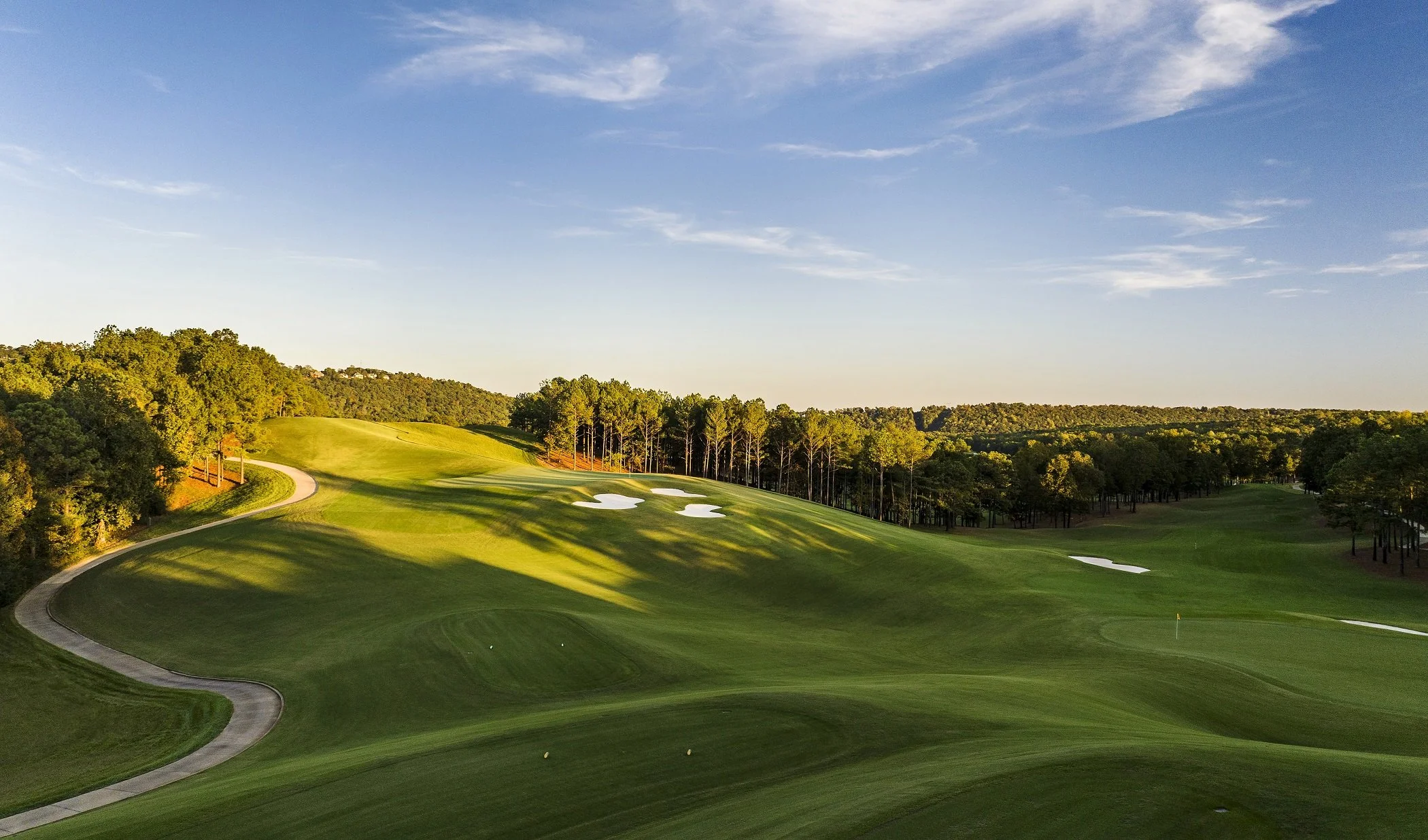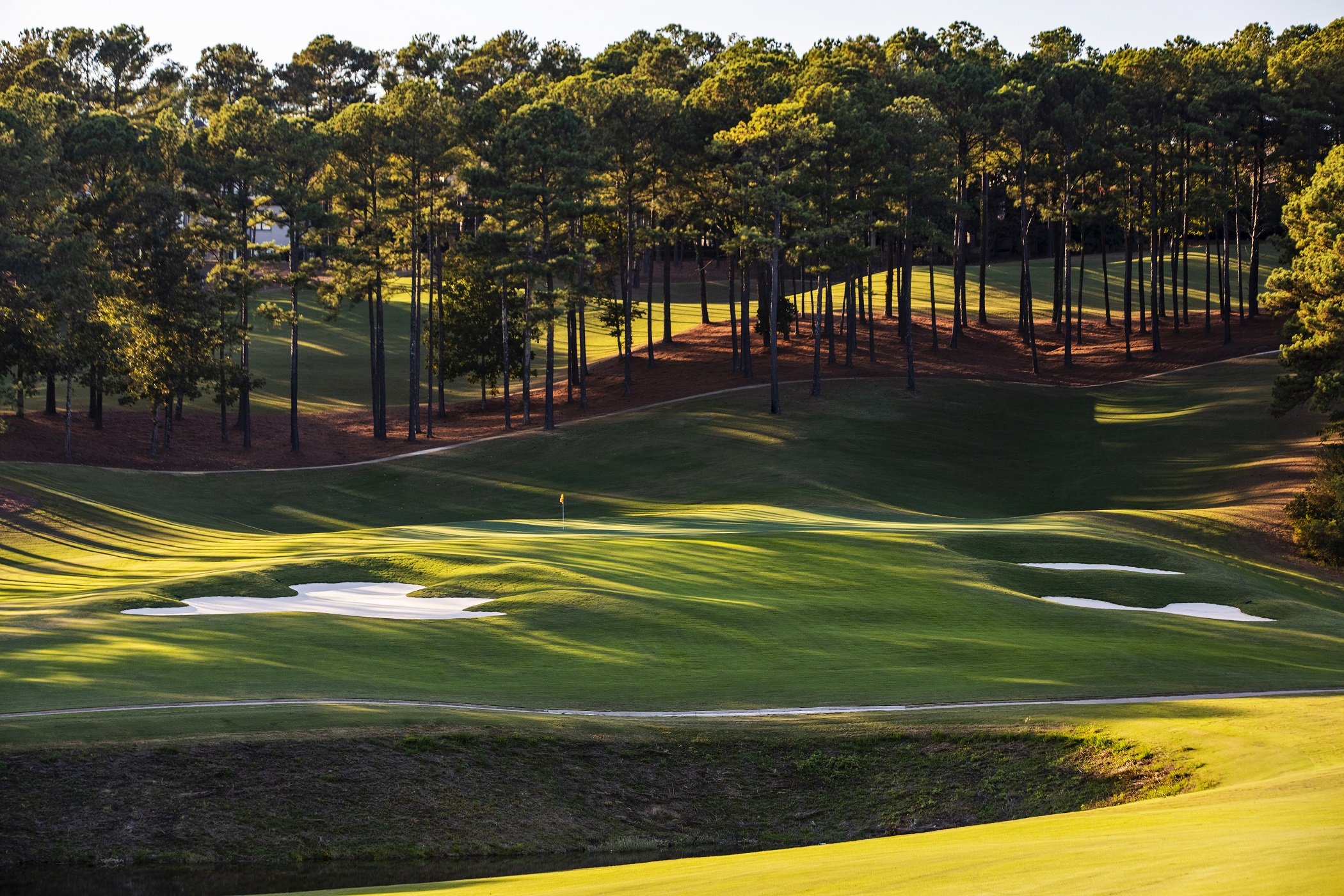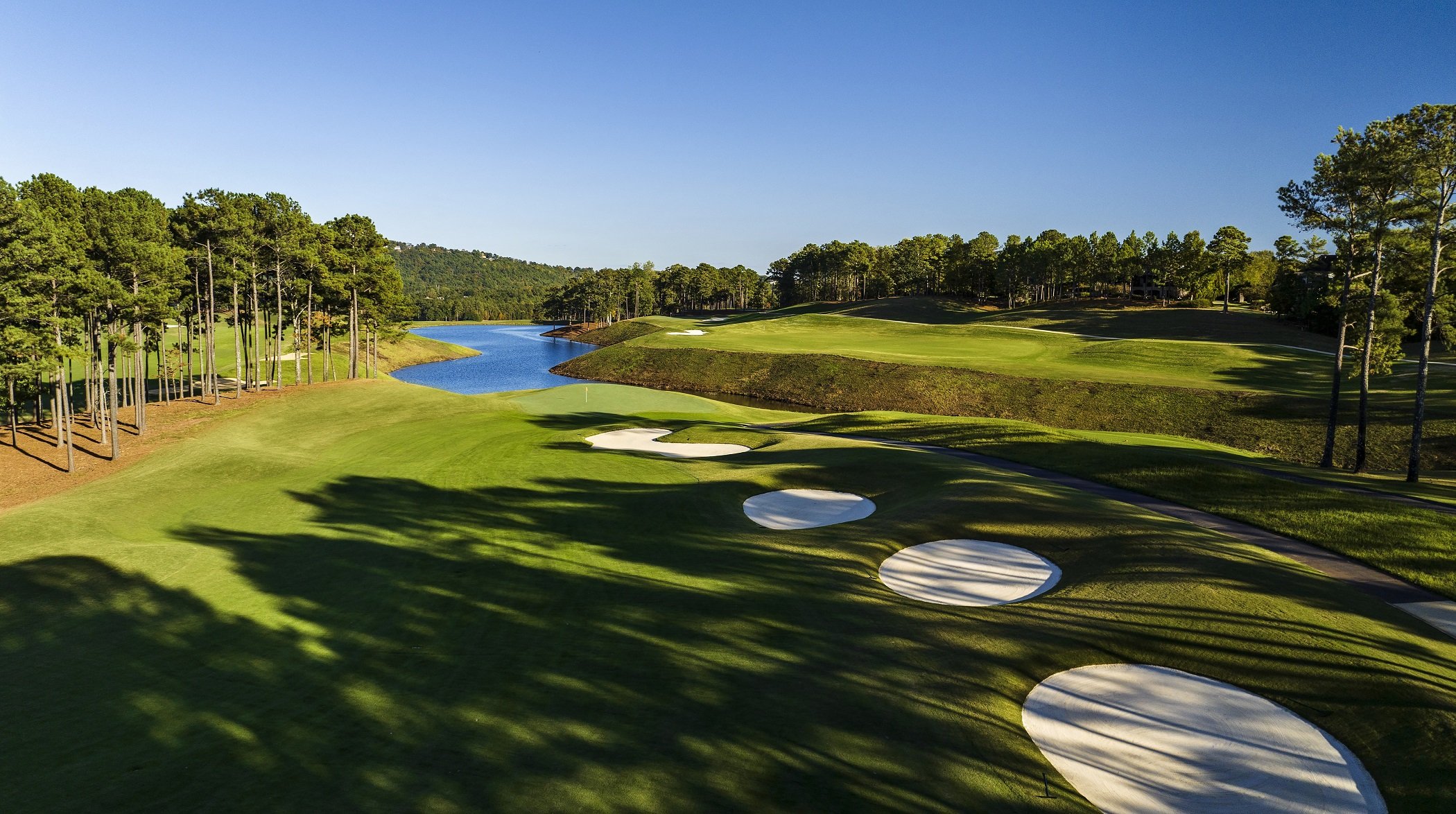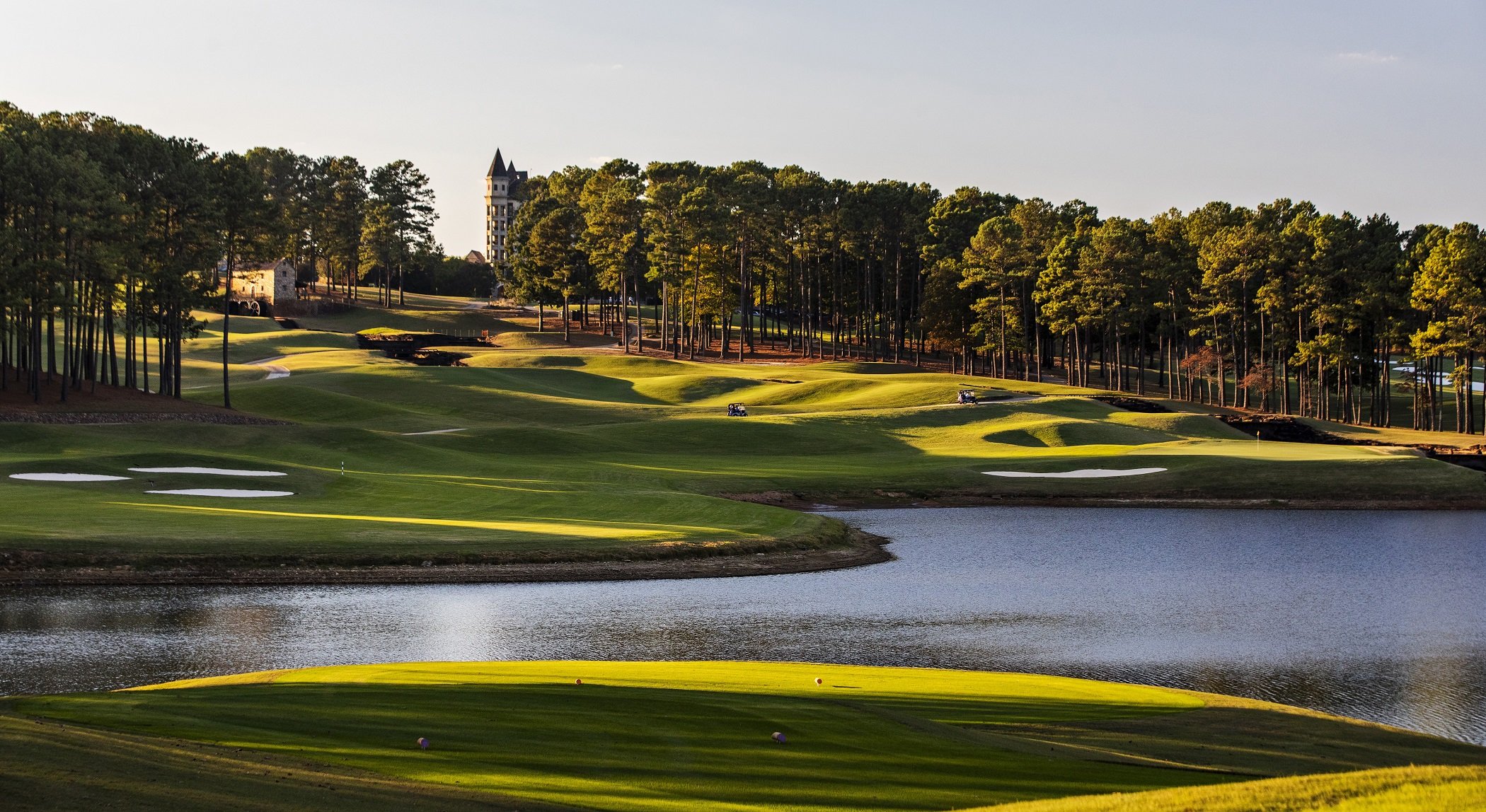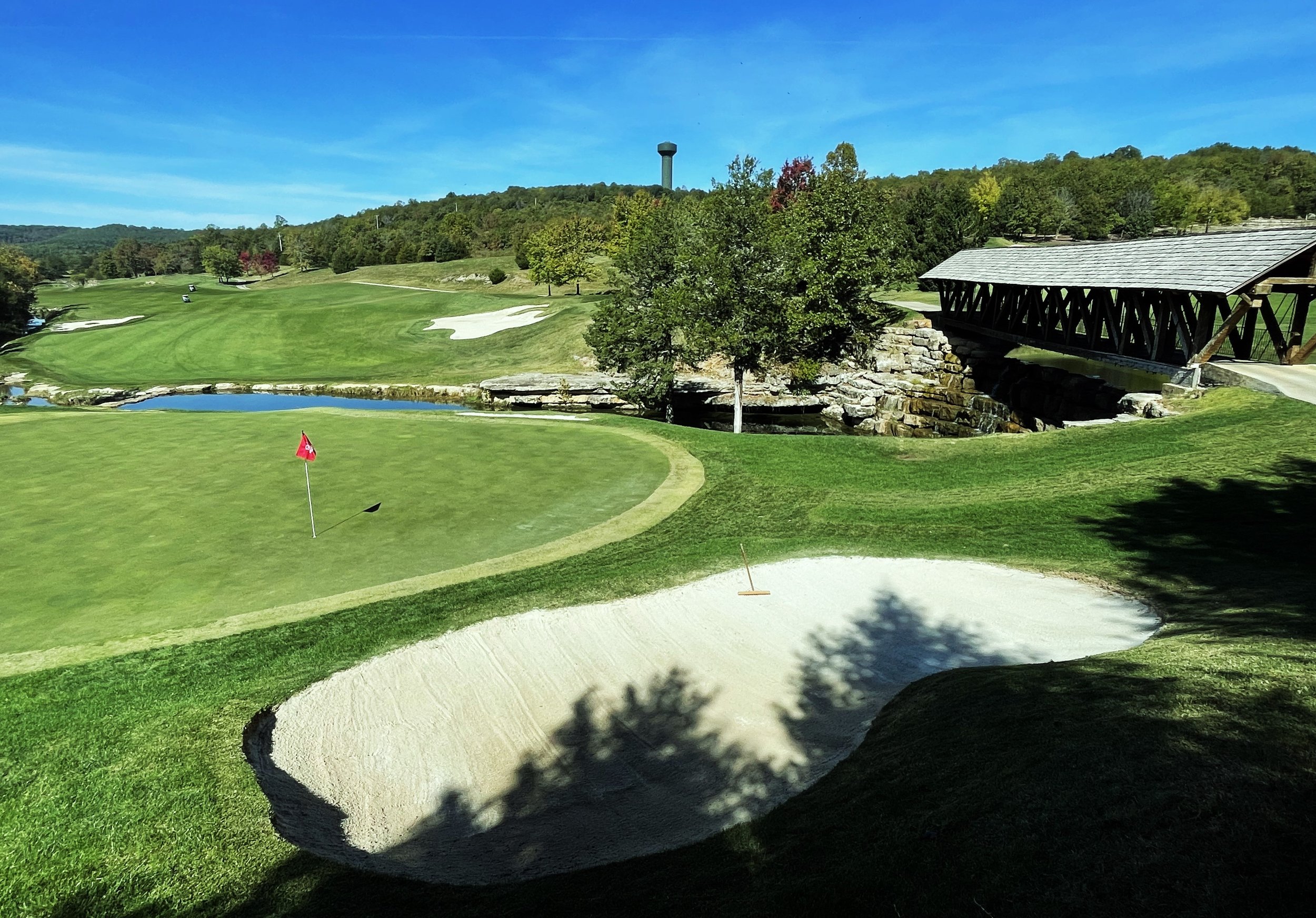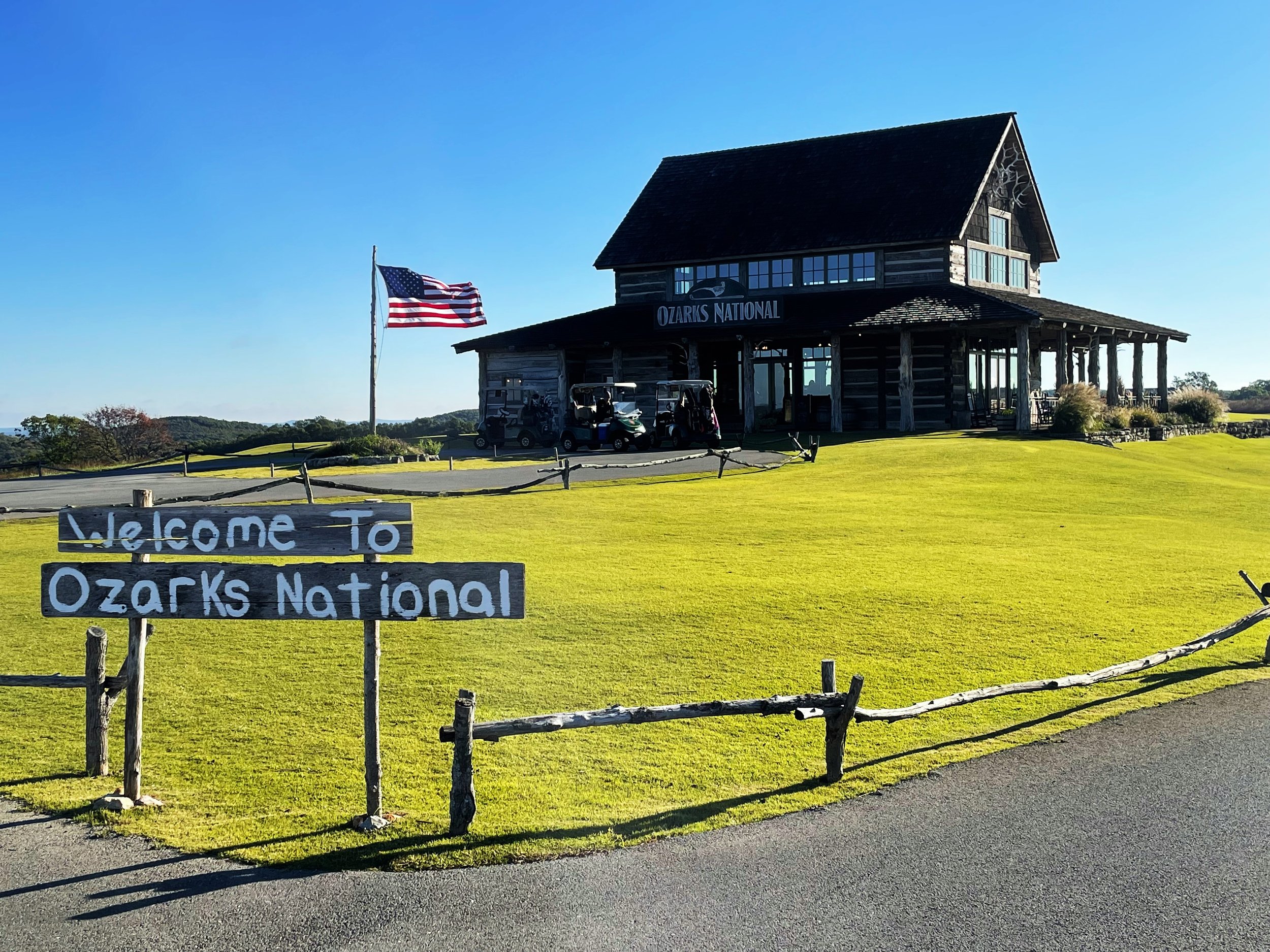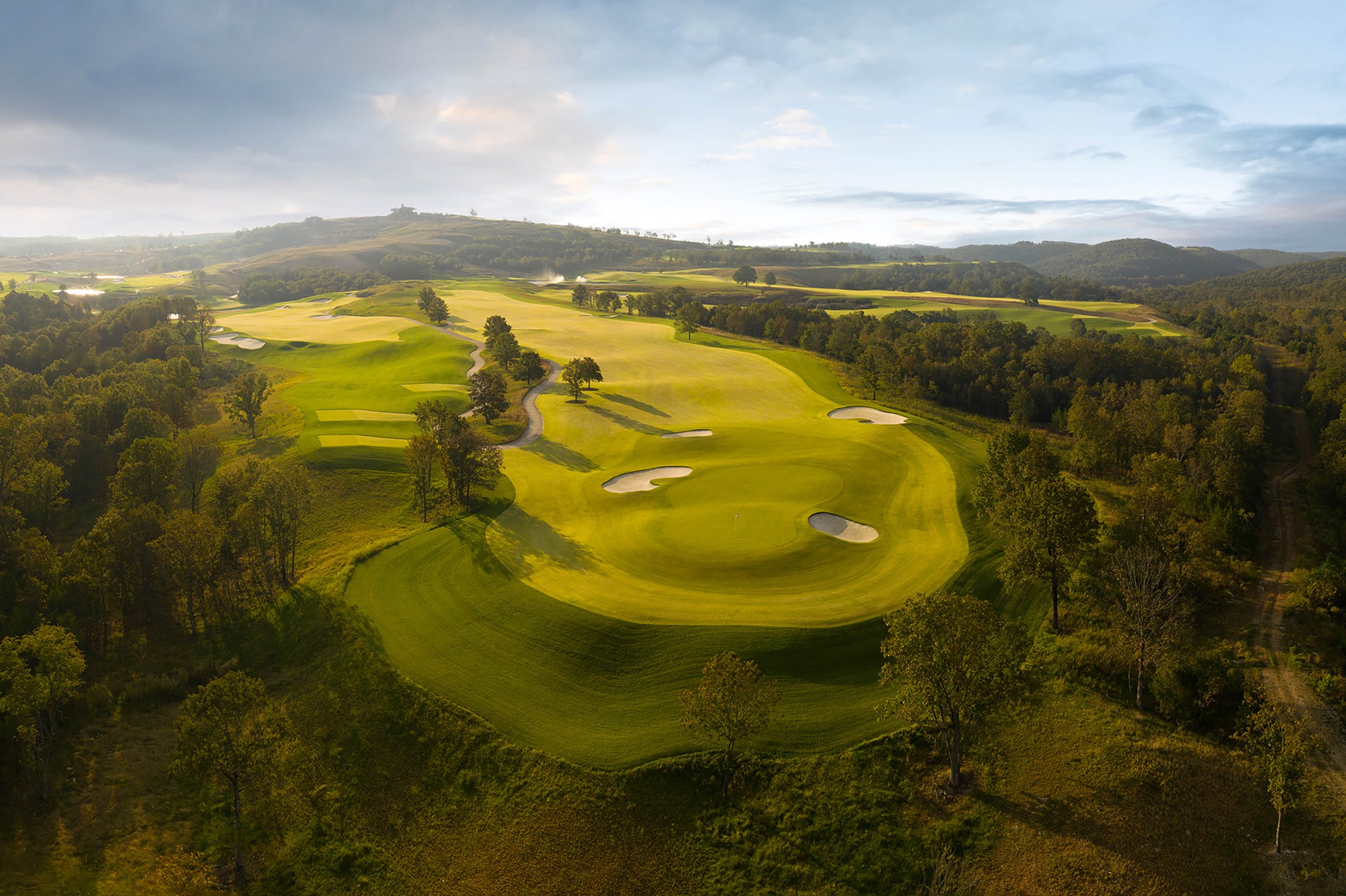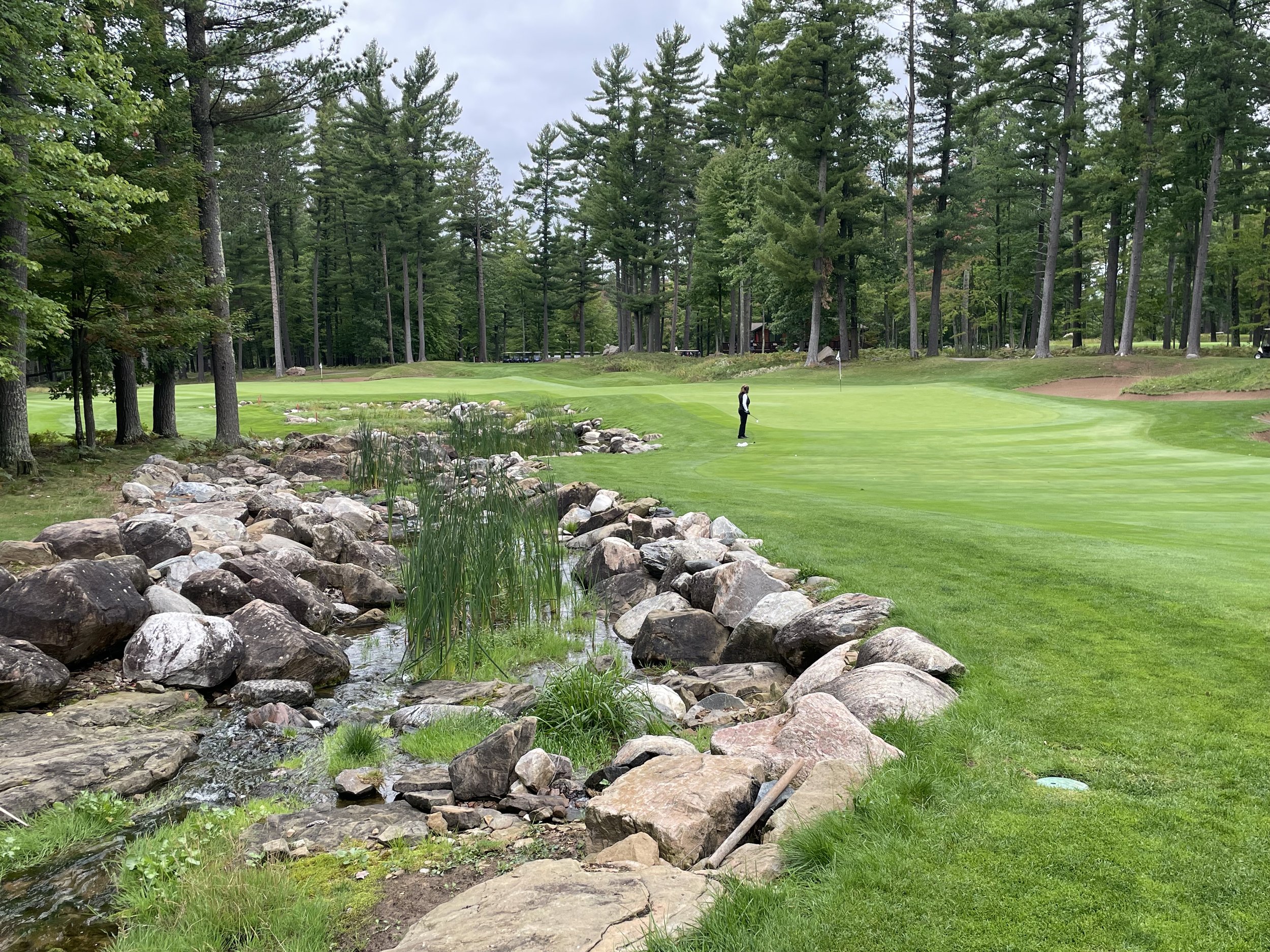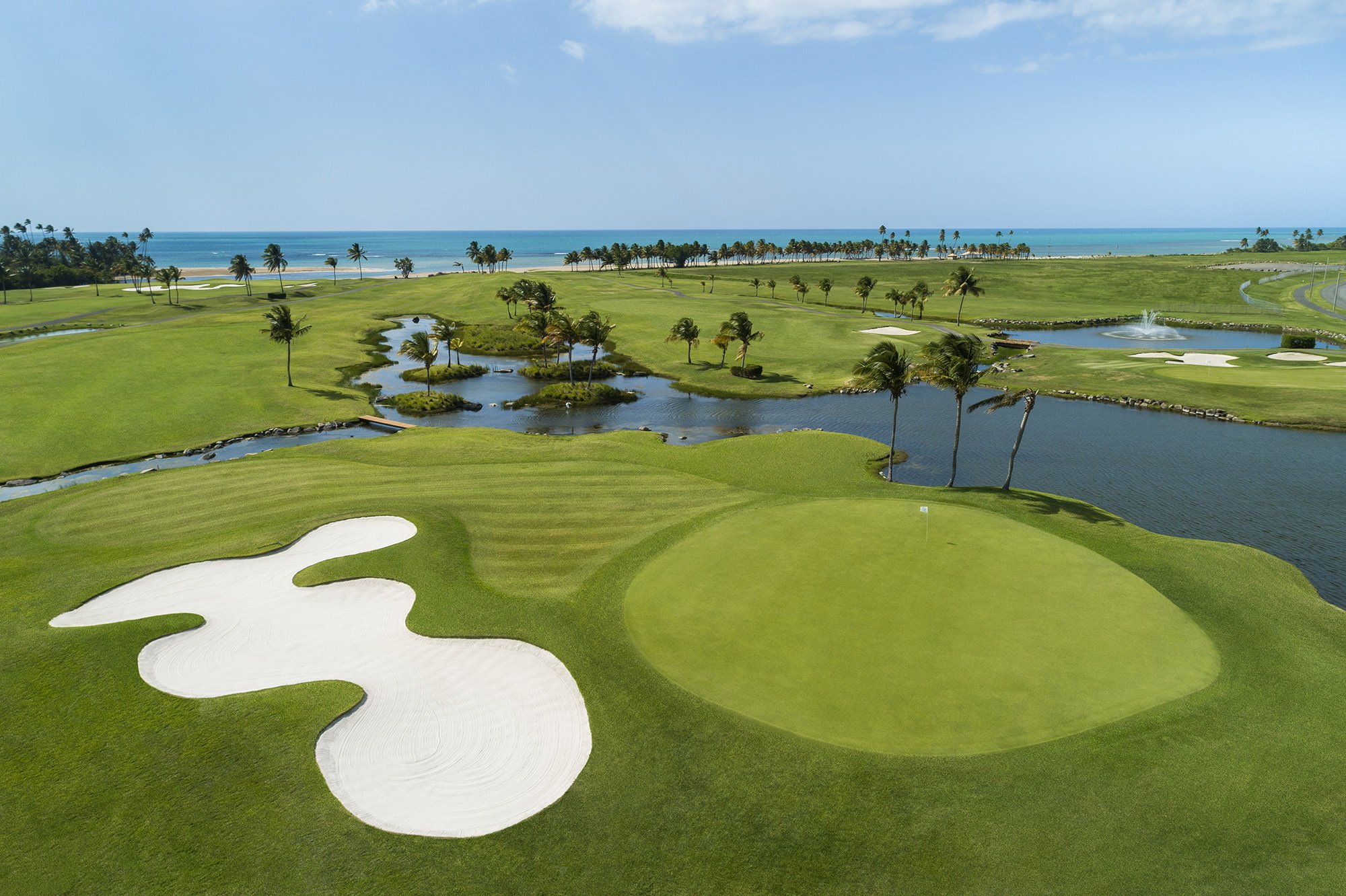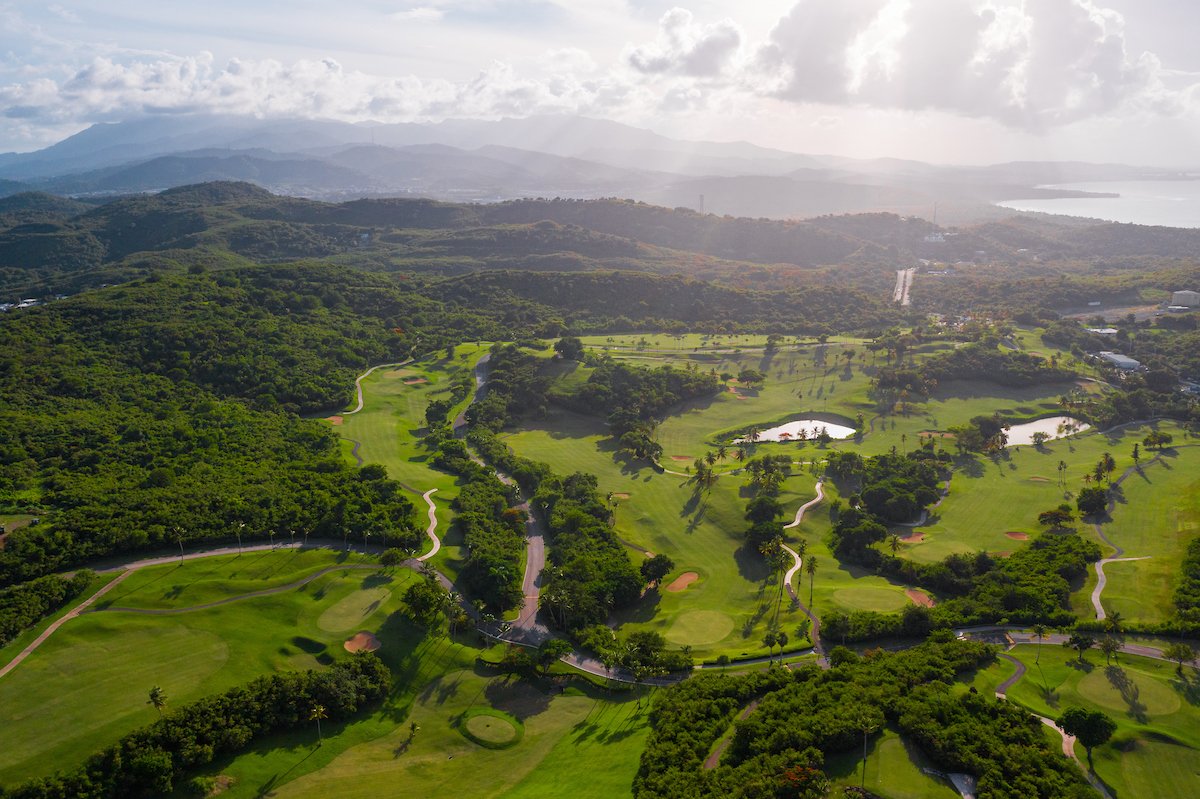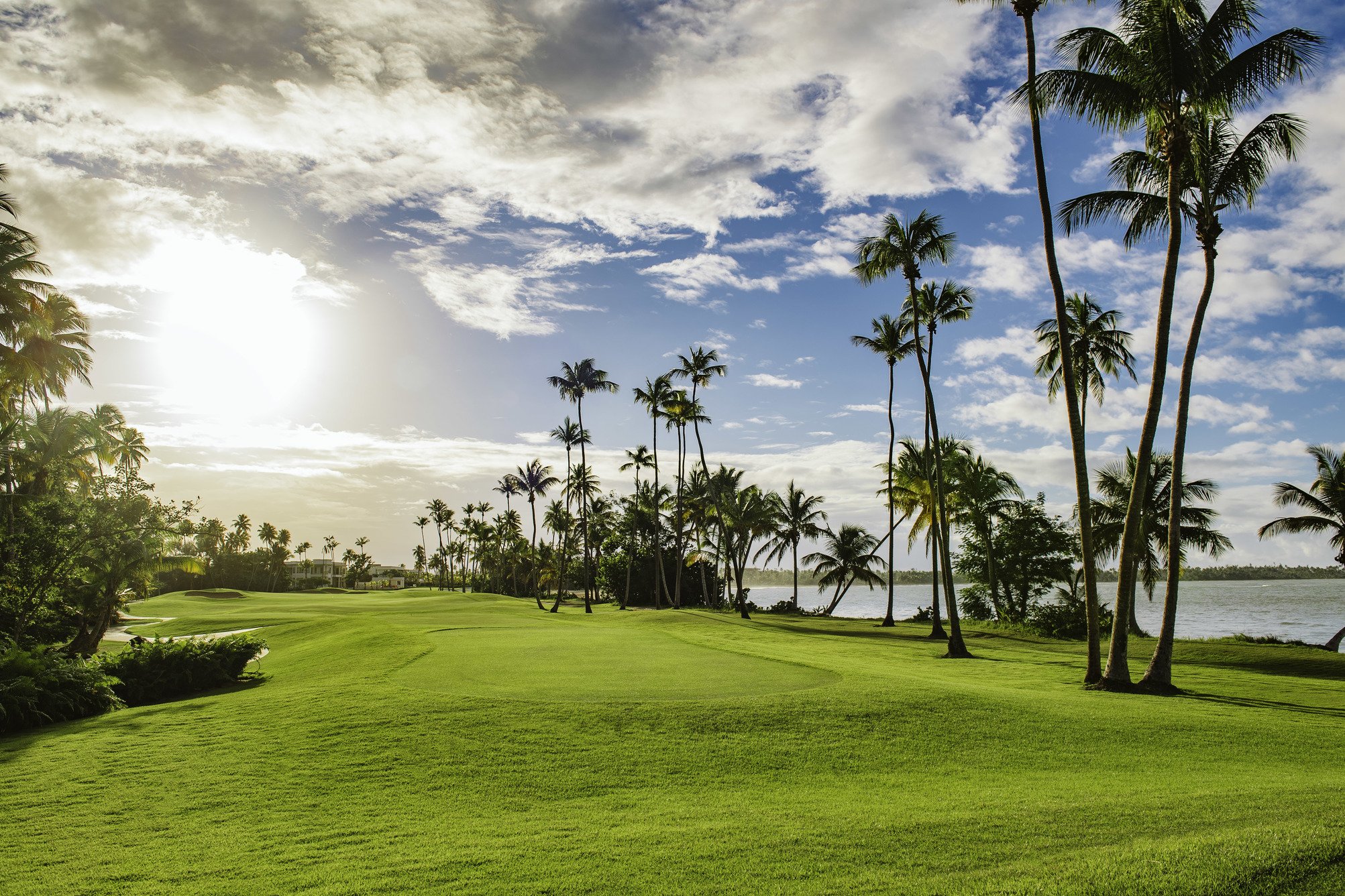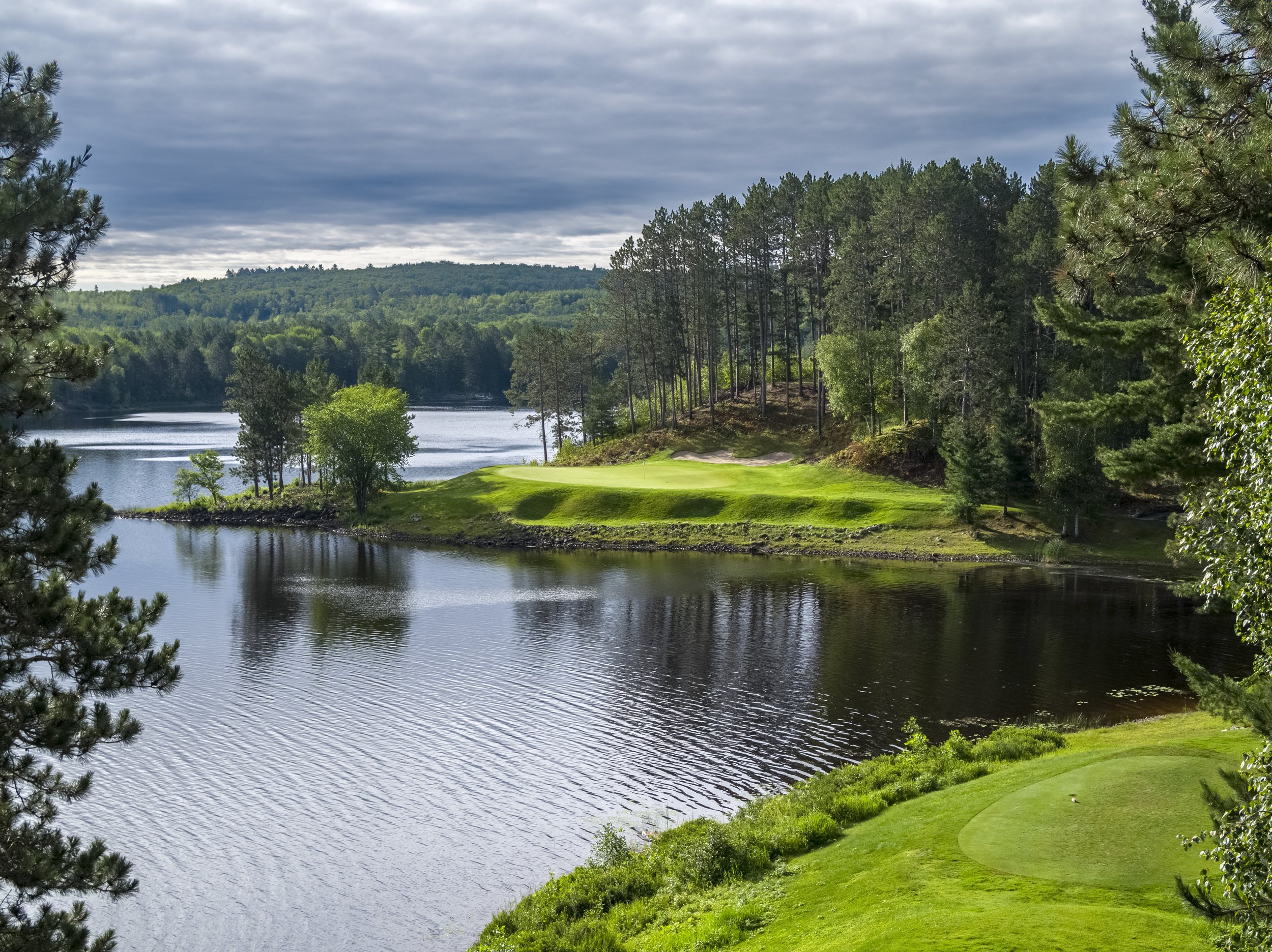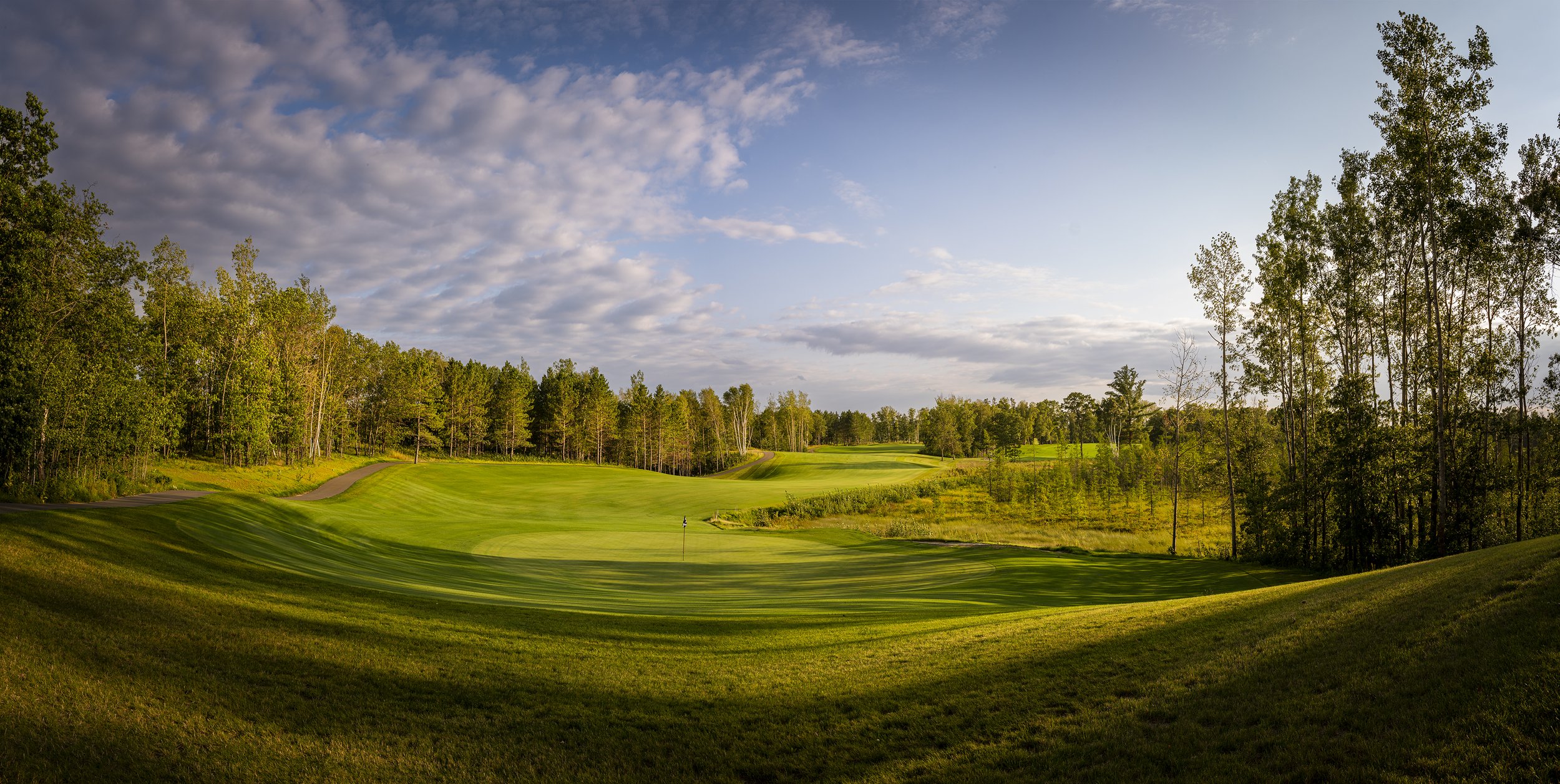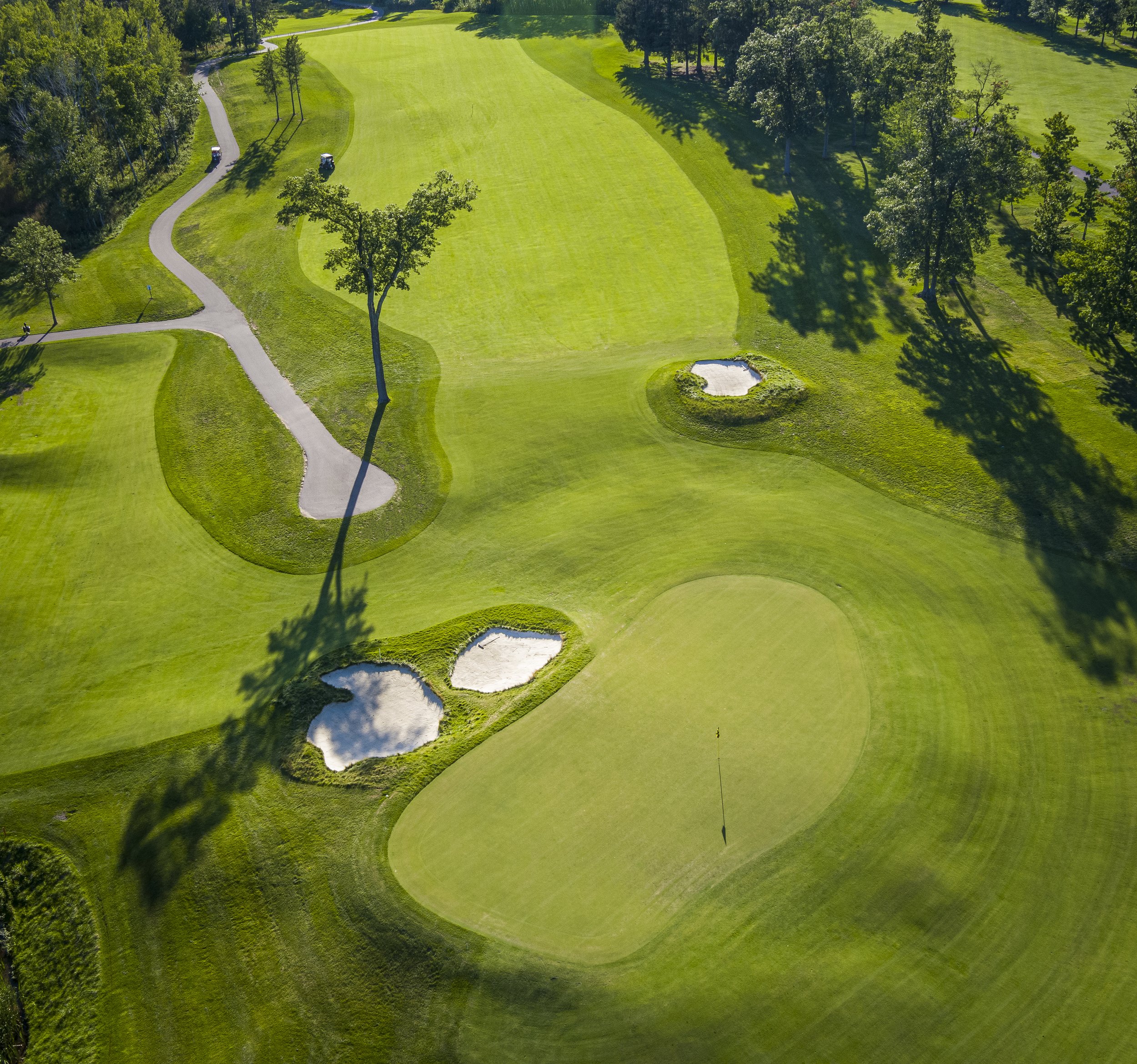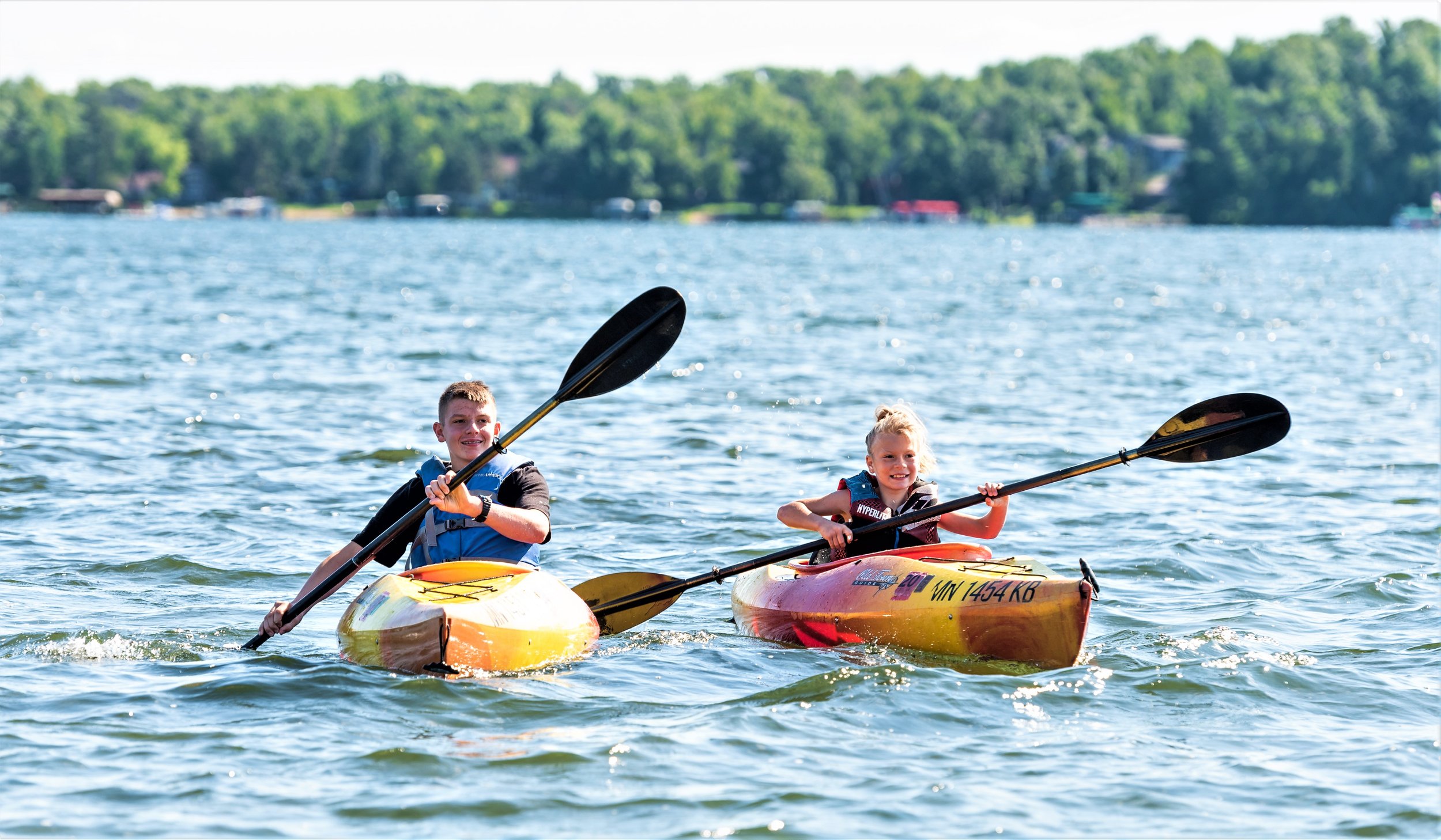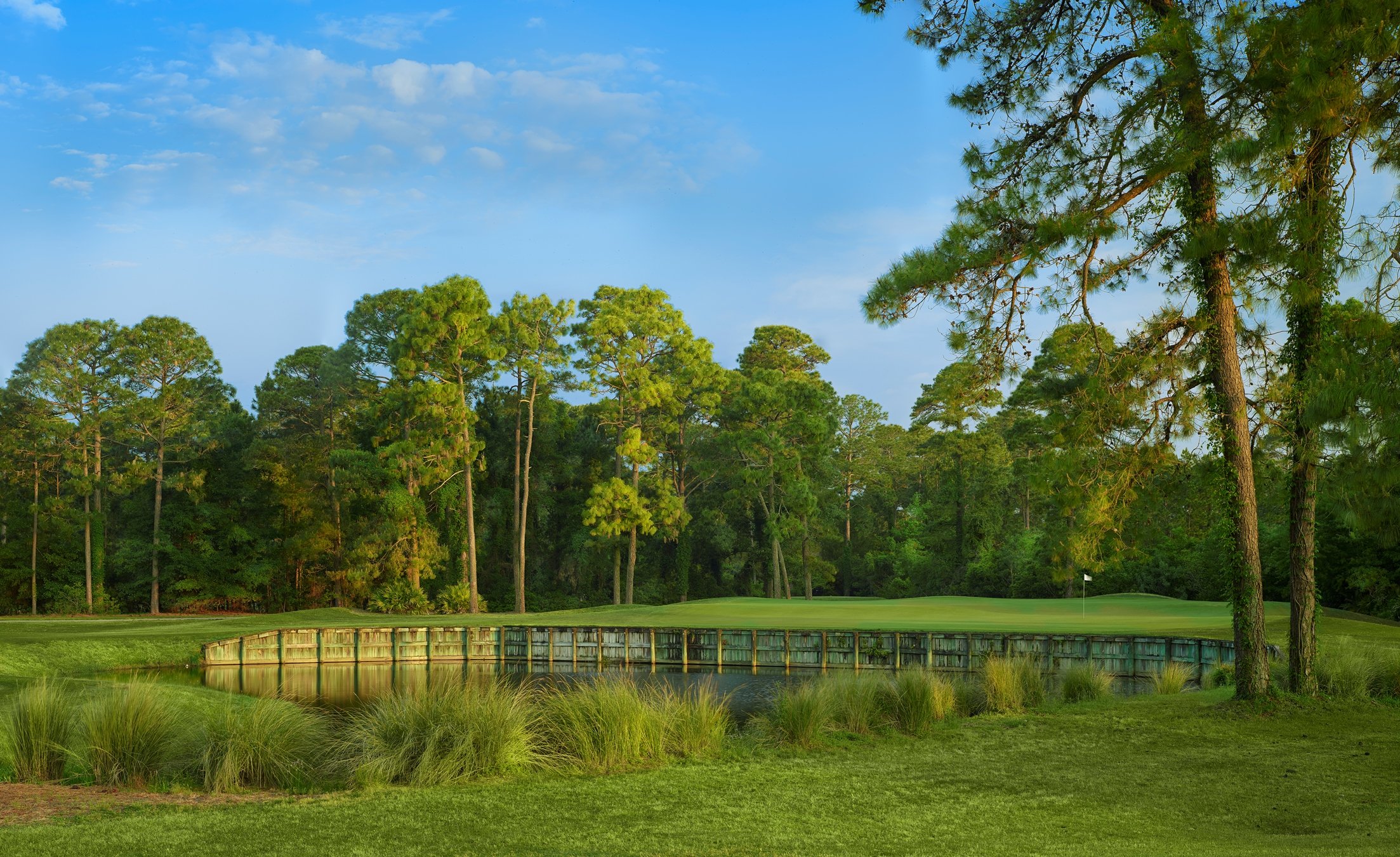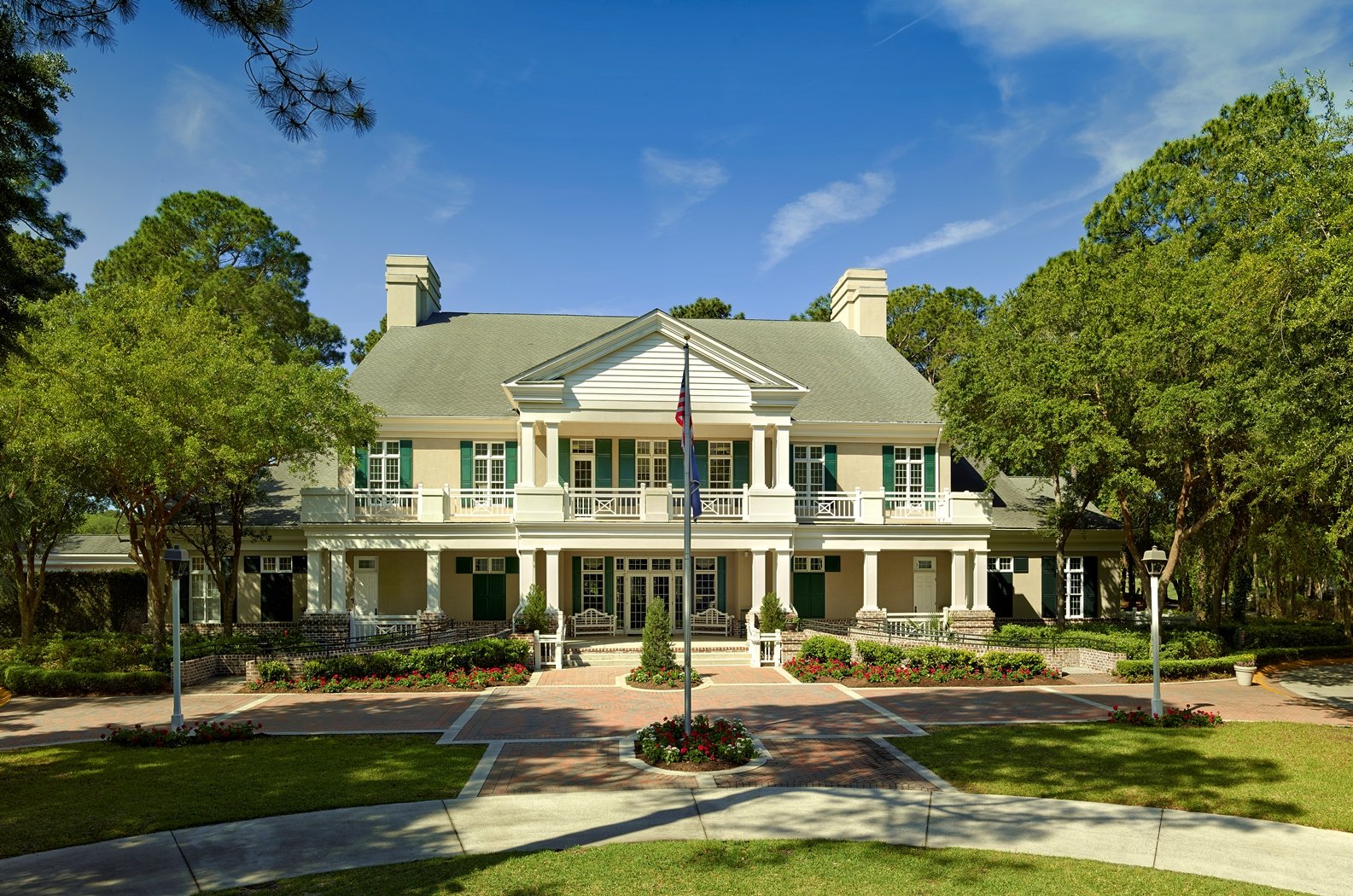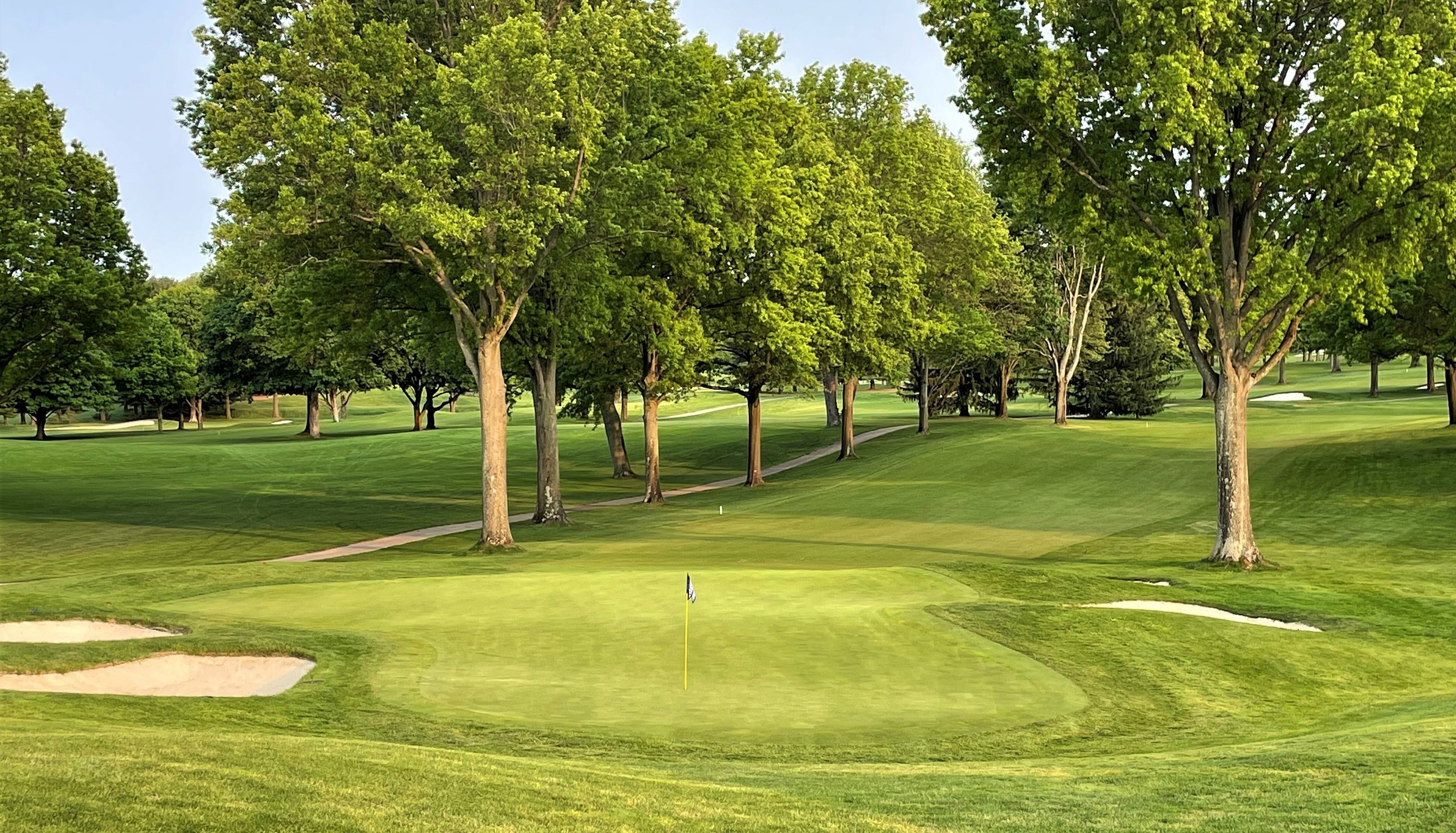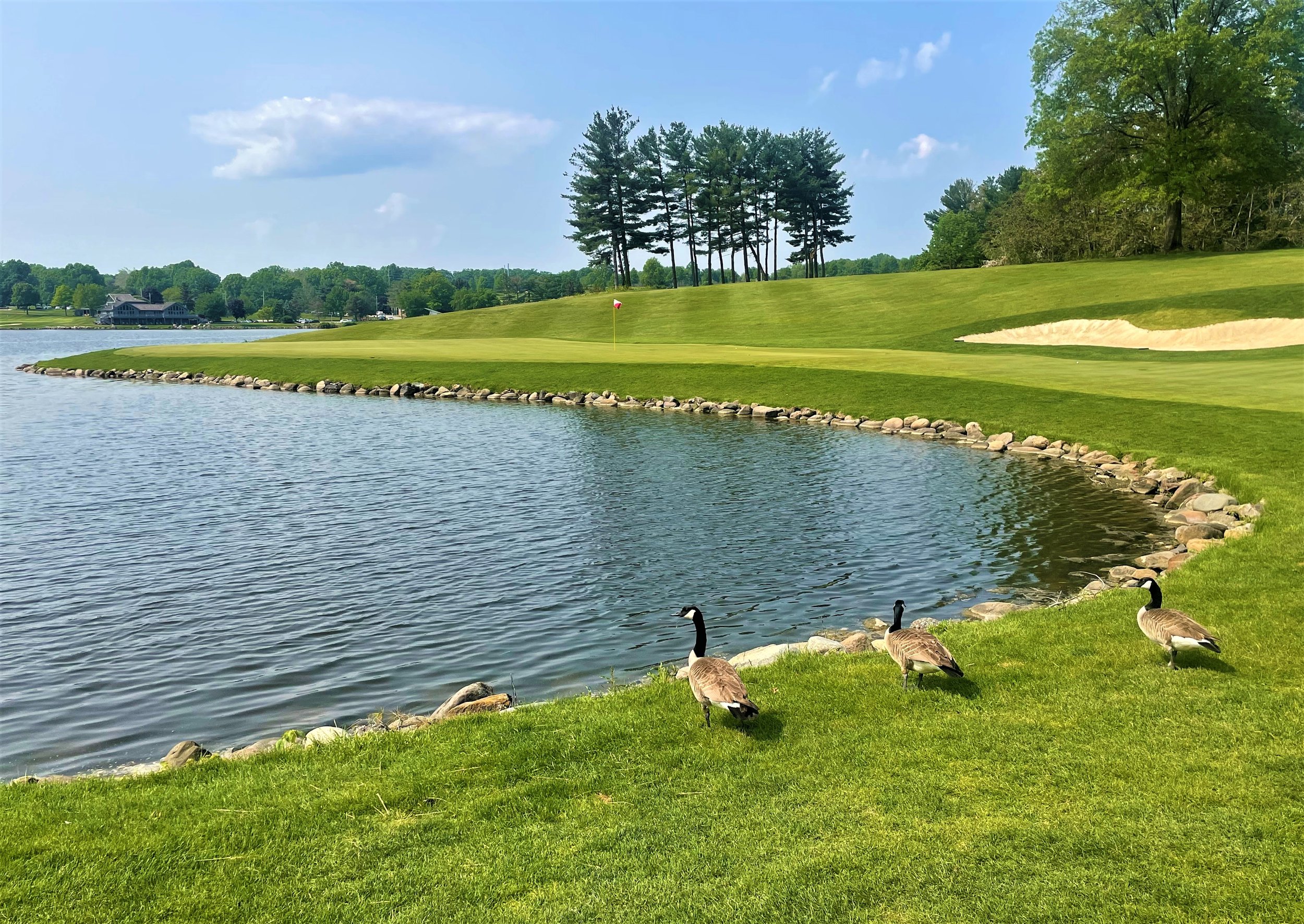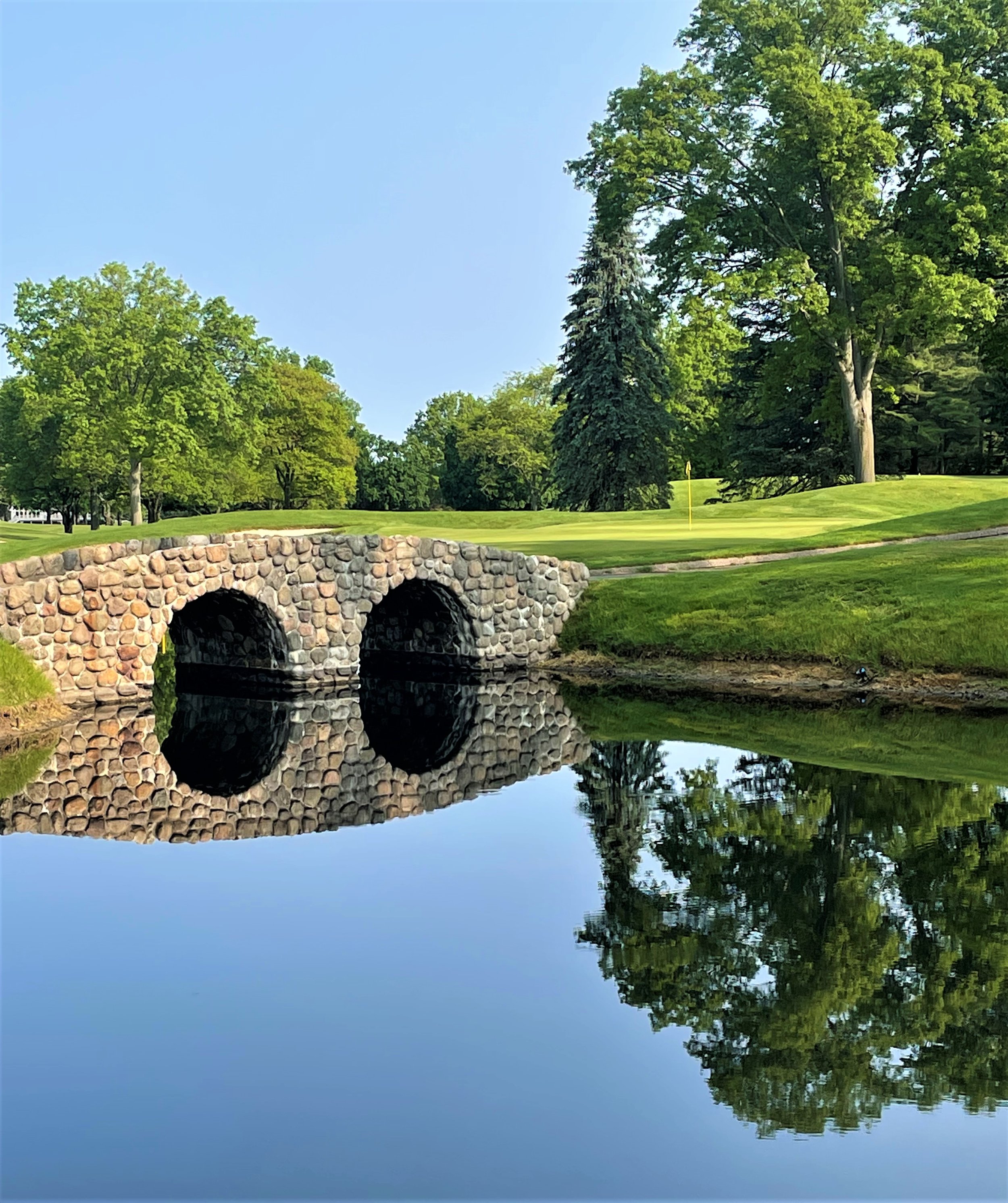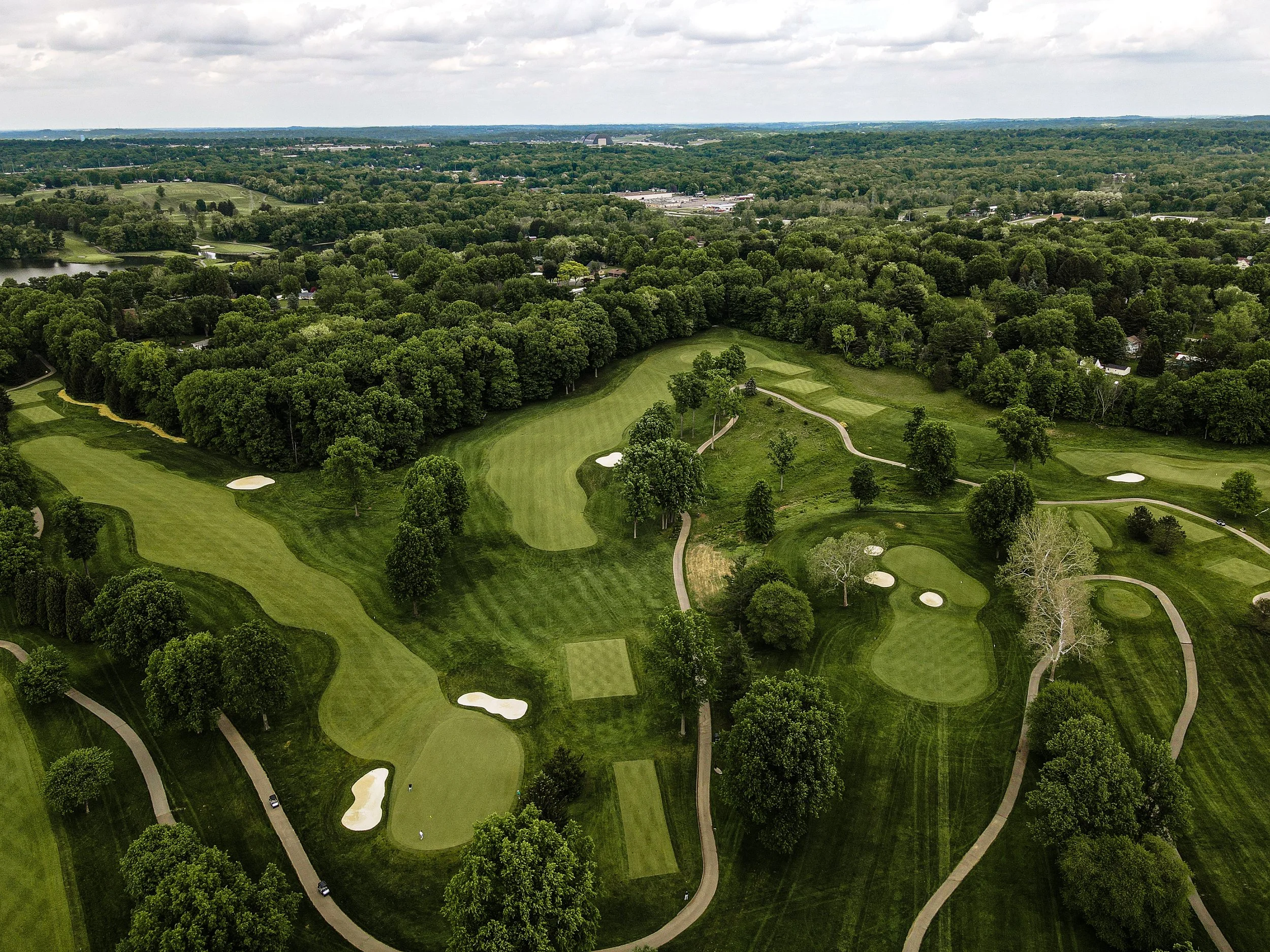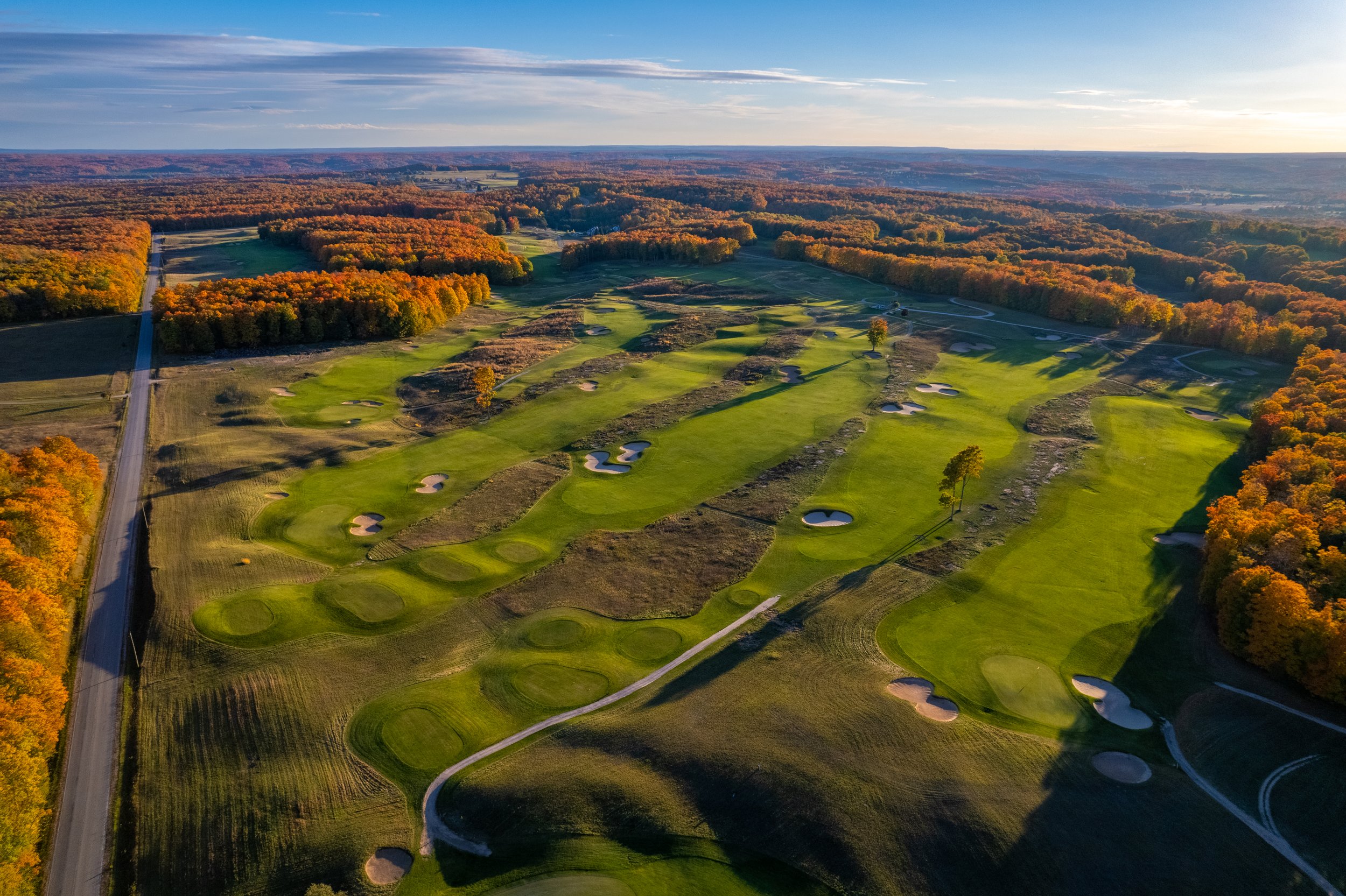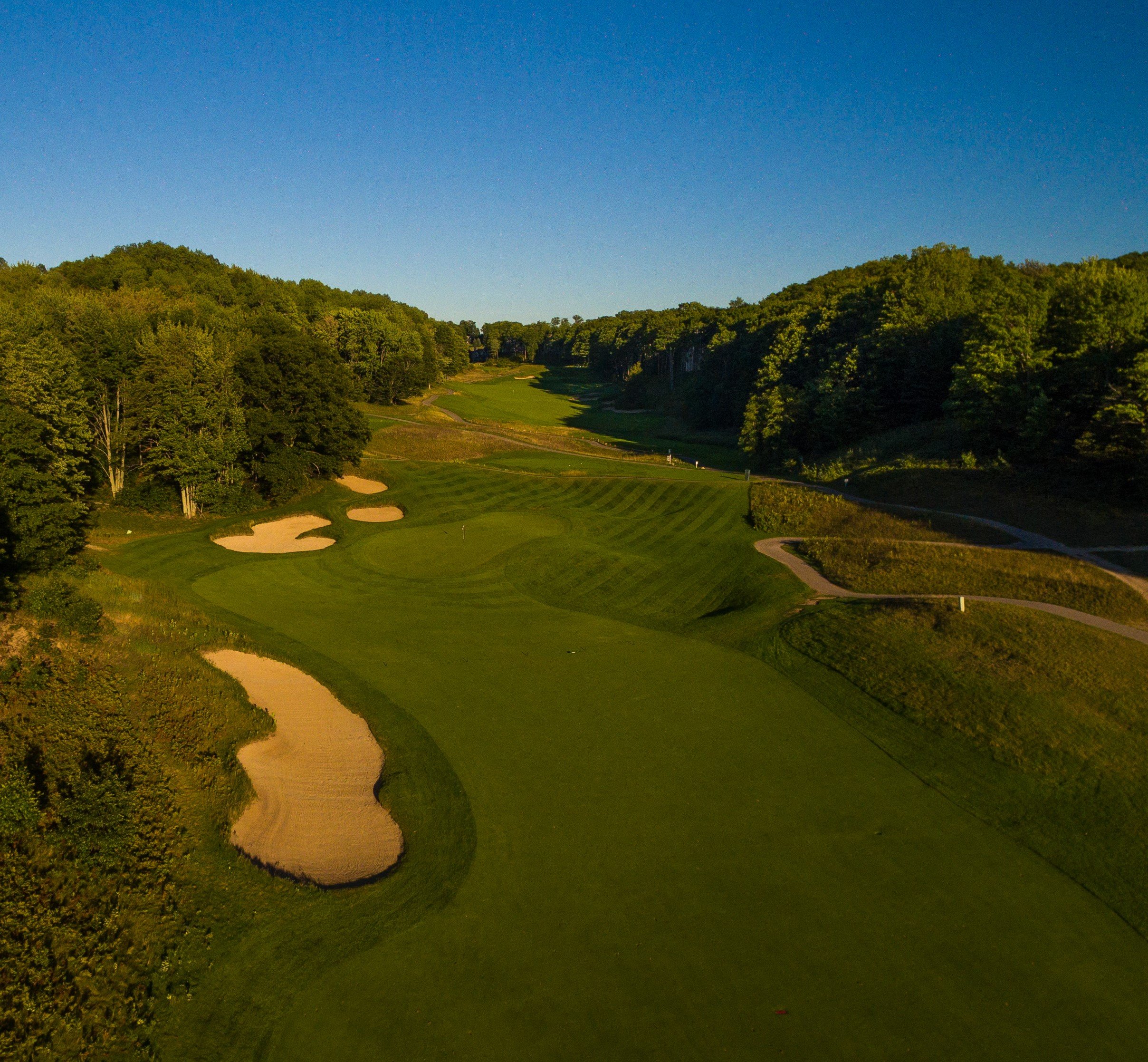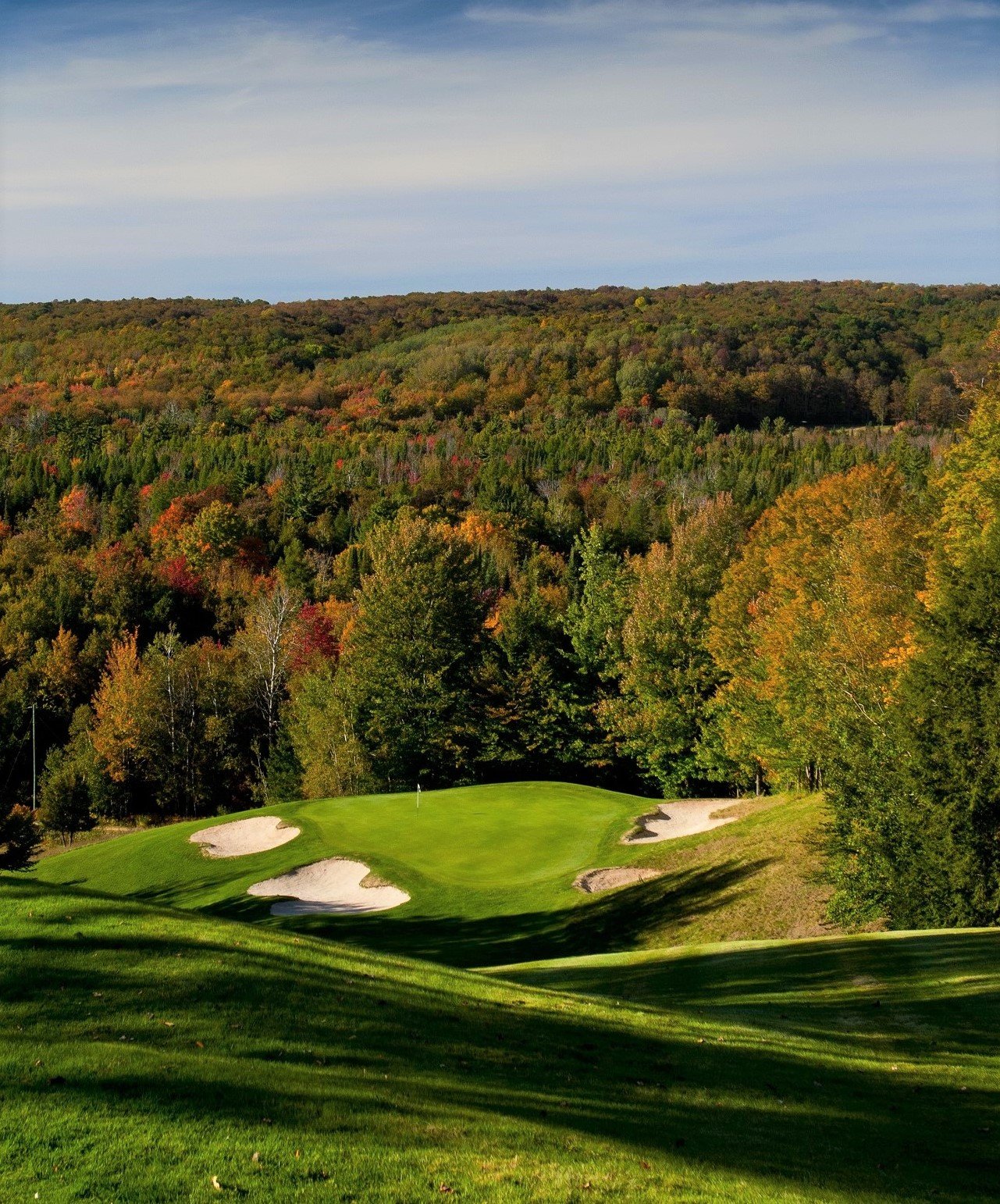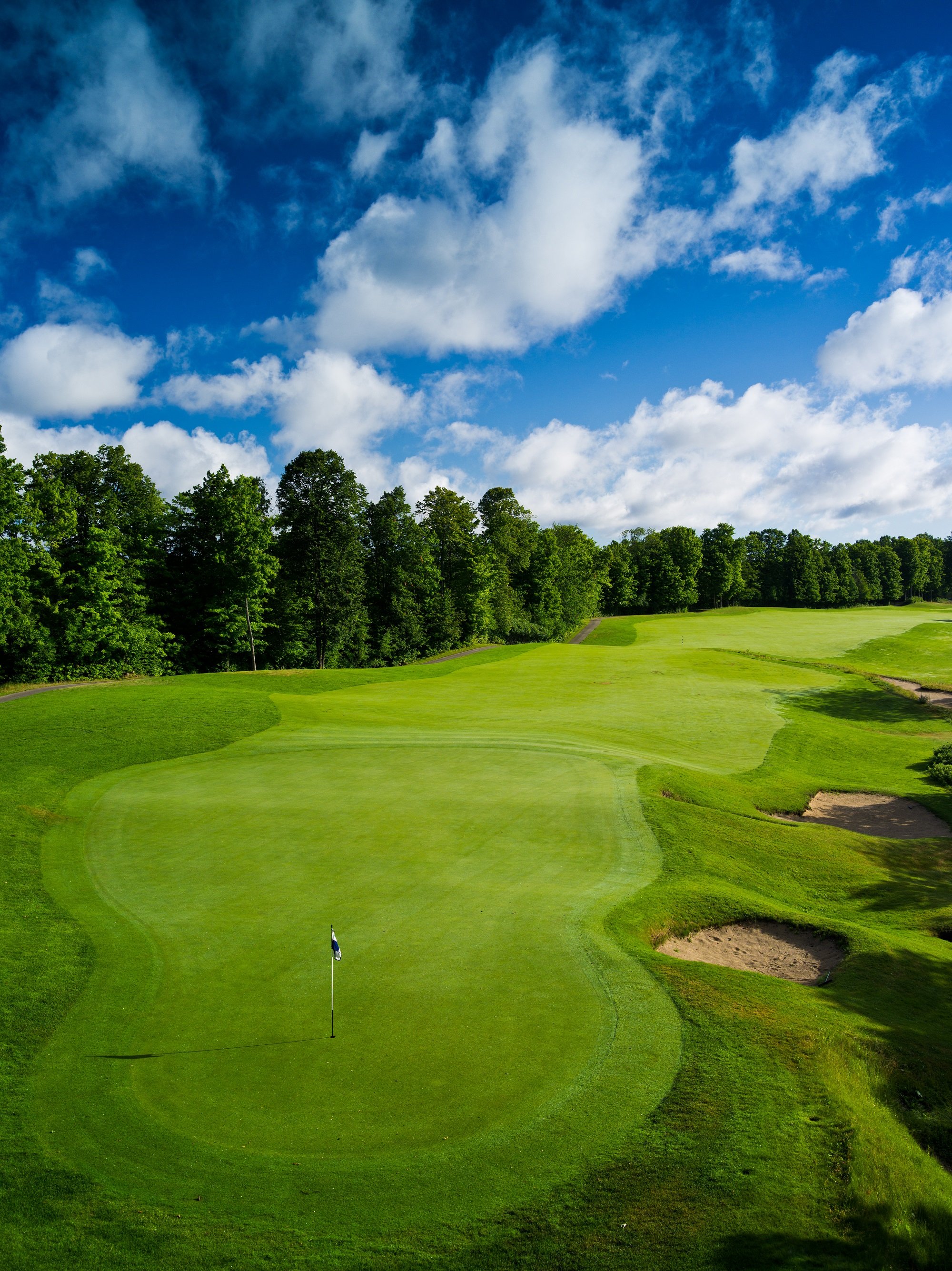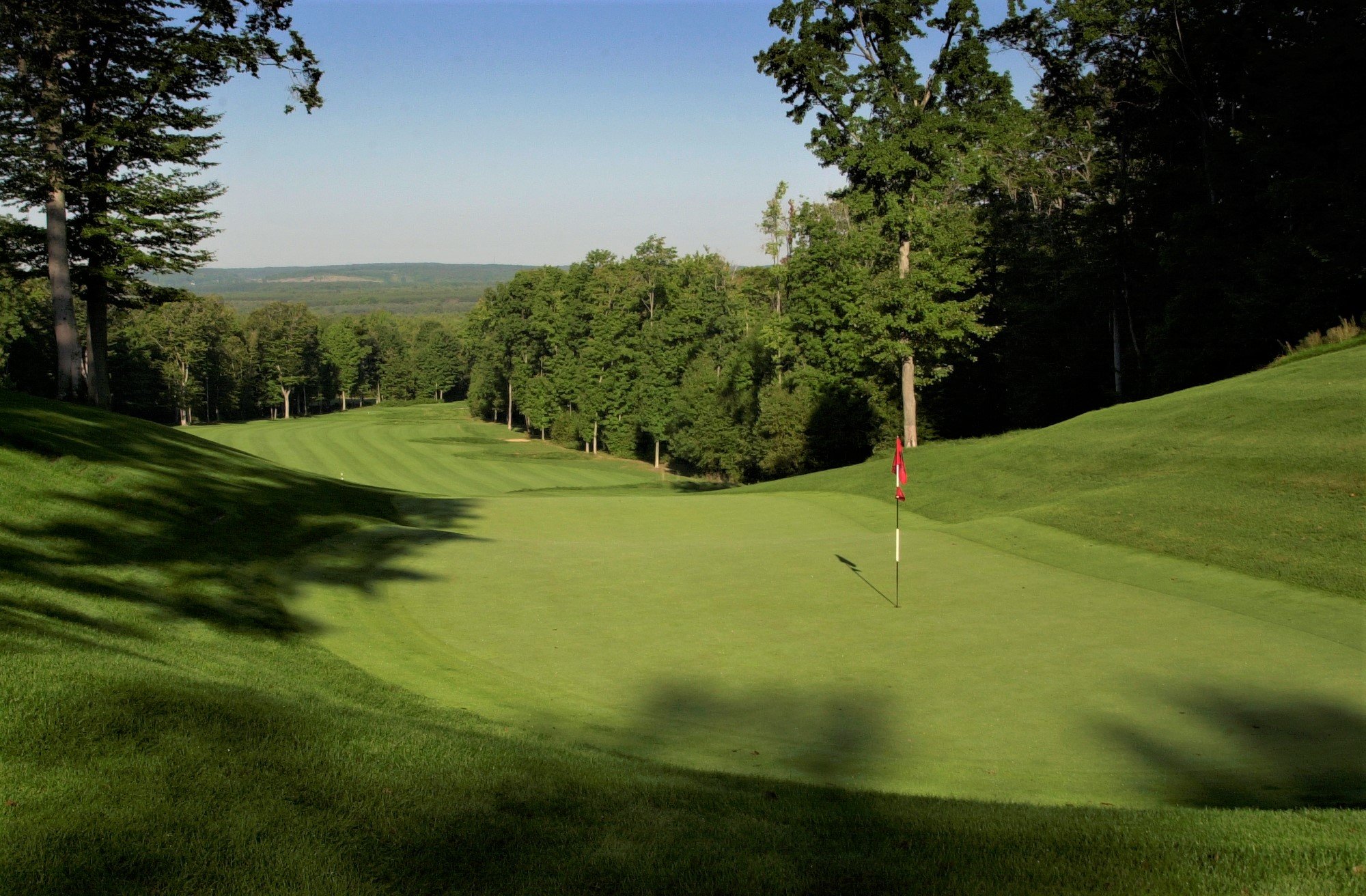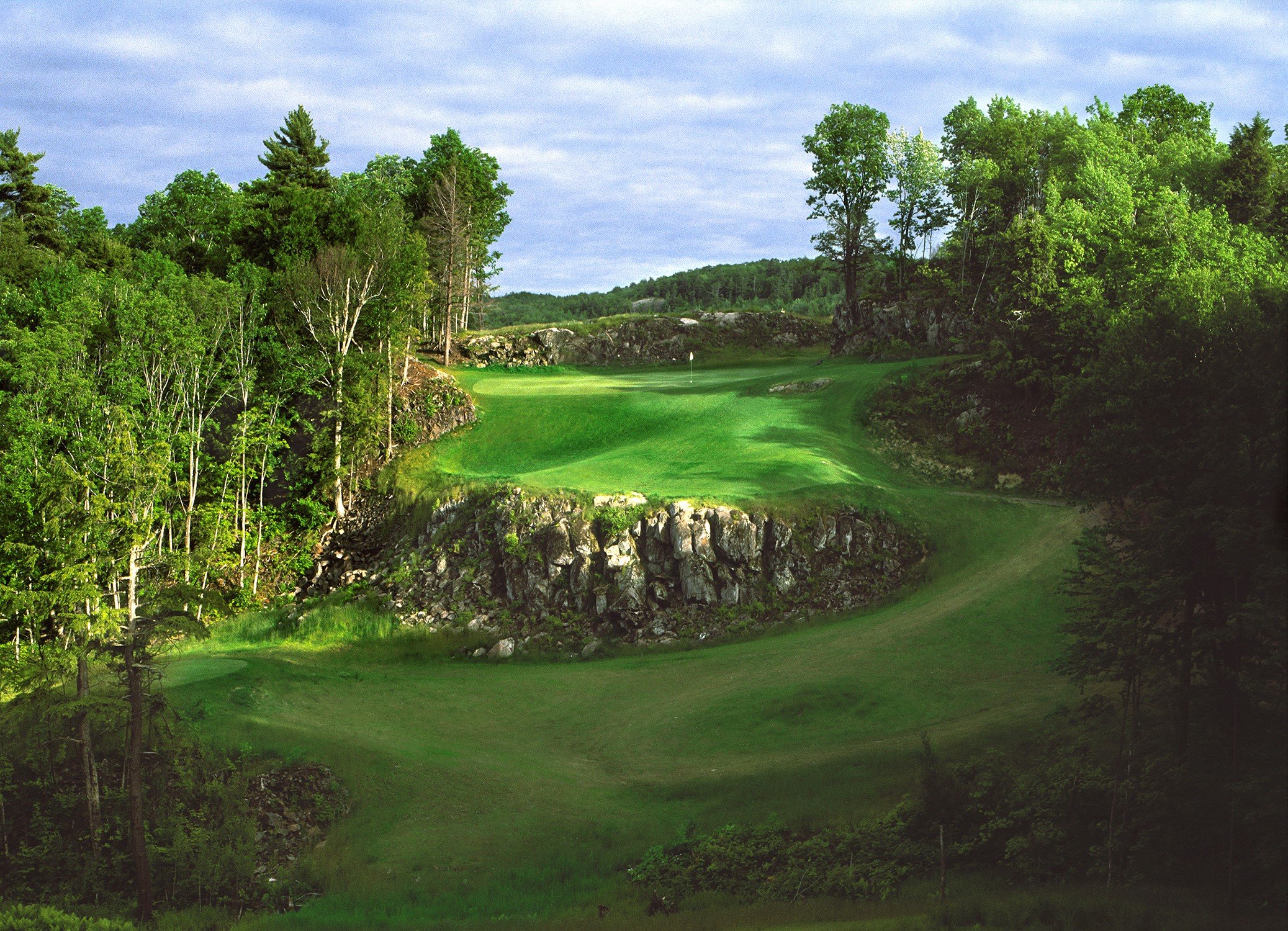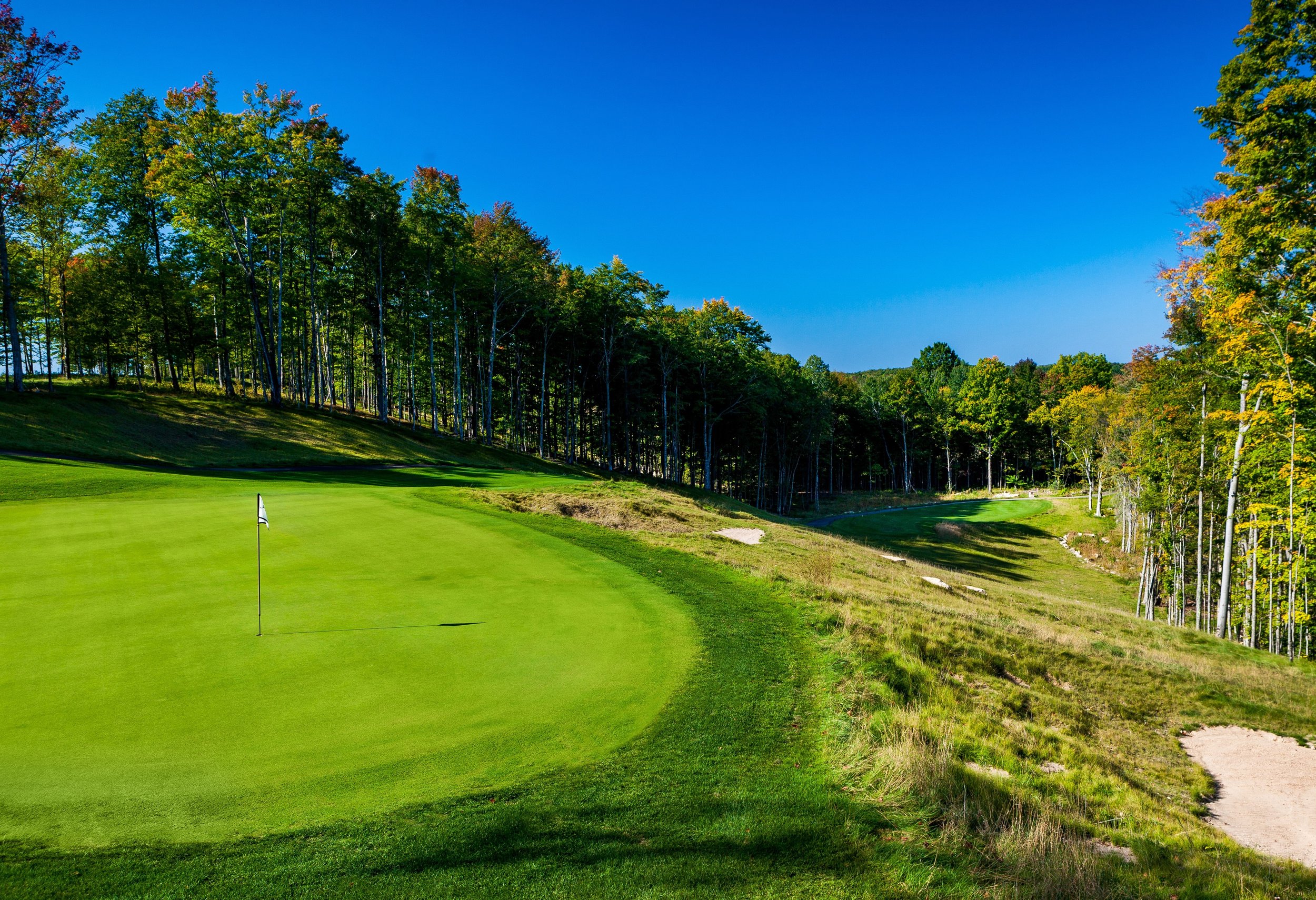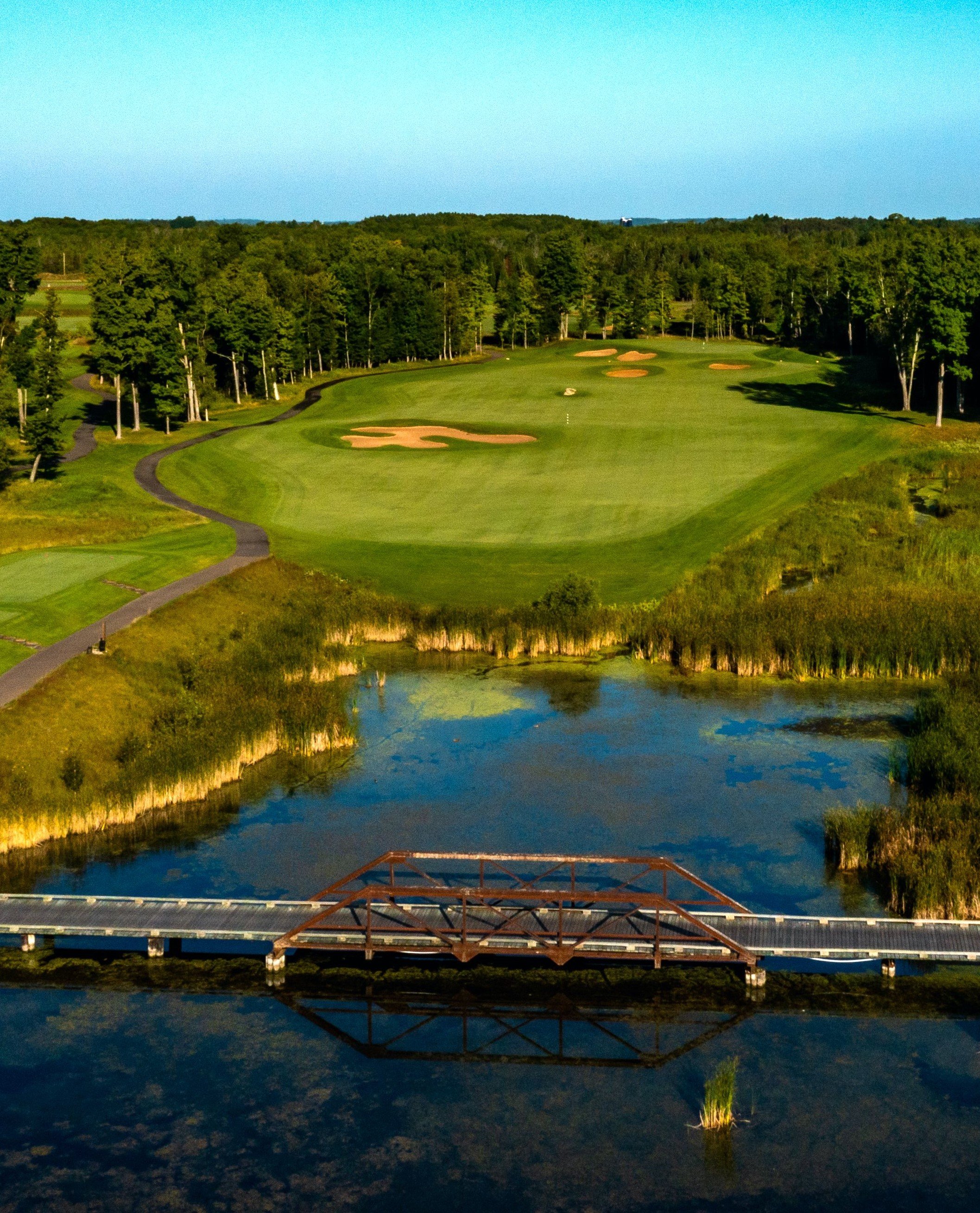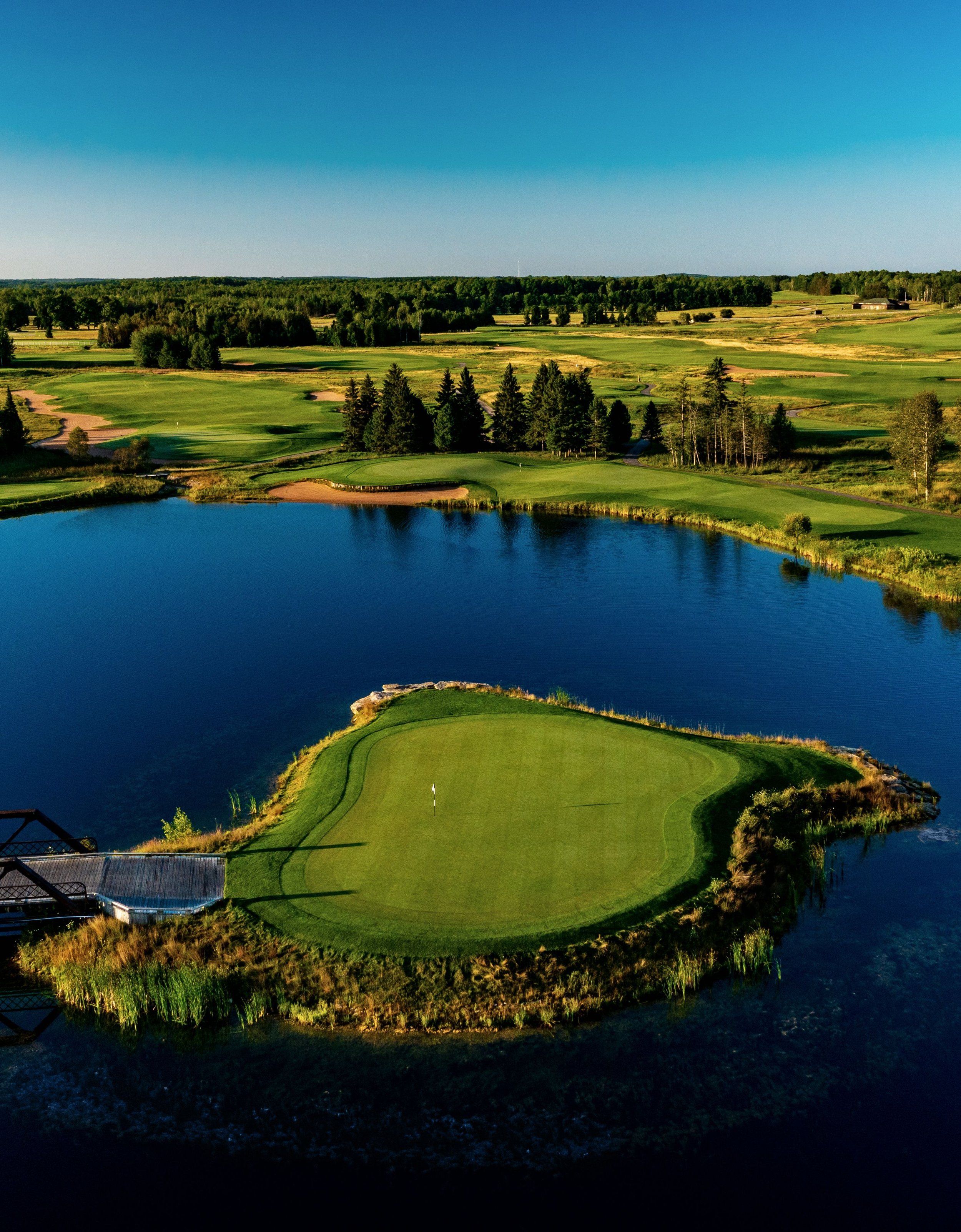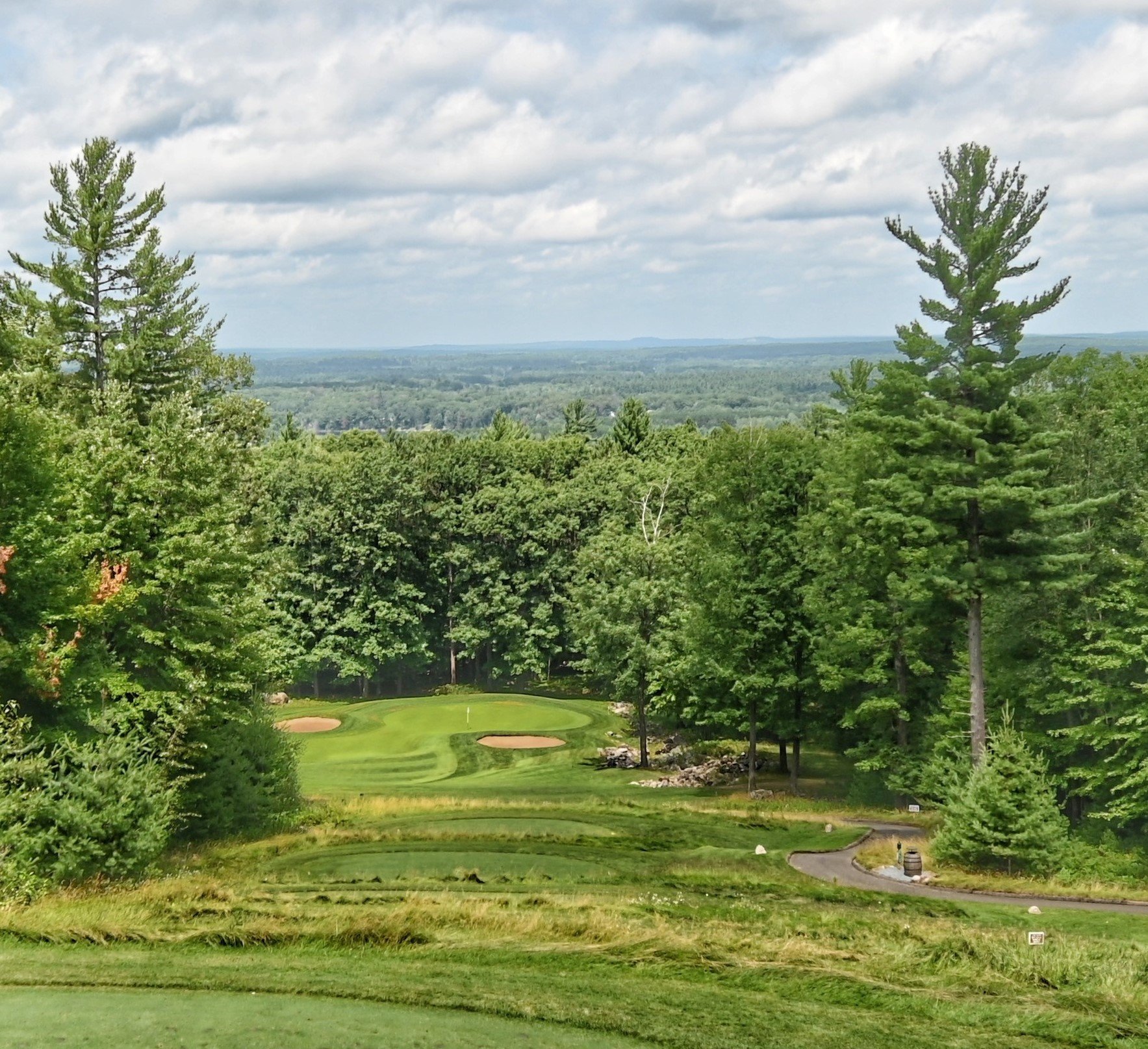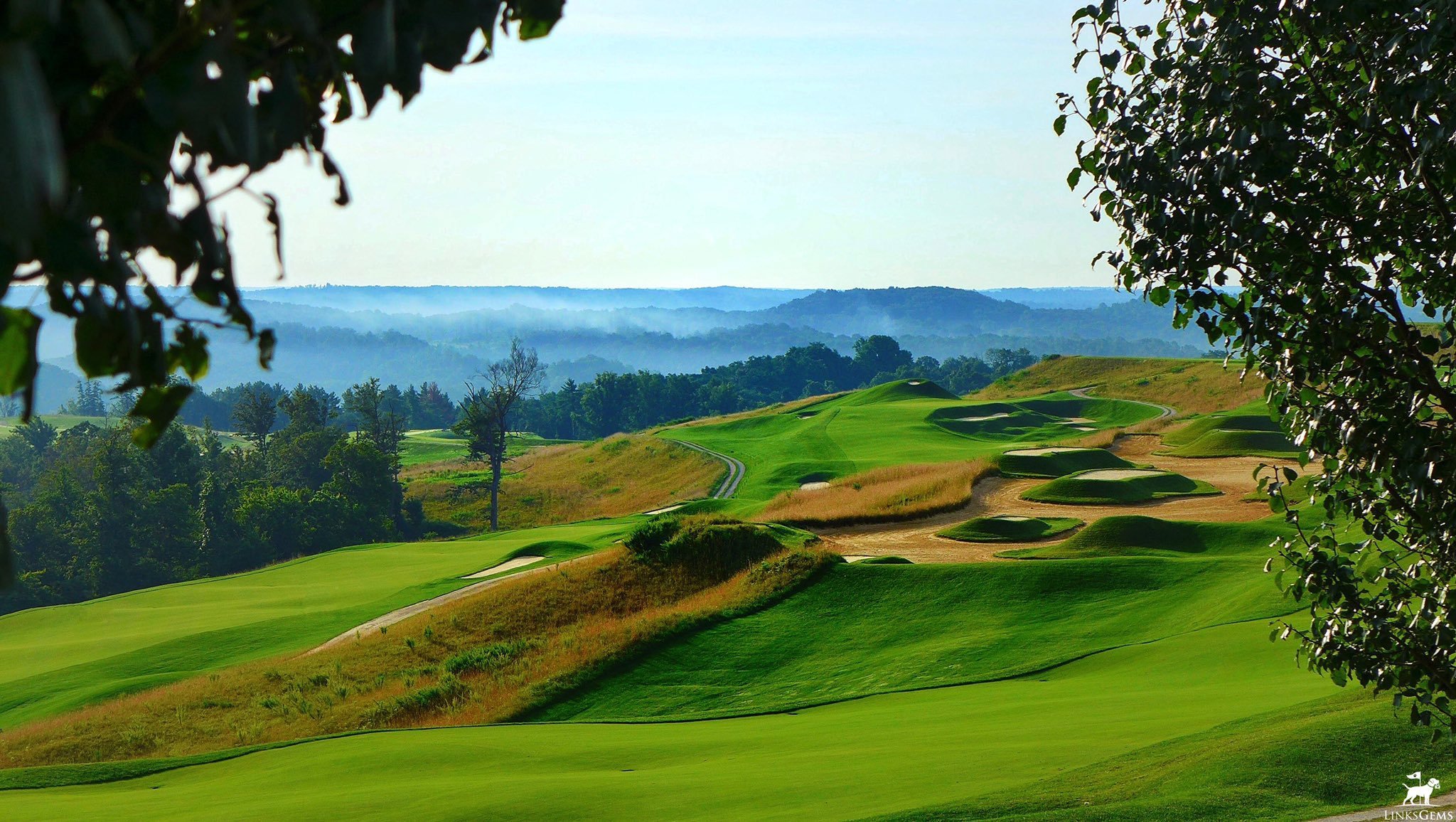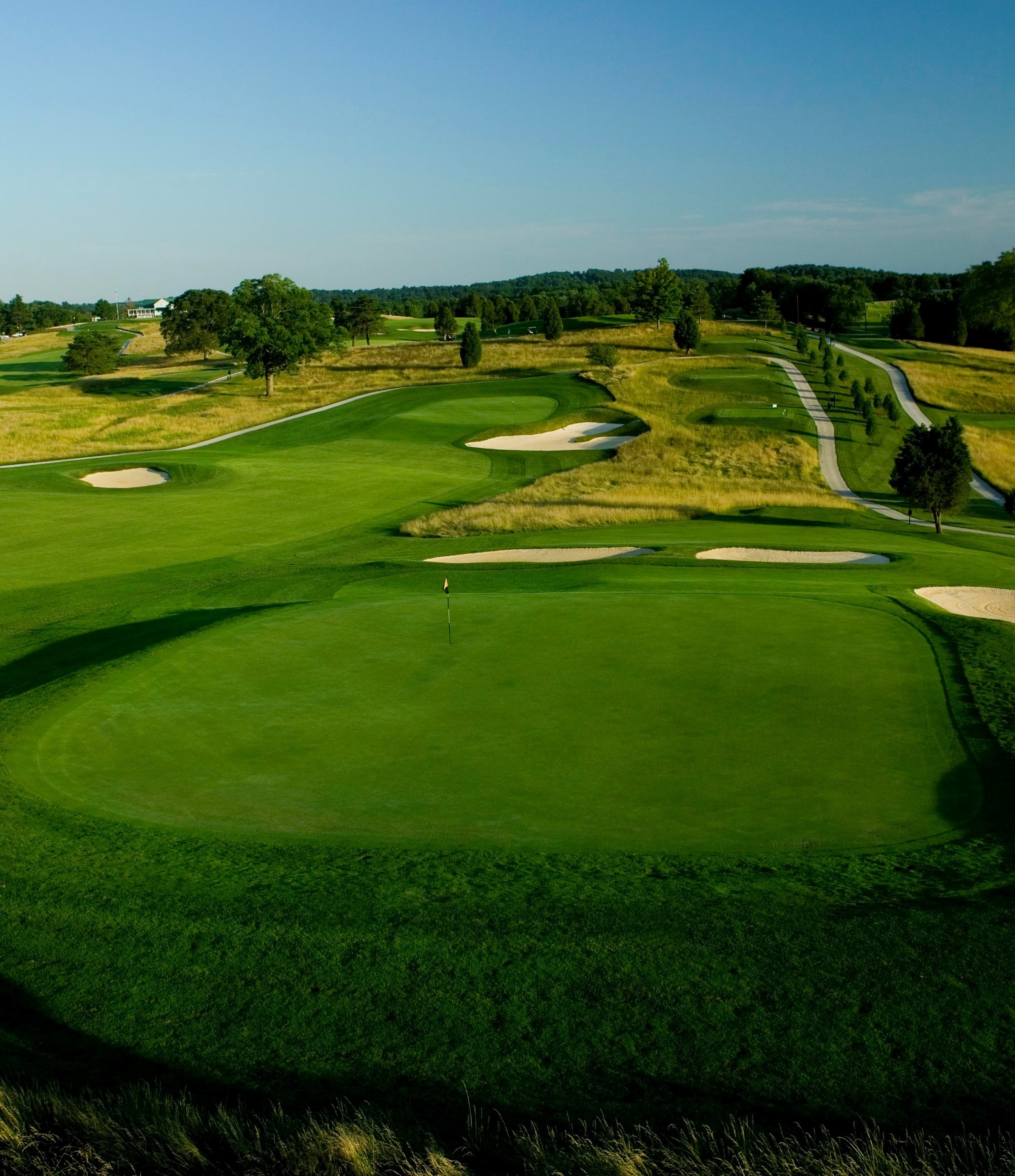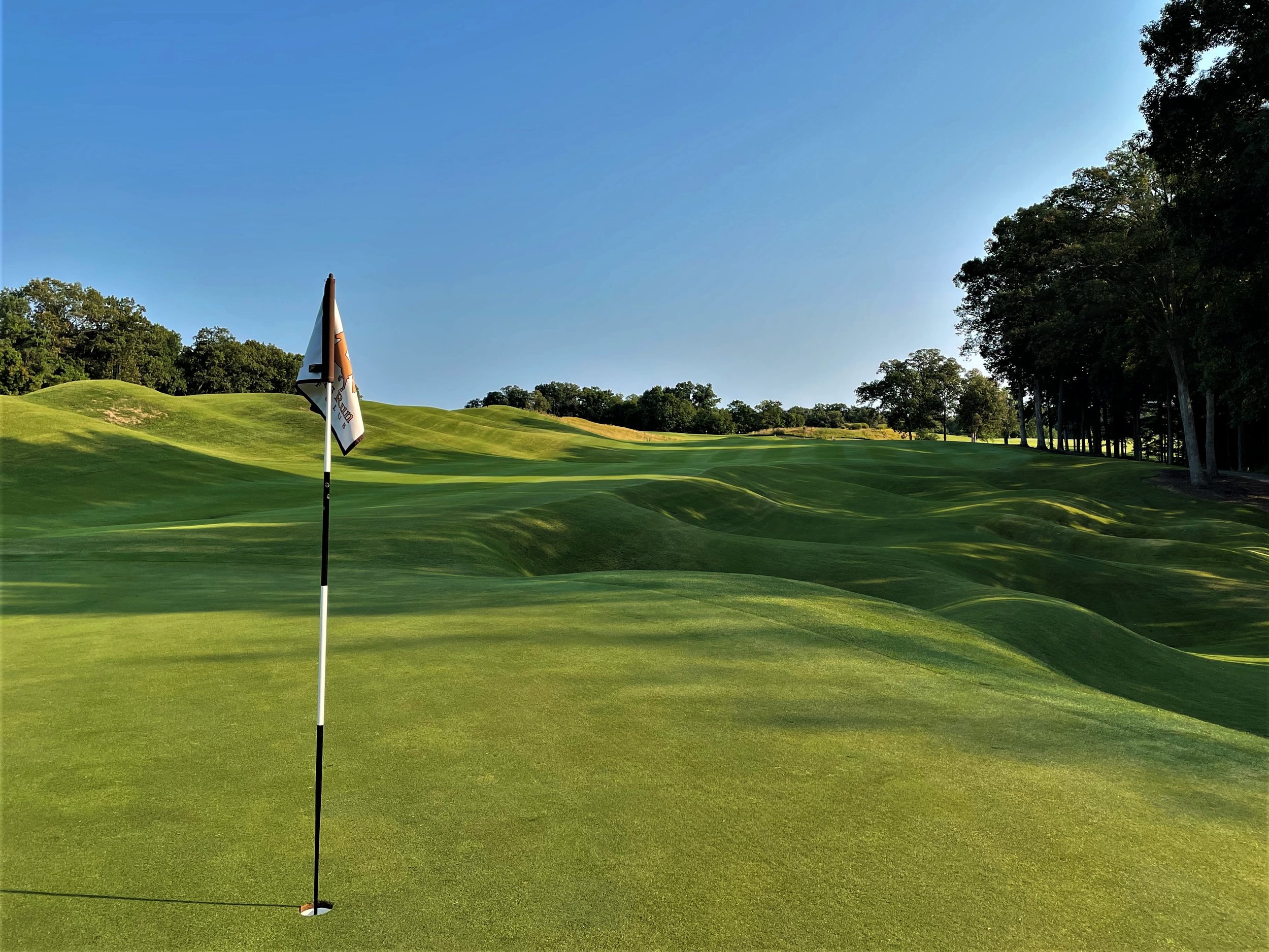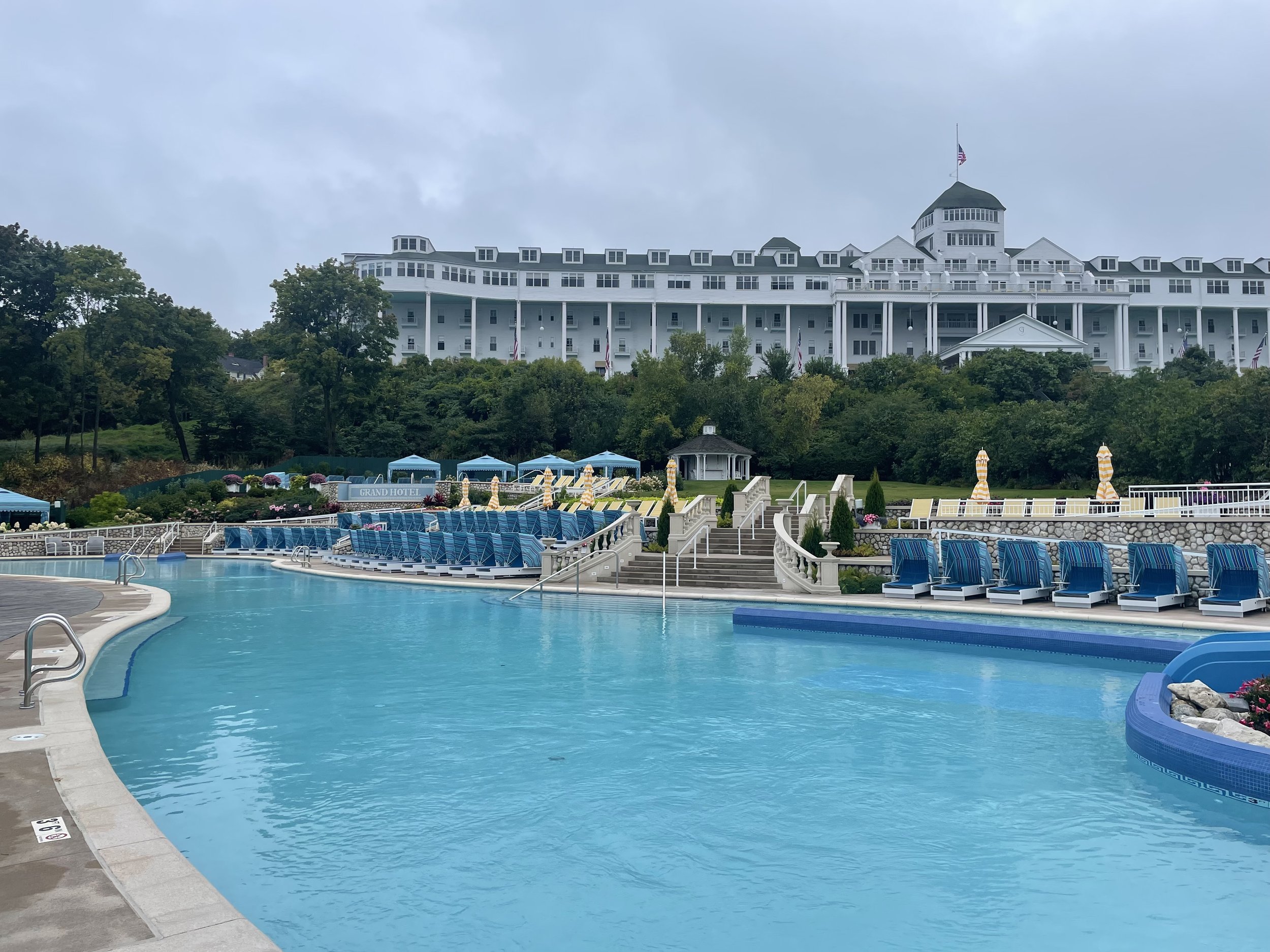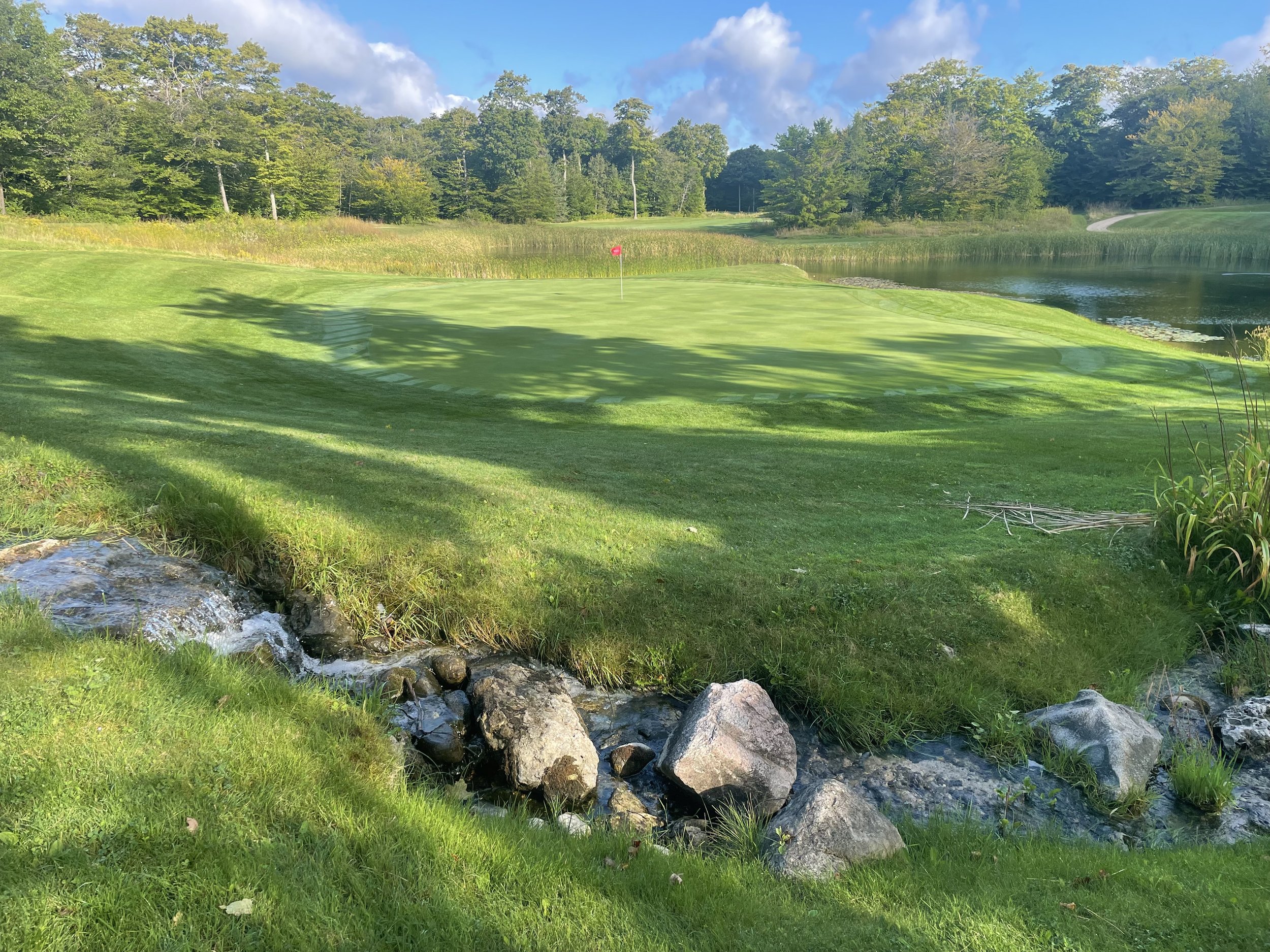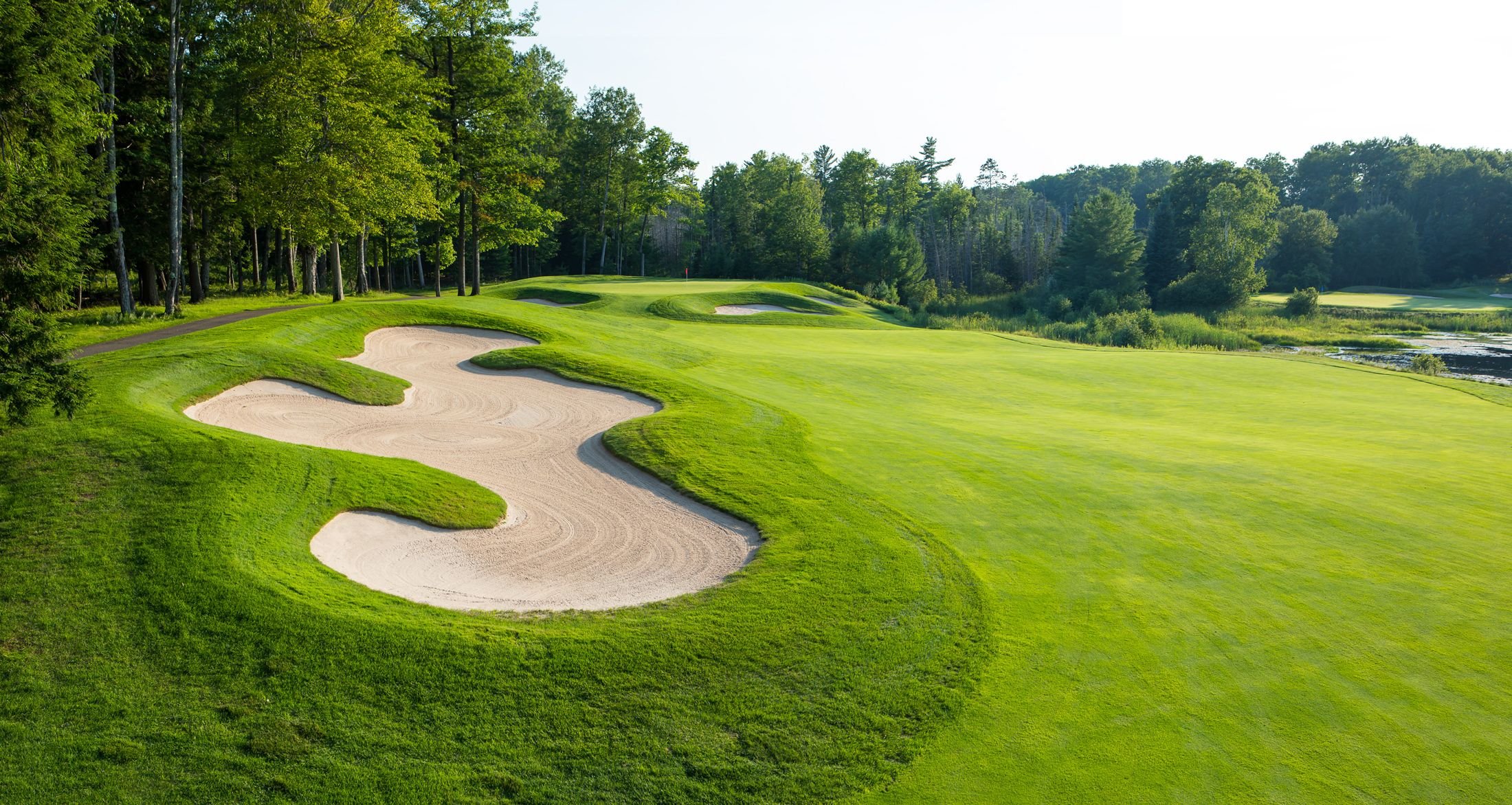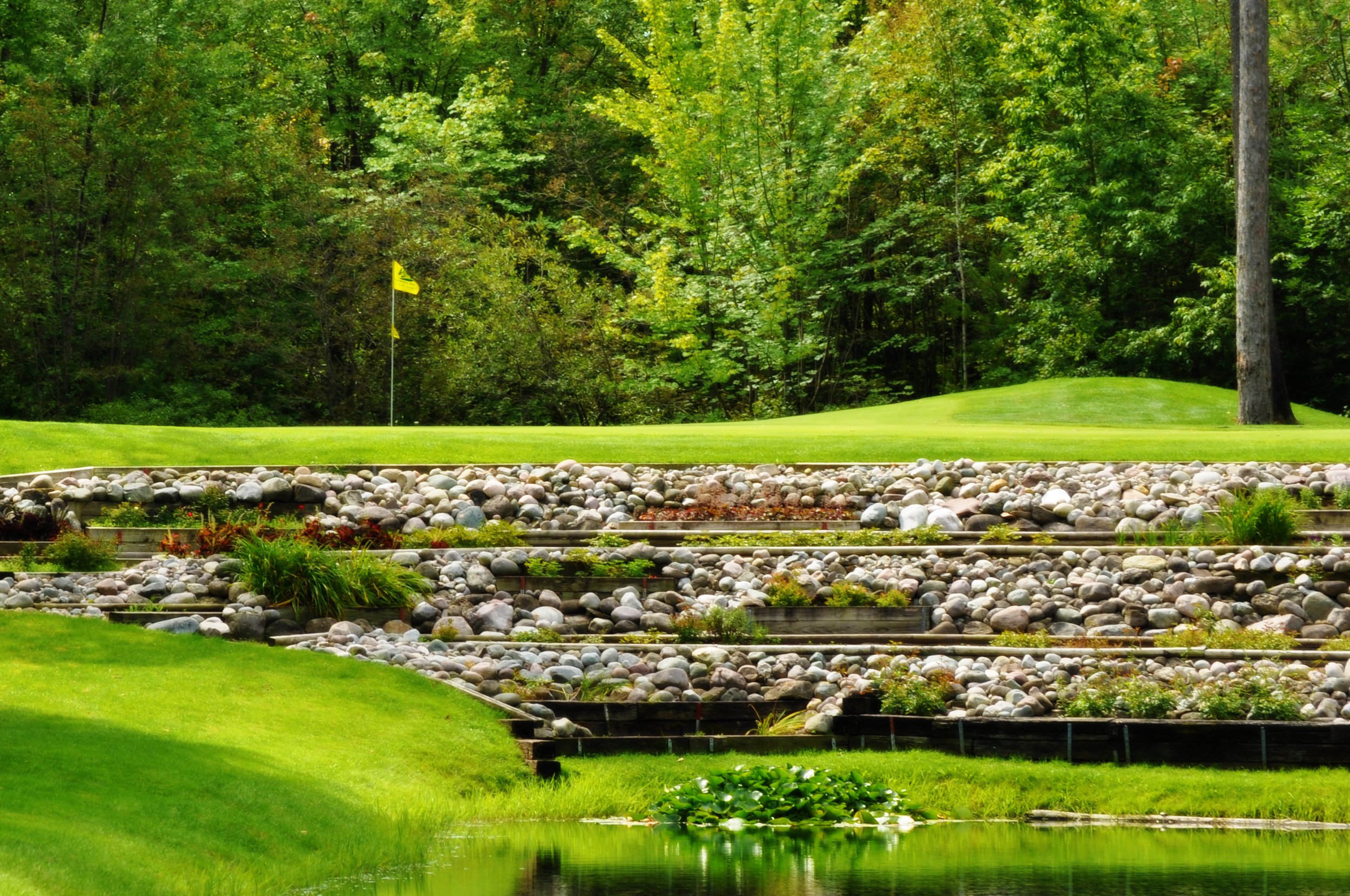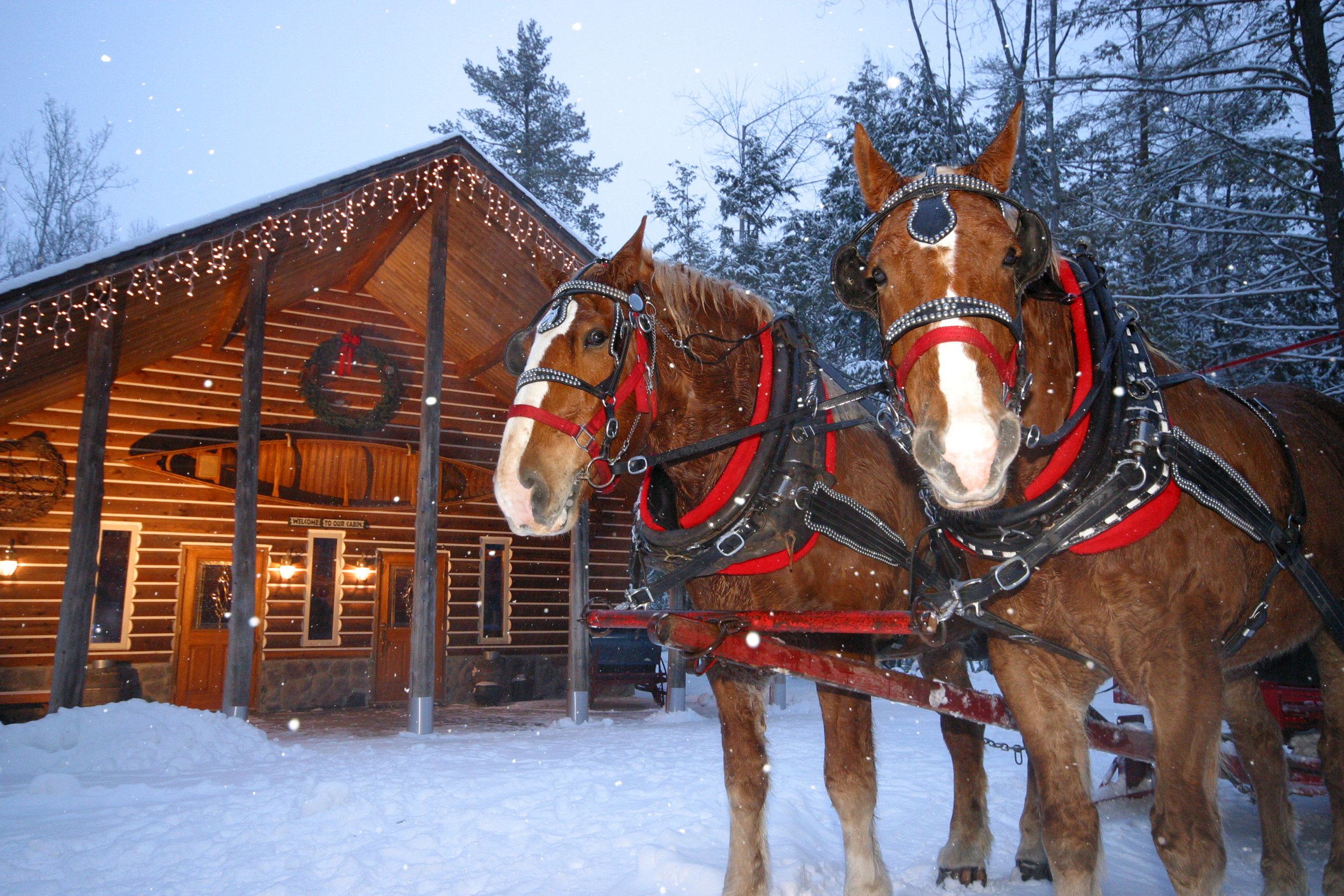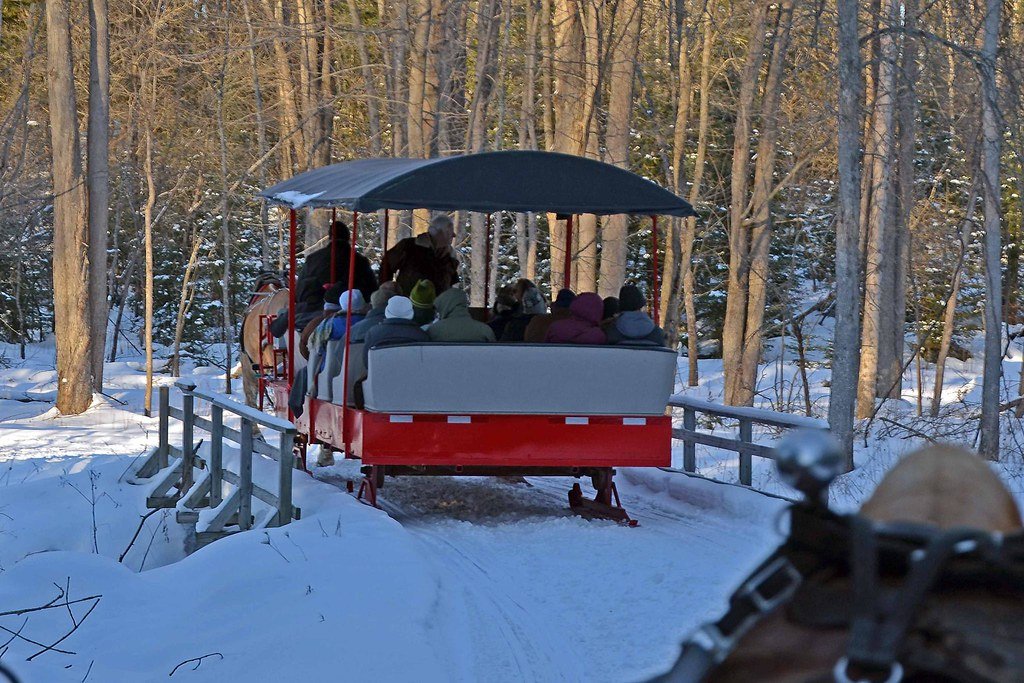More Golf Coming to the U.P.
Island Resort and Casino adding new Cedar Course
By Tom Lang
It’s a well-known fact that Michigan has the most public golf courses in the United States.
Now we’re getting one more.
The new Cedar Course in the Upper Peninsula is being bult right now just west of Escanaba on the Island Resort and Casino property at Sage Run.
The resort has started with nine-holes (opening in 2026), and designed in a way for a second nine to be added to the adjacent land in the future.
Additional building plans to begin in July will be work on a short course, practice area and an extension of the driving range.
According to visionary GM Tony Mancilla, the holes have all been shaped, with the trees gone and the dirt moved. “It looks like a golf course now, just without grass,” he said. “In the middle of April, most if not all drainage will be in, irrigation will be started, a pond will be finished up.
“And seed in the ground is planned for June. The bent grass should grow quickly. It will look like what it’s going to look like by September.”
Mancilla said everything with the process has gone well, and without fear of jinxing himself, said progress is ahead of schedule.
“We are developing it about two months faster than originally planned,” he told me. “The tree clearing was a wait for federal government approval, but once that got done, the guys got in there and cleared it out real quick. The biggest logger in the U.P. went in there and took everything they needed to take, and once that all happened everything moved real quick.”
Michigan-based course designer Paul Albanese, who developed both of the highly-ranked Sweetgrass and Sage Run at IRC, is also doing Cedar.
“We all looked at the property and agree the land is somewhere between that of Sage Run and of Sweetgrass,” Albanese told me. “It’s not quite as dramatic as Sage Run as far as the elevation changes up and down, and it’s not as low-slung as Sweetgrass. It’s got some good rolls, some really interesting features and we’re trying to do a design concept from the golden age, for every hole.
“Tony and I went through (a couple dozen) green styles that have been used throughout the history of golf architecture, and we picked nine of them.”
Albanese said a punch bowl, a Redan and a double plateau greens are in the works.
“After clearing the trees, we got a feel for how beautiful the land is. We knew it was beautiful when we looked at the topo maps, and when I tromped through the woods it looked like it would be good. Then it was a great surprise how beautiful the land is.”
Mancilla agreed.
“As far as elevation and features, the land kind of falls between both courses (Sage Run and Sweetgrass),” he said. “It’s not similar. I always tell people that when you play Sweetgrass one time and Sage Run another, you won’t believe you’re even in the same county because they are so different.
“At the Cedar course, the hills roll, but roll a little bigger than Sweetgrass, but they’re not as big as Sage Run and there’s no intimidating shots like you (have) up those par 3s at Sage Run.
“This is why Paul Albanese was able to use a lot of Scottish templates,” Mancilla continued. “Because it’s that kind of terrain (you’d find in Scotland). It’s a little more rolling, but it’s not extreme. So, once again, you’re going to play this third 9 and it’s going to feel different.”
The Cedar will eventually become 18 holes. For now, the new nine will more quickly fill a need in the near-term.
“We started with nine first because we needed to fill more early-morning tee times, and building nine is a lot faster than building 18,” Mancilla said. “We wanted to get the nine going because we have a lot of customers who come in late and want to play, but there’s not enough time to play 18 (before sunset).”
He explained on the flip side, that golfers who might have a half day drive home on their last day at the resort can fit in a final nine holes easily and still head out before or near lunchtime and get home at a reasonable hour.
“That was the reason we did the nine to start. It’s being designed to add the other holes, and there is land to do it. The next stage is probably some more hotel rooms and probably the other nine.”
Island Resort and Casino currently has 454 rooms. Some include golfer suites in the newest tower that consist of two connected, large areas with plenty of well-spaced sleeping room for four.
Mancilla said that at least another 50-60 rooms need to be added somewhere on property because they are sold out 99 percent of the time from Memorial Day through Labor Day.
Favorite Holes:
In Mancilla’s opinion, the first hole is really dramatic as it plays down a valley.
“So far, just riding the property on a cart, that’s the one that sticks in my mind the most. That first tee shot is really cool. It looks like Pasatiempo, an Alister MacKenzie course in (Santa Cruz) California. That’s what it looks like. You’re down in this valley looking up to a green. It’s really cool.
“And No. 4, it’s a par 5 that plays along a ridge. You can play it far to the right, there’s a lot of room between there and the 6th hole. No. 4 and 6 border each other. You can bail it out, you can slice it. But if you hit it down the left side you’re going to see the green.”
He added that it’s a par 5 where if you lay it up you will see the green. If you go for it you have to be on the left side, or the green will be hidden behind a mound (toward the right).
“It’s probably the best designed hole from what I can see right now,” he said. “There’s so many ways to play it. No. 1, visually, is probably going to be the best hole. But strategically, that No. 4 hole sticks out.”
Green Complexes and U.P. Fun:
Albanese pointed out that much care went into selecting wonderful green complexes that will intrigue and delight golfers. He said that every hole’s green complex will try to emulate a golden age design concept. Example: the green complex of the 6th hole at Augusta National. He said as it’s planned now the hole will play downhill but not have the large valley between the tee and green you see in Georgia on TV.
“We believe it’s a classic par three, yet it might get overlooked often,” Albanese said. “You don’t hear people talk about ‘Juniper’ as it’s called. But we looked at the contours of the hole and hope to emulate it. So, when you’re on that green you’ll get a similar flavor as if you were playing Juniper at Augusta.”
Because he grew up in the western U.S., Mancilla often has friends and family visit in the Upper Peninsula.
“I grew up in Idaho and I have old college friends and I have family all over the country, and I can tell you that everyone who comes to the U.P. has fun. Sometimes we play golf, other times I take them to the Bridge, or we go to Munising and see the Pictured Rocks. But everybody has fun here.
“It’s one of those places that if you’ve been here and experienced it, you want to come back. And in the golf world, we offer great golf, but do so at a really great rate. You can play both of our courses and stay two nights and pay maybe $320. It’s not cheap golf, it’s high-end golf. We put a lot of money into the courses, a lot of conditioning. So, you’re playing country club golf at a really good price.
“When people think of us, I think our courses stand toe-to-toe with anybody. But when you wrap it all up together, I think you have a more fun experience.”
Find your fun at: https://islandresortgolf.com/
Indy has Racing – But Great Golf Too
By Tom Lang
Michigan golfers who want to extend their season in the fall or go where spring starts a little earlier can do so easily by considering a trip to Indianapolis – where the weather is often 5-10 degrees warmer than the Great Lakes State but it’s only a 2.5 hour drive south of the border.
My recent trip took place in Hamilton County, the northeastern quadrant to the Indianapolis metro area. Michigan’s I-69 thoroughfare runs the full length of Indiana and goes right through the heart of Hamilton Co – an area rich in Midwest heritage, featuring a nice mix of farmland and surging metropolitan growth of new hotels, shops and daily-living amenities – while maintaining small charming, historic villages to explore like Carmel, Noblesville and Cicero.
I joined up with locals at the two courses I played – Plum Creek, a Pete and Alice Dye design – and Bear Slide in the tiny farm town of Cicero. My third planned round of golf at Prairie View Golf Club was rained out due to the leftovers of Hurricane Helene reaching the area. We’ll catch it next time.
Bear Slide Golf Club:
At one time, Bear Slide was ranked the No. 2 best course in Indiana. Frenck Lick has since grabbed away No. 1 and No. 2, but I can see why Bear Slide got the original ranking.
Like almost every course in the region, it’s situated on what was once farmland – but it’s some of the hilliest farmland you can find, especially the area on the back nine that follows Bear Slide Creek that I cannot imagine was ever farmable land, and makes for some challenging golf holes nestled into the land that features some deep crevices once cut out by the creek.
I was paired with two locals who are buddies and neighbors in the built-up Indy suburb of Fishers.
“It’s not a flat course by any stretch of the imagination whatsoever,” said Matt Mulvihill. “The hills make it challenging, even having some blind shots you wouldn’t expect. It’s definitely one of those courses that’s easier to play the second time, or with someone who’s been here.”
Local pediatrician Hank Knouse added: “It’s a very strategic course. There’s blind shots, with left and right bends where you need to be very specific where you place your first shots to have any chance to reach the green on your second shots. A lot of fun.”
The front nine is more open and shows more of the manmade land moving during construction. It was done well, adding to the challenge and the visuals on the course. I really liked the par 3s of Holes 4 and 6, followed by the No. 7 par 4 downhill to a wide open fairway and back up to a skinny, elevated green complex.
The back nine features the more cavernous-feeling land caused by the creek centuries ago. It directly effects holes 10 and 11, before the hole cadence makes a turn out to more open land with some large ponds. It then comes back to the rugged terrain of holes 15-18. Hole 15 is a downhill drivable par 4, followed by the downhill short par 3 16th that’s next to the perched clubhouse. Hole 17’s tee shot goes uphill on a somewhat blind shot to a right to left turning dogleg. Then the 18 tee shot goes back downhill to a green slightly above the fairway but in the bottom of a naturally land-formed bowl.
Plum Creek Golf Club:
Pete Dye is well-known for moving a lot of dirt to shape his designs. At Plum Creek, he and Alice saved most of that for the back nine. As I played the front, I kept thinking this doesn’t feel all that much like Dye. That changed in the afternoon, when the green complexes became more alive, more dramatic in shaping and more “Diabolical Dye” in a few cases as people say.
Midway through the front nine were four consecutive par 4s with a ton of differentiation from one to the next. No. 4 was a long par 4 dissected by the creek ranked as the No. 1 handicap hole. Hole 5 became a short par 4 with the easiest handicap on the front, but holes 6 and 7 were the longest on the front, even longer than the No. 1 handicap. Plum Creek itself went right down the middle of the front nine, coming into play on six holes.
My favorite hole was 17. It’s a hard-right-turn dogleg par five with water running the entire length down the right side. Large mounding guards the back of the green and provides a good visual for incoming shots.
The one visible drawback to the course is that it winds seamlessly through a well taken care of housing complex of upper-end homes and townhomes.
Other overall course observations included:
Uneven lies are prevalent
Solid GPS service on the carts
The former Lynnwood Farm site has two nice public parks around the outer edges
A good mix of men and women were out playing on a Wednesday
The clubhouse has a nice upper-level deck and covered lower area for relaxing after the round
The entire Hamilton County area offers many festivals for music and arts and crafts, with a Top Golf facility right along I-69 in Fishers. I had great meals at Fork & Ale House in downtown Carmel within the town confines of its wonderfully-modernized small urban experience; at Wolfies Grill not far from Bear Slide on a huge waterfront inside the Noblesville northern city limits; and finished off with a great homemade breakfast on the way home at The Roost in a little strip mall in Fishers.
All in all, ‘variety is the spice’ in Hamilton County – a great place to visit for all kinds of tastes for golf and other off-course activities.
I will return.
Shanty Creek: a Great Northen Michigan Golf and Travel Hub
By Tom Lang
In his first-ever visit to Shanty Creek, my media broadcast partner quickly summarized his highlights of the well-known Bellaire resort.
“I’m calling Shanty Creek the ‘Phenomenal Five,’ because it’s a five-mile radius, and in there you’ve got five golf courses, with something for everyone,” said 3-time Michigan Broadcaster of the Year, Jack Ebling, out of Lansing.
Ebling’s personalized label encompasses Shanty Creek’s Cedar River Golf Course design by Tom Weiskopf – now celebrating 25 years – The Legend (1986) by Arnold Palmer, the original Summit course, Schuss Mountain GC and the recent acquisition of nearby Hawk’s Eye, which has been in Shanty Creek’s portfolio since 2021.
The development of The Legend at roughly the same time Jack Nicklaus debuted The Bear at Grand Traverse Resort is widely agreed upon as the kick-start combo to the northern Michigan golf boom on the heels of the very first, The Heather at Boyne Highlands, in the late 1960s.
“It is remarkable, it really started the trend up here,” said Shanty Creek’s PGA professional Steve Scheuermann. “There’s a lot of great courses in Michigan designed by some very famous golfers and architects and that says a lot about our state. We do have the best golf courses in the country overall, I feel, and so many (of them) considering we’re a seasonal opportunity.
“For the longest time it was my favorite golf course in Michigan,” Scheuermann said of The Legend. “It’s very challenging. The greens are difficult if you’re on the wrong side of the hole. There’s so many great, unique holes… 40 years later the trees are pretty tall, so it’s much more difficult than it was.”
Lindsey Southwell, director of marketing at Shanty Creek and president of the local Chamber of Commerce, joined the conversation with Steve, me and Ebling on ‘The Long Drive’ broadcast back in mid-May.
“If you’re a golfer, you know Shanty Creek is a golf destination,” Southwell said about the four-seasons resort that’s also popular for skiing and other winter sports. “There are not many places in the state, let alone the nation, that have this concentration of golf courses in one location. I mean, 90 holes of championship courses in a five-mile radius. Cedar River and The Legend, an Arnold Palmer design – you can’t ask for two better designers in one location.”
Southwell is a former high school golfer, and nowadays a mom. She really likes the wide variety of offerings that her family can participate in, including footgolf on occasion at The Summit.
“My family, with two young boys, it’s great for us,” she said of The Summit. “We have par 3 tees on every hole, so my sons really like that. They don’t have to play all the length, but mom and dad can join them and get in a good round.”
When asked what stands out about Shanty Creek’s five golf courses, Scheuermann replied: “They’re all unique in their own way, so they will appeal to many different people. When you ask anyone who walks in the door of the pro shop what’s their favorite, you’ll get differing opinions, which I think is fantastic. Someone may love Cedar River, yet they still like one of the originals, the Shuss course, which is fantastic and always in excellent condition.”
Shanty Creek courses being in great condition is not a stroke of luck, but rather very intuitive planning that other multiple-course resorts might be wise to consider. With Shanty’s 90 holes, management made the decision a few years ago to close every course at least one day per week, sometimes two days, so the grass can rest and the superintendent’s crew can do their jobs without being underfoot of the golfers.
In essence, every course is open on the weekends, but on weekdays, each 18-holer shuts down at least one day. It’s a financial sacrifice management has made, but has done so to give golfers the best playing experience possible.
Cedar River is considered by many golfers the resort favorite. I put it right up there as well, but I’ve enjoyed the others very much, too. Southwell commented that many people don’t know that Hawk’s Eye was a stand-alone course before becoming part of the Shanty Creek collection.
“And it’s quickly becoming our second most popular course at the resort, and for very good reason,” she added. “It plays similarly to Cedar River. There’s a lot of challenge in the shots. There is water on nine of the 18 holes. It’s a good challenge and I think it plays differently every time I play it, so that makes it a fun play.”
CEDAR RIVER at 25:
“It is my favorite, but they are all very close, for different reasons,” Scheuermann said of Cedar River. “But it’s the one course I would play every single day and never get tired of it – and that’s not very normal for golfers, not typical. The way it’s laid out, the terrain, the woods, it’s a genius design.”
Cedar River has five par fives, five par 3s and eight par fours.
“Par fours are the challenging holes for most golfers. So, even on a day that’s not so great, you can still shoot some good scores.”
Hole 5 at Cedar River is the No. 1 handicap hole.
“Absolutely the hardest hole on the golf course,” Scheuermann said. “You have to play it smart. You have to hit the fairway to start. The second shot tempts you to go for the green, especially when the pin is on the left side. Don’t do that. Hit it down the right side, and if you do it correctly the ball will bounce left toward the green.
“Take your medicine, hope for a good pitch or chip, and to maybe save par. But you don’t want to turn it into a harder hole. If the ball goes left, you’re going to hit a higher score. If you get a great drive and get over the hill and start going down the backside, you’ll get a lot of roll and can use an iron into the green. Go for it.”
Ebling’s closing thoughts on Cedar River: “There’s so many different ways to play this course. And talk about playability, that and memorability of it for visitors to Shanty Creek. If you’re a really top-notch player, a scratch golfer and you want to go to the blacks, it’s 6980 (yards) and it will test you. Then the red tees are 5315 and there are a lot of options between those with the blue, the white, the silver and some hybrid tees; so lots of different ways to play it.”
GETTING OFF COURSE:
With her ‘Chamber hat’ on, Southwell had many things to share about what friends and family can do before or after golf in the Bellaire/Chain of Lakes region. Shanty Creek Resort is anchored halfway between Pure Michigan tourism icons Sleeping Bears Dunes and Mackinaw Island.
“A lot of people come up to Bellaire just for Short’s Brewery,” she said. “It’s really transformed the town with a hot little night life in our village. We now have a distillery and lots of unique dining options and it’s become a really ‘happening village.’
“Outside the village we have the chain of lakes, that includes Torch Lake, which we call the Caribbean of the North. Its Caribbean blue waters are unlike any other lake I’ve ever seen. It’s popular for very good reason.
“You cannot top the beauty of Torch Lake. It’s the setting for Kid Rock’s song ‘Summertime’ with the great sandbar attraction. The Chain of Lakes is 55 miles of lakes and waterways combined. They start up here by us and end at Lake Michigan in Elk Rapids. It provides all kinds of recreation. You want to do something on the water, we have it all.”
Antrim County, which Southwell said is the snowiest county each wintertime, is flooded with great trails for hiking and biking and other non-water sports.
“When you think Northern Michigan, you think woods and water, and we have all that here,” Southwell concluded. “It’s a real family destination, and we are very centrally located. It’s easy to make day trips to Traverse City, to Cheboygan, or Petoskey. So, you can really get out and explore northern Michigan, see all the things you want to see.
“We like to say, ‘we’re more Traverse and less city.’”
More Golf is Coming to Michigan’s U.P.
By Tom Lang
As a golfer myself, it is gratifying to know golf courses are taking note of the public’s booming interest in the sport to invest in and expand their facilities. Among these is the Island Resort and Casino, near Escanaba in Michigan’s Upper Peninsula.
Island Resort was known as a regional casino option when it first added the highly-rated Sweetgrass Golf Course in 2008. Sweetgrass soon became the longtime host of one of the EPSON Tour’s favorite stops on the schedule. This June will mark the 13th year of the pro tournament. The winner earns an exemption into the Evion Championship, an LPGA Tour major.
Remarkably, in 2022 and only its 15th year of operation, Sweetgrass also earned the National Golf Course of the Year award – which honors great golf while also recognizing a property’s commitment to growing the game and supporting their communities.
Ten years after Sweetgrass opened, Sage Run was added to give the resort 36 holes – which still might not be enough. So, plans are underway to add 9 more holes to Sage Run – but we’ll get to that in a minute.
Island Resort’s general manager Tony Mancilla recently told me that Sweetgrass was doing about 16,500 rounds per year when they added the second course, and now it’s over 25,000 rounds each year. Sage Run hosted over 17,000 rounds in 2023. These are large numbers considering the golf season is even shorter in the great Up North.
“(Bandon Dunes developer) Mike Keiser is famous for saying one plus one equals three,” Mancilla told me. “That when you add a second course, it’s not going to double your rounds, it will more than double your rounds, and we are experiencing that right now.”
This growth, plus the incredibly-fair pricing for the resort’s hotel accommodations and golf options, make Island Resort and Casino one of the best golf resort values in the entire Midwest.
Code: don’t wait to book your trip.
Mancilla said by mid-March the resort will be about 70 percent full with reservations for summer golf; Memorial Day through the end of September. He said there is still lots of space but don’t delay, “because it’s going fast.”
“We have invested a lot into our golf hospitality area, hiring three dedicated people who really understand golf from the customer side on building great packages and what golfers are looking for.”
Beyond the golf courses, Island Resort has wonderful casino games, slots, poker, bingo and table games – and SI SportsBook by Sports Illustrated. Its showroom also hosts entertaining concerts all year long.
Then there is the Drift Spa and the regionally-renowned Horizons Steakhouse on the top floor of the hotel tower on the property, offering an incredible panoramic view of the Sweetgrass Course and surrounding U.P. countryside.
“We’ll have golf groups from 12-to-40 people and they are here several days,” Mancilla said. “I know when I go on trips, about halfway through I’m sore and tired, and think, ‘I sure could use a massage.’ We have that available at Drift Spa and not everyone knows it. And especially if you’re older like I’m getting (age 55), I just wake up sore,” he said with a chuckle.
The increased demand for golf packages was the driving force behind the resort’s $30 million expansion in 2022. Renovations featured the 11-story Palm Tower, with 138 guest rooms and golf suites, which brought the property’s guest room total to 454. Also included in the expansion is Horizons Steakhouse, aptly named because it is located on the top floor of the Palm Tower featuring the best views in the region across the expansive horizon of the U.P. Then there is Splash Island, a family pool with waterpark features.
Horizons has been so successful in its initial years that beginning this year Mancilla said they will be providing breakfast as a package add-on, but beginning in 2025 the plan is to include it in golf packages.
“We usually have anywhere from 100-200 golfers who want breakfast in the morning before their rounds, so that’s a direction we are going.”
The prairie links-style Sweetgrass layout meanders to a wide-open vista where many greens and flags can be seen in the distance. The highlight of this course is very fun green complexes. For course architecture geeks, you have a Redan, Biarritz, Island, and Double-green. The back nine also included arguably two of the best par-3's I have played. The 12th (full disclosure my only career hole-in-one) features one of the coolest Biarritz holes and the par-3 15th requires an accurate shot with a short iron into an island green.
Like Sweetgrass, Sage Run was also designed by Paul Albanese and is a bold contrast to the other. Selected by Golf Digest as one the “Best New” courses in America in 2019 and ranked 20th in Michigan's top courses by Golfweek, Sage Run offers a more rugged experience with hardwoods, open areas, and a massive ridge that Albanese likened to Royal County Down in Northern Ireland.
Breaking News: An Expanding Sage Run
Now for the breaking news you will first see here: Mancilla announced that a new 9 holes are seriously in the works at the Sage Run property, which is Island Resort owned but situated about 6 miles away and connected by a free shuttle service.
Albanese is set to design it as well. Mancilla explained that the intention of the new nine is to give golfers an additional 9-hole round in the afternoon or evening if they played 18 – or a nine-hole experience for golfers who might have a long day ahead and want to squeeze in more golf but still have time to drive home in the afternoon.
“We are in the process to find the nine extra holes to help accommodate these extra tee times we’re going to need.” Mancilla said. “We have walked the property. We are in the stages of getting a logging permit to clear some trees. It’s looking good and our goal in two years is to be over 50,000 rounds.”
He stressed that the holes have not been designed yet, but said that Albanese will have full freedom to create his vision – but where possible they would like to do some ‘tribute’ holes. They want to log the property first. Ideally that will happen early this summer. “So, ground has not been broken, but plans are underway.”
“We want to do something different from Sweetgrass and Sage Run that are already there,” Mancilla added. “So, we are saying to Paul, design the holes and make the course fit right, but if you have the chance to add some bunkers, maybe do ‘church pew bunkers’ like at Oakmont, or maybe build a punchbowl green. Then it becomes unique because a lot of people do not get a chance to play a once-in-a-lifetime-deal like the Chicago Golf Club (location of the real punchbowl) or Oakmont, so if the land is right and we have the chance to add that – and we might not be able to – but let’s add those things in there and share the history with our guests.
“So, if Paul can add those types of things, we will make them a tribute to other ideas that people might never see otherwise.
“What we want is to add something with big fairways with unique green complexes, so you don’t feel like you’re playing Sage Run’s third nine, you’re instead playing a whole different nine. That’s what we’re going for.”
Knowing the folks at Island Resort and Casino, they’ll get it right – just like everything else on property.
For more information about Island Resort and Casino and its golf packages, visit www.islandresortgolf.com or call 877-475-4733.
Hilton Head Island – The Natural Place to Golf
By Tom Lang
Hilton Head Island is a more tranquil golf getaway than many resort regions – primarily thanks to its initial modern development in the 1950s with the intent of keeping the area natural, offering a place for humans to populate but share and maintain the natural surroundings with wildlife. A staple of the island is that its surrounding water ways are a safe haven for sea turtles, and dolphins are very active in the area as well.
While golf vacationers have all the modern comforts of travel available with great accommodations, outstanding food options and other activities like biking, tennis, pickleball, boating and the oceanfront beaches – the overall experience feels very uncommercialized.
To keep a natural look to the island all these decades later, there are rules such as: no billboards allowed, no neon signs (only signs made of wood) and no street lights. Most accommodations are vacation condo and home rentals, as there are only a handful of hotels on the entire island.
I hadn’t been to Hilton Head in five years but recently returned to visit family who moved there – a cousin and his wife. What a great time we had for a few days playing golf and exploring other historic areas like Beaufort, Bluffton and Savannah.
We played two courses at Palmetto Dunes; the layout by Michigander Arthur Hills, and the George Fazio design. The resort also has a third course first developed in the 1960s by Robert Trent Jones that was revitalized in 2002 to return what were man-made flatter fairways into the more rolling ground one would find with flowing sand dunes near the ocean.
Hills Course:
This is a challenging course but one that is very fair. It’s not overly-long but is a shot-makers target style golf layout. Like all the Palmetto Dunes’ courses, there is a beautiful mix of palm trees and old oaks, with a ton of tropical vegetation surrounding. The fifth hole has a historic lighthouse as a backdrop that was first built in 1880. Near it is an oak tree considered one of the oldest on the island at about 450 years young.
My favorite stretch was holes 11-through-13.
Hole 11 is a par 3 with varying levels of tee boxes to a nice green complex below with huge bunkers guarding it left and right.
Hole 12 is a sweeping left to right dogleg with water all along the right side. As golfers approach the green, there is a set of a half dozen mature palm trees guarding the left side with all water still on the right.
Hole 13 has a tee shot going over the water canal system that defines Hilton Head’s recreational boat travel interior. The hole becomes a hard dogleg right par 5 for two more shots, with a large pond guarding the right side, and bail-out room on the left.
I feel that 17 should be their signature hole. Golfers tee off with the canal along the left as they aim to a wide fairway that turns left – as does the water canal. The approach requires a shot back over the same water feature to a green on the other side surrounded by trees in back.
“I think it’s a creative layout because they don’t have a ton of property here, but they did a really nice job of setting the course up so you didn’t feel like the course was wedged into a small piece of property,” my cousin said. He added the course had lots of interesting water hazards that were in play but there was no reason to be super intimidated by it. “Absolutely you could get in trouble with it but it’s not like you stood there worrying about clearing the water or were terrified of it.”
The one exception for me was the tee shot at 13, which that day was into a stiff wind. I cleared the water canal, but my ball dropped into tall grasses along the edge. I was advised that with snakes and alligators being a natural part of the island to let that ball go and dig a new one out of my bag.
Fazio Course:
This layout was more open than the Hills, with sand as a major feature. Some holes the sand traps were double the size of the largest greens. On 18, there seemed to be as much sand to navigate as there was fairway grass. The tee shot provides a tall palm tree on either side that act as directional ‘goalposts’ to the fairway that is slightly blind from the tee box.
Holes 5 and 6 were almost identical to holes 13 and 14 – shorter par 4 sharp dogleg lefts followed by a par 3. Hole 11 was an interesting par 4 that turned slightly right to a double green shared with hole 16, which came in from the opposite direction.
Hole 7 is a beautiful looking hole, especially for one that ventures straight ahead with no visual turns. After the tee shot, golfers must clear one of the canals to an elevated green surrounded left and right by thicker stands of trees than most any other part of the design.
Jones Ocean Course:
I did not play the third course on this mid-February trip, but it was on my list five years ago. I recall the front nine as mostly tree-lined but never too tight – with good sand and water features to navigate.
Once reaching the 9th tee, golfers turn toward the Atlantic Ocean with two consecutive par 5s. The Atlantic is directly behind the 10th green, which offers an excellent view of a public, sandy beach with shrimp boats trolling along the ocean front. Starting at the 10th the course feels more open as much of the back 9 is played in a section that has a lagoon and its many creek-like features meandering throughout the hole designs. The waterway is very popular for kayaks and canoes and adds an extra touch of beauty while providing some strategic thinking about club selection.
The prevailing breezes off the Atlantic also play from behind or as a diagonal cross breeze on holes 11-15, often giving golfers some extra yardage.
History Galore:
Hilton Head’s specific, long-ago planned development to allow humans a place to live and play without harming the natural surroundings remains a staple today. The island also played a large role in the Civil War and the surrounding towns off the island provide a ton of opportunities to experience old southern architecture and a slower pace of life.
Whether your interests are only golf at any of the nearly three dozen courses in the region – or you like to bike, hike, boat, play tennis, go on a dolphin tour or eat excellent seafood – Hilton Head Island is the peaceful place to be.
More info click here.
Sky Valley: Come for the Golf, Stay for the Lifestyle
By Alan Darty
The state of Georgia – often celebrated for its southern charm, lush landscapes, and rich history – is home to a hidden gem that combines natural beauty with an outdoor lover's paradise at Sky Valley.
Located at the intersection of the Georgia and North Carolina Blue Ridge Mountains between Clayton, Georgia, and Highlands, North Carolina – Sky Valley is surrounded by the Nantahala National Forest and has pristine mountain terrain featuring waterfalls, hiking trails, and phenomenal views.
Having the distinction of being the highest and northernmost city in Georgia, with an elevation of 4,200 feet, Sky Valley allows you to immerse yourself in nature's grandeur and a serene escape from the hustle and bustle of everyday life.
The city's centerpiece is the 15,000-square-foot, member-owned home to the par-72 championship golf course and two championship croquet lawns. However, there is much more to Sky Valley. In addition to golf and croquet, there are many other activities to discover, such as tennis, pickleball, hiking, biking, fishing, boating, camping, whitewater rafting, mountain climbing, bird-watching, and even zip lining.
With so many activities to partake in and the year-round mild temperatures, it is no wonder that some call Sky Valley Heaven on Earth!
Sky Valley Golf
The Sky Valley Golf Course, a part of the Georgia Golf Trail (http://georgiagolfandtravel.com), is strategically situated amid the stunning beauty of the Blue Ridge Mountains and offers an intriguing blend of challenge and enjoyment. Designed by architect Bill Watts, the course features 18 holes that cater to players of all skill levels – and as they make their way through the course, golfers are treated to glimpses of lush forests, meandering streams, and an array of vibrant flora and fauna. This harmonious integration of the course with its natural surroundings enhances the golfing experience and fosters a deep appreciation for the environment.
Head Pro Steve Heher says, "Sky Valley is a fantastic layout. It's a mountain golf course that winds its way through the valley. It features great views from the elevated tees at the 2nd, 8th, 12th, 15th, and 17th holes. Our signature hole is the par-3 15th, which has a 60-foot elevation drop from tee to green."
With a par of 72, the course offers a balanced mix of par 3s, 4s, and 5s, ensuring that players must employ a variety of shots and strategies to navigate the terrain. The undulating landscape presents golfers with elevation changes and plateaus, adding an exciting dimension to the game.
Sky Valley Croquet
The Croquet Lawns blend tradition and nature, offering an atmosphere that promotes leisure and camaraderie. Most days, the lawn is alive with the sounds of players engaged in friendly matches with club members or organized tournaments against teams from neighboring clubs. This elegant pastime provides a great way to socialize and brings people together in a beautiful and engaging way.
Players who enjoy a challenge can experience the excitement and competitiveness of _golf croquet_ as they skillfully navigate the wickets with mallets in hand. This increasingly popular variant of the classic game offers a fresh take on the game, making golf croquet a delightful addition to the world of lawn sports.
A Mountain-Friendly Lifestyle
Sky Valley, Georgia's lifestyle epitomizes a tranquil and close-knit mountain community, offering a harmonious blend of nature-centric living and relaxed charm. Residents and guests enjoy a slower pace of life characterized by wonderful vistas, fresh mountain air, and a strong sense of community. This community radiates warmth and kindness, strengthening neighborly bonds and lifelong friendships.
The sense of camaraderie is evident in local events and gatherings, where residents come together to celebrate festivals, share stories, and create lasting memories. The tight-knit social fabric is a testament to the welcoming nature of the community.
The unhurried lifestyle allows you to savor the simple joys of each day and relish in the beautiful surroundings.
In Conclusion
Sky Valley, Georgia, offers an immersive experience in the beauty of the Blue Ridge Mountains and the charm of Southern Mountain Living, where people take the time to care for one another.
If you are ready to relax and be rejuvenated, visit Sky Valley, Georgia, where an extraordinary quality of life exists.
For more information, please visit skyvalleyga.com or skyvalleycountryclub.com
Robert Trent Jones Trail in AL
Rebirth of the Ross Bridge course, one of the few in the U.S. to stretch beyond 8,000 yards
By Tony Dear
The Robert Trent Jones Trail which crisscrosses Alabama is a favorite travel destination of golfers from Michigan and the Midwest and connects almost two dozen courses inspired by one of America’s most prolific designers.
The Trail’s finest course is perhaps Ross Bridge outside Birmingham. In a horrible and unfortunate accident in September of 2022, however, it was forced to close when 14 of its greens perished following a regrettable misstep in the maintenance shed. A toxic mix of herbicide/fertilizer was mistakenly applied to the bentgrass surfaces instead of a green sand mix used for top-dressing. And though various measures, including injecting the turf/soil with charcoal to absorb the chemicals, were tried in an effort to limit the damage, the greens suffered an inevitable slow burn from which there was no return.
Joshua Cook, the course’s new Director of Maintenance who arrived three months after the incident, says it had a lasting effect on the maintenance crew.
“By the time I was taken on, the worst had blown over certainly, but it was still a sore talking point,” he says. “I honestly didn’t ask many questions about what happened because it didn’t really matter at that point. But it was easy to tell the team was pretty raw/sensitive about it.”
Silver Linings Found
Silver linings are hard to identify in such situations, but the true optimist could have pointed to Ross Bridge’s planned renovation, originally slated for 2025, being bought forward. Though not even 20 years of age, the original grass used for the course’s huge greens was set to be replaced with an ultradwarf bermuda, a class of sports turf that has seen considerable advancements in recent years. The unscheduled demise of the greens hastened the project which also included significant changes elsewhere on the course – tree removal, bunker removal/re-positioning, cart paths moved closer to fairways, tee boxes rebuilt, and drainage improved to 13 holes. The work began in earnest early in the Spring of 2023 and was completed in September, a couple of weeks before the course’s re-opening on October 13th.
Part of a media group that visited Ross Bridge in Mid-November, I was able to enjoy again a beautiful course I’d first visited in 2006 after word had got through to editors in England that a new layout in America’s Deep-South had broken the 8,000-yard barrier.
“Cartoonishly Long”
One enlisted me to find out what it was like to play so cartoonishly long a course, being sure to include details of all the lost balls and a five-hour round, at the end of which I staggered off the 18th green gasping for water. He wanted an untidy scorecard full of sevens and eights, and photographs of me hitting a driver on a Par 3 or a long-iron third shot to a Par 5.
Most of that did indeed happen, but the fact the Director of Golf, Chip Purser, joined me made the ordeal significantly more enjoyable than it might otherwise have been. Before we started, Purser told me that no one had been “stupid enough” to play all 18 back tees. He was smiling when he said it, though, which hinted at a sense of humor that would come in very useful at various points on the journey.
There are times when a baptism of fire can prove useful, advantageous even, but I’m not convinced struggling through Ross Bridge’s opening hole was terribly helpful. The 620 yards of heavily-sloping ground with water to the left was playing into a slight headwind whose affect was amplified by a distinct chill in the air. Only summer residents of California’s Death Valley or North Africa’s Sahara Desert would have described it as cold, but conditions certainly weren’t conducive to reaching Par 5s in two. I did manage to complete the hole with the same ball I’d started it with, but that’s all I’ll say about a hole that probably took 20 minutes to play.
The only possible way we were ever going to complete this round was in a cart. But even with the benefit of motorization, the distances we travelled seemed excessive. Remember that in 2006, a ‘Tiger-proofed’ Augusta National measured 7,445 yards. The US Open was played at 7,264-yard Winged Foot, the Open Championship at 7,258-yard Hoylake, and the PGA Championship over Medinah No. 3 Course’s 7,561 yards making it the longest course in major championship history to that point. All child’s play, however, as Purser and I would be taking on 8,160 yards from tees occasionally referred to as the ‘Marketing Tees’.
It was a long day and though my score wasn’t quite as bad as the editor had hoped for, it certainly wasn’t pretty for a one-time teaching pro still occasionally shooting in the low-70s on courses 1,500-1,750 yards shorter.
To be honest though, the scoring stopped somewhere early on the back-nine. By then, Purser and I had both abandoned the idea of posting a half-decent number and began experimenting with certain shots or playing two balls. It had become more about making whatever was left of the round enjoyable and less about finishing with a score – one we knew could potentially haunt us for years. Why play tees that are obviously too far back for you when you could have considerably more fun from further forward?
Chip was a significantly better golfer than me and did hit an approach shot on the Par 5 16th – a 270-yard 3-wood that pitched between a front bunker and a front pin before rolling to within a few feet of the hole – that I still remember vividly to this day almost 18 years later. But it was an isolated moment of brilliance in a round with precious few highlights. Had we continued scoring, I doubt Chip would have broken 80, and I was likely ten shots worse.
Purser is still the Director of Golf at Ross Bridge but, sadly, the timing wasn’t right in November for a repeat of the 2006 round. With an ailing back, I played from an altogether different set of tees and had a great time. Ross Bridge is probably my favorite course on the RTJ Trail, especially so after a very well-executed renovation and rebuild of the greens. The TifEagle surfaces are an attractive color, have great density, and roll very smoothly.
Joshua Cook has a good deal of experience with this turf having completed a couple of nursey trials as superintendent at Oak Tree National in Oklahoma and then working with TifEagle at Pensacola Country Club in Florida between 2018 and 2022. He was definitely encouraged by how the new greens at Ross Bridge were performing toward the end of 2023, but says there’s still room for improvement. “I liked where they were at considering how young they are,” he says. “But they still need to mature.”
Perhaps already tournament-worthy, Cook suspects the greens will reach their peak following summer 2024. After that, the focus will be on preventing the build-up of organic matter and thatch which can affect how well a green plays and have a negative impact on its lifespan.
Mistaking bags of herbicide for fertilizer can have dire consequences and affect a green’s lifespan too, of course. Barring a repeat of what happened in 2022, however, and with Joshua Cook in charge, I suspect Ross Bridge will continue to be the Trail’s crown jewel for another 25 years.
Branson is an Ozarks Golfing Paradise
By Tom Lang
In my early adult years, Branson Missouri built up a national reputation for featuring some of the best Country Music shows and performer-owned theatres that put on world-class entertainment.
While some of that still exists yet on a smaller scale, the Branson area has been transformed to be a centerpiece of the Ozarks for golf and natural wonders – the likes of underground caves to explore, and Table Rock Lake offering water sports and tours. While there is something for everyone, including a Titanic Museum, an amusement park and outdoor activities like hunting and fishing, we’ll focus here on the golf.
Oh boy, the golf.
Bass Pro Shops founder and owner Johnny Morris has made a huge commitment to the region. He supports any activity that gets people to enjoy the great outdoors in whatever manner they love. And while that is wonderful for hikers and bikers, for nature explorers and for those who hunt and fish, and boat and swim – Morris did not neglect golfers. In fact, one could say he makes them a focus.
Morris’ properties at Big Cedar Lodge include three of GolfWeek’s 2023 four best courses in the state: Ozarks National (No. 51 nationally, designed by Core/Crenshaw), Buffalo Ridge (No. 77 nationally, Tom Fazio/Johnny Morris) and Payne’s Valley (No. 93 nationally, Tiger Woods). All are Audubon International certified for their best environmental and sustainability practices.
Additionally, Big Cedar landed two nationally-ranked short courses on GolfWeek’s first-ever list for the category:
No. 8 – Top of the Rock, the 9-hole Jack Nicklaus Signature Course, is the first-ever par-3 course to be included in a professional championship (PGA TOUR Champions Bass Pro Shops Legends of Golf.)
No. 19 – Mountain Top, the 13-hole, walking only course designed by Gary Player, showcasing stunning Ozark views amid diverse, dramatic holes that wind around 300-million-year-old limestone formations.
My personal 18-hole favorite is Buffalo Ridge. I played it years before Morris bought it and added it to the Big Cedar stable, but that transaction only made it better now. It’s one of those courses that is as much fun to play as it is to take photos of and send them to your friends to make them jealous. They might scream back through the phone; “where are you, and why didn’t you invite me ?!”
The course is tree-lined (but they are not intrusive unless you go way off line) – stunningly appointed with beautiful rock and water features. That said, the entire region can be described that way, but at Buffalo Ridge it really stands out on many holes.
I feel the two best holes are 14-15. Hole 14 is a par 5 with a creek on the right and cutting in front of the green on the approach to a green on the right that is perched up against a hill. A very scenic covered bridge frames the hole’s left side at the green. The bridge takes golfers to the 15th fairway after an elevated tee shot over water. The entire right side of the 15th fairway is a waterfall cascading down the rocks, as golfers go at another perched green – this time on the left up against a rock faced wall.
Although Buffalo Ridge is my favorite, every person in your foursome will each likely pick one beloved course from the other at Big Cedar.
Perhaps the top-rated course in Missouri – Ozarks National will be your favorite. The course has several deep valleys and gorges to cross over or avoid. Many fairways feel like they are floating as there are some big drop offs along the edges. It has more than its fair share of blind shots but follow the advice given and you’ll be fine. While Big Cedar is known for water features – think 19th hole at Payne’s Valley and Table Rock Lake – only one small pond can be found on this layout, far left of the 16th green, which used to be the water source for the family mountain top farmhouse still standing there for golfer refreshments.
Payne’s Valley is the course most people anticipated with the Tiger Woods name on it. It’s named after Missouri’s most famous golfer, the late Payne Stewart. The course lays out there in front of you without many tricks and could be considered a golfer’s dream and a superintendent’s nightmare (meaning SO much grass to cut).
Most fairways are massively wide, with lots of run. Because of the runout, most greens are easier to reach in regulation, but they are not easy to putt. Hole 4 is a shorter downhill par 5 followed by a beautiful par 3 with its peninsula green. Both require shots to the green over the same water source. And Payne’s Valley is the course with the famous 19th hole island green to settle final bets. My par felt as huge as the 100-foot-tall rock walls surrounding the green.
Branson Hills is another public course in the region that was originally built to also pay homage to Stewart. It is ranked the 3rd-best design in the state and is located in the city limits of Branson. The course has six sets of tees ranging from 7,324 yards to 5,323. It is the tightest of the courses we played in Branson, and it shares a lot of great history about Stewart hanging on the walls of the huge clubhouse. I liked the 9th hole with its 90 degree turn from the 150 marker to the green complex on the other side of a natural flowing creek. The back 9 also required more carry over water and some cavernous areas to clear. The 15th green has a fun saddle shape to it. The 18th hole is as tough of a closing uphill par 4 as you’ll experience anywhere.
LedgeStone is another top-rated GolfWeek “Best Courses You Can Play” course in Branson’s collection, but I didn’t try it in October. While Big Cedar has great lodging and food options, The Hilton Branson Convention Center Hotel and Level 2 restaurant offer terrific options for lodging and food, located between the historic downtown and modern waterfront area called Branson Landing Town Center. Either location you cannot go wrong.
Branson is a one-of-a-kind family vacation destination nestled in the lakeside beauty of the Ozark Mountains — featuring wonderful value — with dozens of live performance theatres, three pristine lakes, an international award-winning theme park, dozens of attractions and museums, a Historic Downtown district, a Town Center-style shopping complex, a full range of dining options, and a host of hotels, motels, resorts, RV parks, campgrounds, sports venues, and meeting and conference facilities.
The small-town feel downtown with its hustling and bustling atmosphere adds to the unique feel visitors can choose to experience. With its middle America location, Branson is less than one day's drive for one-third of U.S. residents. For more information, visit ExploreBranson.com and BigCedar.com.
The Perfect Foursome
By Tom Lang
Golf in Michigan’s Upper Peninsula doesn’t get nearly the attention it should in most golf circles, thus one reason I try to talk about it on these pages often.
Additionally, one of the best values in all of golf is what’s called the Perfect Foursome – a combination of four award-winning courses in the Escanaba/ Iron Mountain/ Marquette regions of the western half of the U.P. that banded together for many years to give golfers one very special experience. They are:
Sweetgrass.
Sage Run.
Greywalls.
TimberStone.
Each course in their own right are delightfully fun but can be very challenging. They are beautifully diverse from each other. A golfer could never get bored playing these marvelous layouts again and again. Which is where the ‘Perfect Foursome’ comes in. You can play a lot for a little cash, especially compared to other destination options.
The home base is the Island Resort Casino and Hotel, just west of Escanaba. The resort’s multiple hotel towers total 454 rooms, the most in the Upper Peninsula and the Wisconsin region north of Milwaukee. The newest tower was not designed over the top to keep pricing reasonable, but it’s all very nice and modern and fresh. New golf suites with two queens and one king bed, plus more than enough open space in between to host a foursome of men or women, so that all remain comfortable and rested as they chase a little white ball each day.
Sweetgrass Golf Club at Island Resort remains relatively fresh off its award in 2022 as the National Golf Course of the Year from the National Golf Course Owners Association. The course also is an annual host to the EPSON Tour and the female winning golfer gets an exemption into the LPGA tour major, the Evion Championship. Most of the pros sing the praises of the event here each year, and that could be in part the fact the Island Resort rolls out the red carpet for the players, more than most Tour stops – and they can for you too.
Sweetgrass:
Going into its 16th year of play, Sweetgrass remains a good mix of wide fairways and challenging green complexes. Many different tee boxes are utilized to handle the variety of individual golfer driving distances. The entire experience is elevated by the historical story of each hole tied into the design, and is a reminder to golfers you are playing on Native American land where you get to learn parts of their classic history, which the Hannahville Indian Community are very proud of.
Hole 12 is still my favorite par 3 at Sweetgrass, regardless of the fact it’s my only career hole-in-one location. My attraction is the green being unique with its front and back tiers, and a small valley running through the middle of the green in-between tiers. It’s a very deep green front to back about 50 yards or more, allowing for all types of pin placement variety.
Sage Run:
This newer course in the rotation is another exceptional experience, where in the past few years with the grass growing in more each summer, makes it much more plush from previous visits a couple years ago.
All in all, Sage Run is a wonderful parkland/prairie style course combo that is simply fun for many levels of skill, but definitely on the harder side compared to the average golf course. So, ask yourself, do you want average, especially at a destination resort. Many prairie land holes combined with many up and down elevation holes add variety and long views of the surrounding countryside. Your score might not turn out the way you want, but you’d never call a day at Sage Run boring and it’s a course you’ll be glad to say you played that is nothing like your local muni back home.
TimberStone at Pine Mountain:
This location has very beautiful aesthetics all around – even the cart ride from one hole to the next is attractive and fun because you never know what’s coming around the next bend... and this observation came on a cold, wet day in the fall. Imagine when golfers get the chance to play on a sunny U.P. summer day, especially on the many holes that play downhill with beautiful elevation views.
Lag putting is recommended. The day we played the greens were very fast, expanding opportunities for the ball to slide right by the hole and catch a ridge and keep going. Most greens have a ridge running through them at some point, so use caution there. Otherwise, just enjoy the views, make some great shots now and then and store away some vivid photographic memories.
Before you leave, if you are a sports history lover make sure you grab some food at the local pub onsite that also houses the Upper Peninsula Sports Hall of Fame. Some great hockey history, plus the hometown duo of Tom Izzo and State Mariucci have hallowed places in the Hall.
Greywalls:
Greywalls has received national acclaim, and for good reason. Perched high above Lake Superior near the shores of Marquette – a great, historic mining town for those who love such history – Greywalls will test any game to its maximum. But good day or bad day on the scorecard, it’s hard for any golfer to walk away unimpressed. It’s that special of a piece of ground filled with forest, open areas and rock outcroppings everywhere – including the tall rock walls that surround the 5th green, 6th tee and elsewhere.
Really nice Lake Superior views from the first tee, the 7th fairway and the 9th green/10th tee.
Right off the bat, Hole No. 1 could be the toughest. There is a deep valley to cross from the tee, then trouble along the way to the par 5 green, which is difficult to hold approach shots on, despite its large size. Even a bogey is an okay way to begin the round.
The antithesis of the opening hole is 18, possibly the easiest chance at a birdie. It’s a downhill par 5 that even medium hitters can catch the speed slot down the middle of the fairway to more easily earn their longest drive of the day and placement inside of 200 yards for a possible second shot reaching the huge green. What better way to end the round with par or better. In the not-too-distant future a new clubhouse in the trees behind the green will greet golfers as they finish the round.
Before or after your round, sneak over to the original Marquette Golf Club course that’s almost 100 years old – a William Langford and Theodore Moreau design created in 1926. A second nine were added by David Gill in 1969. The front nine has a classic flow, is very walkable, with a Belvedere-like feeling brought to you by a similar design era.
Do not delay setting up your buddy’s trip. Many weekends in 2024 are already filled, but more mid-week options remain available. More details at: https://islandresortgolf.com/packages-stay-and-play/
Puerto Rico: An American Gem
By Janina Parrott Jacobs
Unless you’re a snow-buff, there’s nothing better than a planned escape from Michigan in the throes of winter, even if only for a week. Florida can be iffy, weather-wise, so consider traveling a bit farther south into the Caribbean…without ever leaving the country.
"La Isla del Encanto", or Puerto Rico, is waiting, with its legendary ‘Boricua’ spirit of kindness and hospitality, multiple seaside golf facilities, outstanding beaches, cultural attractions, appealing traditional cuisine, and balmy climate.
Surrounded by 300 miles of coastline filled with nature’s treasures, about 3.2 million call Puerto Rico home. Many Americans forget about this U.S. territory, a literal ‘Spanglish’ paradise in their own backyard, but in 2022, 5.2 million visitors propelled this gorgeous Caribbean island into a Top-10 tourist destination.
Ironically, New World explorer Christopher Columbus didn’t think much of the land mass when he first ‘discovered’ it, long after the Taino tribe had already been there. He quickly claimed the colony for Spain, only to be lost after the Spanish-American War.
What’s not to like? With average year-round temperatures between 70-80 degrees to enjoy, there are natural wonders like 28,000-acre El Yunque, the only tropical rainforest in the U.S. National Forest System, dozens of waterfalls, rivers, hundreds of animal species, coqui tree frogs - which do ‘rain’ from the sky when hunted – ancient ruins, the western hemisphere’s largest cave network with hundreds of passages yet to be uncovered, ‘bio bay’ tours or a visit to Vieques, the east coast’s small island which was once used for U.S. Navy training but is now a National Wildlife Refuge. Kayaking these sapphire bays at night, under the new moon, will reveal unique bioluminescent underwater sea life.
Old San Juan once headquartered the infamous Spanish Inquisition, where two of those oldest churches remain. Art galleries, culture, and fine dining flourish alongside the Boricuas, Taino, and an African state of mind which is also reflected in cuisines that are as familiar, flavorful and simple as they are diverse and complex.
Don’t forget the island’s coffee: it is a favorite of the Vatican. Posh seaside resorts are everywhere, unsurprising considering hundreds of beaches circle the 30-mile-long island. For the value conscious, B&Bs, street food staples like pinones and several variations of mofongo can be found at pop-ups or chinchorros, or food stands.
Hop on a ‘publico’ bus for a mystery ride to a pre-planned destination….or wherever? Pina Coladas were invented here and remain the national drink along with mojitos and other rum-based cocktails. Take a mixology class or simply tour Casa Bacardi, the largest rum distillery in the world.
And then, there’s golf.
For 15 years, PGA Tour players have looked forward to the popular Puerto Rico Open, with next year’s tournament scheduled March 7-10, 2024 at the Hyatt Regency’s Grand Reserve Championship course. Consider playing in one of two Wednesday Pro-Ams to tee it up with current and future tour stars. PGA Tour and Champions Tour star Tom Kite used stunning vistas to create The Championship and The International on the northeast end of the island with El Yunque serving as backdrop. This 200-acre family-friendly resort has oceanfront suites, a lagoon pool, on-site spa, and other amenities. In 2022, Michigan native Ryan Brehm was about to lose his tour card unless he placed solo second or won, which he did, miraculously running away with the title and full exemption on Tour through the end of 2024. For up-to-date information, contact www.puertoricoopen.golf.
For mere mortals, an outstanding collection of 16 other scenic courses crafted by several noted architects dot the landscape and more are currently under construction for this golf-enthusiastic island. Here’s a quick tour for the budget-conscious: short but sweet Rio Bayamon GC provides new airport arrivals with a nearby and action-packed course plus driving range. On the northwestern coast, Punta Borinquen GC plays along a coastal promontory and was built on a former Air Force base. Heading southeast, legendary PGA Tour professional and local ‘swashbuckler’ Chi Chi Rodriguez crafted El Legado on 285 acres of the central Cordillera mountains on the southeast, or Caribbean, side of the island. In the eastern interior, Caguas Golf & CC sports a challenging back nine after parkland-style front nine. These courses all range from $30-$65. https://www.discoverpuertorico.com/article/most-budget-friendly-golf-courses-puerto-rico.
For a splurge, the gorgeously expansive El Conquistador Resort in Fajardo perches high above the Atlantic Ocean and combines modern comforts with stunning views. Stay at the newly renovated marina casitas and watch the sun rise over Palomino, their private island where the ferry transports guests on the hour. Playing the award-winning Arthur Hills design is much like opening several Christmas presents: you can’t wait to see what surprise is next. Full of dramatic elevation changes, rolling fairways and views of both the Atlantic Ocean and Caribbean Sea, the course is surprisingly uncrowded with only a glimpse of other foursomes. Contact: www.conquistadorresort.com. Or, visit the lush St. Regis Bahia Beach Resort and Golf Club designed by Robert Trent Jones Jr. in Rio Grande for a truly ethereal experience where both the golf course and 400+ acres of surrounding paradise are Audubon Sanctuaries. Tip: order the Pina Colada….truly heavenly.
There’s more good news for the budget-conscious: major airlines and no-frills air carriers like Spirit and Frontier now offer Non-stop service and reasonable fares from some major cities. The dollar works just fine and best of all, no passport or visa is needed, save for necessary TSA identification.
Hotels range from the exquisitely plush waterfront Condado Vanderbilt, www.condadovanderbilt.com to mid-range brand hotels and Airbnbs. Or, opt for the hostel at Luquillo Beach, complete with morning rooster wake-up service….at no extra charge.
For anything and everything about Puerto Rico, there’s one-stop shopping: www.discoverpuertorico.com.
Giants Ridge Near Minnesota’s Wilderness
By Janina Parrott Jacobs
Golf resort names are always intriguing and Giant’s Ridge, in northern Minnesota near Biwabik, is no exception.
Had there been sightings of the fabled Sasquatch near their two highly acclaimed courses, The Legend and The Quarry? Maybe not, but one might wonder while navigating The Legend’s par-5 third hole, complete with a collection of bunkers forming a giant-sized ‘footprint’ protecting the sweeping dogleg left. It’s fun to think of mythical creatures looming about, but actually the moniker came from long ago mining days when a large ridge northwest of the area inhabited by the Ojibwa (translated, ‘original people’) called it Missabe-Wachu, or ‘Sleeping Big Man’.
Mystery solved.
Michiganders continually marvel at the remote and vastly unspoiled wilderness comprising our Upper Peninsula, but flying through Minneapolis to Duluth then driving to Biwabik, anyone can appreciate our western neighbor’s similar claim to fame. Lush landscapes, hardwoods, heavy undulations, and cooler weather all contribute to this family-friendly, four-seasons’ resort.
Giants Ridge has something for everyone, but here, golf is king…or queen, since the layouts are nicely playable for women as well. Both courses were included in Golfweek’s ‘Best Courses You Can Play’, and in 2022, Golf Digest bestowed its ‘Editor’s Choice’ award in the Best Golf Resort in the Midwest Golf category. In Minnesota, The Quarry is rated #1 and The Legend, #5.
Architect Jeffrey Bauer designed both courses, but there are some differences. The Quarry was carved from the site of an iron ore mine in addition to the remaining sand quarry. The area has a rich history of towns around the Old Vermillion Trail that came about with the discovery of each new mining strike in the 1800’s – and disappeared just as quickly when entire operations went bust. Ironically, after the War of 1812, if England had bargained better, much of this area would be in Canada. However, the abandoned mines did leave lasting gifts of dramatic opportunities for raised tees and hazards formed from these reclaimed lands. Each hole is named after an area mine, such as Pioneer, Embarrass, and Mary Ellen. Teeing areas are sculpted and generous and range from 5119 yards to a healthy 7301 yards.
The Legend, celebrating its 25th year and still very playable from the 6930-yard back tees, as well as the forwards at 5054, was carved from the Superior National Forest and plays through towering pines and alongside pristine Sabin Lake. One noteworthy and stunning hole is right on the lake, the par-3 17th, an elevated ‘almost’ island green which is tough to hit from any tee, whether back at the 228-yard Gold Tee or at 137-yards from the forward Red Tee. Take two or three balls because one likely won’t be enough and you’ll want a mulligan.
To enjoy both courses, try the 37-hole special, which includes 18 holes at each course as well as lunch at the Wacootah Grill. At $180 on weekdays and $200 on weekends, it’s a great deal. One fun perk you can also add for $25 is the use of an individual Finn Cycle to tote your bag and ‘freewheel’ your way around the links.
Every outdoor sport imaginable is also available, from summer offerings like boating, fishing, scenic chairlift rides, nature trails, and biking to simple swimming…and Giants Ridge now has the largest lift-served mountain bike park in the Midwest. Fall colors are spectacular, but don’t neglect what comes next: the fall and winter fun at this top-rated Minnesota resort. There are 35 alpine ski runs, miles of cross country skiing, snow tubing, a snowboard park, and snowmobiling trails. The U.S. Hockey Hall of Fame is also nearby, in Eveleth.
For more golf information, visit: www.giantsridge.com. Lodging packages are separate; contact: www.villasatgiantsridge.com or call 218.865.4155.
Family-Focused Cragun’s Resort, a Minnesota Beauty
By Tom Lang
Stories about buddies’ trips for men or women are often found throughout golf publications – including the pages of MI Golf Journal from time to time.
Yet I could not be happier to share this story about golf trip ideas for families – a.k.a. Cragun’s Resort in Brainerd, Minnesota. It’s not to say that buddies cannot enjoy Cragun’s, especially if they also wish to add boating and fishing to the daily menu, two huge staples on beautiful Gull Lake, a freshwater lake of nearly 10,000 acres of relaxing and serene pure Minnesota.
Golf was added to the family-owned, family-focused resort in the 1990s when Robert Trent Jones, Jr. was invited to design 36 holes. The course hosts a PGA Tour Canada event each summer, as well as state and junior tournaments. One of those events had Thomas Lehman in the field, the son of PGA Tour golfer and former World No. 1, Tom Lehman.
As the elder Lehman followed his son’s play, he was taking several mental notes on how unusual and penal he thought some holes were that could use some updating. One thing led to another and the owner, Minnesota resort legend Dutch Cragun, who is now in his 90s, after taking over the resort out of college from his father, sat down with Lehman. Before anyone realized what was happening, Lehman was asked to redesign the original holes.
Then Lehman went one better.
He returned with a proposal but added a bonus—a second routing option of all new holes that in the end gives the resort the Lehman 18 to accompany the Dutch 27 (Red, White and Blue nines).
Lehman weaved a few of the former holes into his new 18 called the Lehman 18, in all building 13 completely new holes, redesigning all the rest that includes a third 9 (Red) that’s currently under construction. When done in late 2024 the Dutch course will have 27 holes for a total of 45 holes, plus the original par 3 course across the road.
The two courses are all in proximity and rest on similar landforms, but they are nothing alike in look or feel. The Dutch is more tree-lined, but it’s not confining. The rebuild and hole additions were part of a $17 million project.
While the Dutch is designed in tight circles near the clubhouse, Lehman was given license to expand golf in an area that’s a large sand dune encircling an expansive, no-public-access lake. Holes 4-13 are heavily influenced by the natural rolling terrain of the dune.
Lehman said at the grand opening press conference that his goal was to make the fairways wide and inviting, with good-sized greens. What he failed to reveal before we took to the course was that the rolling terrain is wide open but contained many sloping areas that if the ball ventures too far off the center of the fairway it can roll down into large ravines. So, what looks large, wide, and inviting is quickly shrunken down in scope for safe landing zones. Overall, it’s gorgeous to look at, and having the land used as God made it is very cool, but your game needs to be on par to stay out of valleys that sometimes create a significant blind shot coming up, or worse yet act as feeders into sand bunkers.
The bunkers on the Lehman 18 are all trimmed in sod face style, but none are taller than three feet as it’s mostly an aesthetic look and a way to differentiate whether you are on the right course. The Dutch bunkers are trimmed in tall fescue grass that can be a worse hazard than the sand. The players in my foursome lost at least five balls, including one of mine. And speaking of the PGA Tour Canada event – such bunkers are going to whisper to the players ‘take me on.’ The players would be wise not to, as would you.
The greens in this same stretch of totally new holes on the Lehman 18 are undulating and have some fun little valleys and plateaus that are part challenge, part visually interesting, and partially used to drain water (and golf balls) off the greens.
Brainerd ‘Mecca’
I never imagined the Brainerd, Minn. area to be a golf hotbed, but thanks to the beautiful recreational Gull Lake in the center of the region bringing in tourists and summer homeowners – mostly from Minneapolis/St. Paul – for decades, golf courses kept popping up. In total, there are about a dozen golf courses in the Brainerd Lakes Area that’s a smaller version of our own Gaylord Golf Mecca.
But non-golfers will have plenty to do. There is boating and fishing (which I tried and completely enjoyed with a guide). Lots of swimming activities along the one-mile sandy beach at Cragun’s is combined with kayaks, wakeboards, water skiing by day, and the optional boat dinner cruise in the evening (where I had easily the best prime rib I’ve tasted in years). The Recreation club, manned by Cragun’s staff, also has tons of activities to keep the kids entertained.
A hotel and new condo-style rentals are available, but the resort has so much deep family history that many families love bringing their children or grandchildren to stay in the traditional knotty pine-trimmed cabins situated directly on the sandy beach they enjoyed as children. Cabins, hotel, villas, and reunion houses with up to seven bedrooms/six baths provide a wide variety of lodging options.
Dining onsite includes Lakeside Dining, Cabana Café, Legacy Grille at the golf course, and the famous Irma’s Kitchen serving family comfort food as it has for many decades. Irma was Dutch Cragun’s wife, who passed in early 2022, after the two of them built one of the largest family resorts in the state of 10,000 lakes.
More information can be found at www.craguns.com.
Golf’s Ultimate Discretionary Expense?
By David Lorentz, National Golf Foundation’s Chief Research Officer
If we want to talk about the sturdiness of golf demand – “traditional” golf, at least – no metric is more direct or appropriate than rounds played (which was up 10 percent in May, 2023 by the way).
And yet there are other ways to assess the current depth of consumer interest and investment in the game.
Golf equipment buying is probably the next obvious measure. Economically we’d view this kind of spending – even more than a round of golf – as “non-essential,” as it’s something you want but can live without. It’s discretionary spending like this that most reveals what makes people happy.
Thus, we also monitor golf-related travel, perhaps the ultimate discretionary expense and expression of demand for the game. It requires planning, commitment, tradeoffs and, for some, intense negotiating with loved ones. In other words, you’ve got to LOVE golf to make this investment.
It’s encouraging to see, then, that golf travel continues to trend positively. Recently we heard from 40 golf resort and destination properties across the U.S., who told us advanced bookings are up 5-7 percent over 2022. Around this time last year, the same audience reported that advanced bookings were outpacing 2021 by roughly 12 percent.
Other data we track tells a similar story:
More than 70 percent of Core golfers tell us they have – and/or expect they will – take some kind of golf trip before the end of the year. We know this to be ambitious, but anything north of 50 percent would represent a higher proportion of travelers than pre-pandemic.
Online search popularity for golf travel bags is maintaining at a level 30 percent ahead of pre-pandemic.
Golf tourism is not just an important indicator for overall golf demand, it’s a critical component of the U.S. golf economy – the second largest sector, in fact, generating more than $31 billion in spending in 2022. This accounting includes only those expenditures that took place away from the golf course (travel, lodging, meals, incidentals, etc.) during a trip in which a person traveled 50-plus miles and played golf as a key recreational activity for business, leisure, or “bleisure.”
Golfers dished out another $9 billion in greens, cart and range fees, merchandise and Food & Beverage on those trips, which pushes the impact of golf travel in the U.S. to $40 billion, or roughly 40 percent of the industry’s direct economic contributions.
Oh, the places golfers go!
Couples Golf is Growing, and Hilton Head Island has the Deals
By Shane Sharp
When it comes to golf on and around Hilton Head Island in South Carolina, you likely think ‘golf buddies trip.’
Totally get it.
But “America’s Golf Island” also happens to be a top-voted best destinations for golf couples, whether traveling alone or with other twosomes. The Sea Pines Resort, Palmetto Dunes Oceanfront Resort and the Heritage Golf Collection have rolled out their couple’s golf packages for the remainder of 2023.
Statistics prove this travel segment has grown exponentially over the past three years, and the Golf Island is responding.
Couples packages for Hilton Head feature incredible golf, tennis, pickleball, beaches and dining, and are now available to book through the remainder of 2023 at www.hiltonheadgolfisland.com.
Featured couples packages for 2023:
The Sea Pines Resort
The famed host venue of the PGA TOUR’s RBC Heritage is the perfect golf getaway any time of year with its Inn Golf Package. Featuring high-end accommodations at the Forbes Four-Star Inn & Club at Harbour Town, the Inn Golf Package includes a round of golf on Habour Town Golf Links, Heron Point by Pete Dye and Atlantic Dunes by Davis Love III. The Inn’s guest rooms cover 480 square feet and are enhanced with an inviting coastal palette that exudes Lowcountry charm. Couples can enjoy fine and casual dining at an array of restaurants including the reimagined Quarterdeck, Links, an American Grill, Coast, Oceanfront Dining, Ocean Lounge, Fraser’s Tavern and Harbourside.
Palmetto Dunes Oceanfront Resort
Palmetto Dunes Oceanfront Resort has responded to the growing couples golf trend with its Group Golf Stay and Play Couples Retreat for groups of 12 or more. The package includes: four days and three nights’ accommodations in a two-bedroom condo or villa; three rounds of golf on the Robert Trent Jones, George Fazio and Arthur Hills Courses; two hours of tennis and pickleball court time daily (based on availability); free range balls; and discounts on pro shop merchandise and dining at Big Jim’s, The Dunes House and Alexander’s Restaurant. Complimentary bike rentals are also available, as the streets of Palmetto Dunes are ideal for biking (with over five miles of paths within the resort) while the island at large offers more than 50 miles of paved paths.
Heritage Golf Collection
The Heritage Golf Collection, owners and operators of numerous Hilton Head Island courses, has teamed with Sonesta Resort to offer the Couples Retreat. Starting at $265 per person, per night based on double occupancy, the package includes three nights accommodations in a standard Sonesta Resort guest room, unlimited rounds of golf on Heritage Golf Collection Courses, complimentary range balls and dinner for two at the award-winning, chef-driven LagerHead Tavern at Rees Jones designed Oyster Reef Golf Club. In addition to Oyster Reef, Heritage facilities include Palmetto Hall, Port Royal and Shipyard.
Getting There
Getting to America’s Golf Island has never been easier. Hilton Head Island Airport (HHH) on the island’s north end offers non-stop and one-stop service from multiple hub cities and connections via American Airlines, Delta and United. American offers daily non-stop flights to/from Charlotte and seasonal service to/from Dallas / Ft. Worth, Philadelphia and Washington National (DCA). Delta has daily flights to/from Atlanta and United provides daily non-stop service to/from Newark (EWR) and Washington Dulles (IAD).
For more general information: www.hiltonheadgolfisland.com.
A Visit to Historic Firestone Country Club in Akron
By Tom Lang
Firestone Country Club is one of those great golfing venues just dripping with history.
The host site to World Series of golf events, three PGA Championships, the long-ago Rubber City Open Invitational, the more recent WGC-Bridgestone Invitational, and current day host site of the Senior Players Championship, among others, leaves no doubts about golfing history with its golf museum-type photography all over the clubhouse walls – but also that special feeling in the air when on the course. For 66 consecutive years, the club has hosted a professional Tour event.
Michigan’s former PGA Touring pro Dan Pohl of Mt. Pleasant knows it all too well.
“Firestone is a golf course that maybe has some of the toughest and best set of par 4s besides maybe Oakhill,” Pohl told me. “Just a fabulous golf course and I was always proud to have won the World Series of Golf there. Still one of those great golf courses that I enjoy going back to play once in a while.”
Like virtually all golf courses do, it’s been lengthened over the years, to where the current South Course stands at 7,400 yards from the tips, much tougher than when Arnold Palmer dubbed the 16th hole as ‘The Monster.’
“Hole 16 at Firestone is one of the tiniest greens on the golf course, and you’re hitting it over that corner water and the green isn’t very deep,” Pohl added. “You lay up down there and you think you have a nice 9 iron or sand wedge in there and you’ve got this tiny green where you have to hit a perfect shot.
“It is one of those places where you have to play the right tees or you” might struggle a lot.
Wait, you, the public can play there?
Yes, since just 2020, but only if you stay in Firestone’s onsite lodging made up of some outstanding group villas, or individual rooms above the clubhouse. The latter is a unique experience with 29 modernized sleeping rooms off the large upstairs lobby area, which have in-room half baths. Guests simply use the locker room for showering just as if they are a member for the day (or week, etc.).
The villas are located at the 18th green and along the 16th hole of the famed South Course, and at the 18th green on the North Course. They have several individual sleeping suites, but the villas also include large upstairs party rooms for groups to gather, with a pool table, large screen TV, kitchen, fireplace, dining table, over-stuffed chairs and couches, and a balcony that can accommodate a couple dozen people.
Playing Firestone:
Three courses and 54 holes make up the huge property located next door to parks and nature preserves similar to the Detroit MetroPark system, but Akron style. And of course, the iconic water tower is often visible. It was erected after the original clubhouse burned down in 1958, mostly because there was not enough water available, so members made sure that wouldn’t happen again.
The South Course is a classic parkland layout that Harvey Firestone had built in 1929 for the recreation of his tire workers, with very affordable dues in the early years. There are no out-of-bounds areas, just a lot of tree trouble if you are off-line. Another tip I heard is ‘if you are wrong, be long’ on your shots because most of the trouble is in front of greens, not behind.
My favorite 3-hole stretch is the closing 16-18. Hole 16 is a mega-long par five but if you hit the ‘speed slot’ as they call it to the right side of the fairway at the crest of the hill, you can get an extra 100-yard-plus roll out off the tee and down the hill. Hole 17 is s a solid uphill par 4 challenge, before the classic 18th, a downhill slight dogleg left to an elevated green. It’s the site of Tiger Wood’s ‘shot in the dark’ approach he hit well after dusk from 167 yards to win the WGC-Bridgestone Invitational in 2000, one of his 8 Tour victories at Firestone.
The North Course is on property that is also tree-lined, but the trees are pushed back more off the fairway than South. Again, my favorite three consecutive holes are the closing stretch. Hole 16 is a downhill par 5 that gets skinnier at the end to a thin, deep green surrounded by water left and back. Hole 17 is a forced carry par 3 that gets most of the photographers’ attention with its peninsula green and Firestone water tower in the background.
Hole 18 also requires a drive over water for this par 5 gem of a closing hole, then over a creek to a green that is very wide but not deep.
Don’t skip the Fazio designed third (West) course whose front 9 wraps around the outside of the South Course, featuring huge green complexes and formerly massive sand traps that were downsized during the last renovation in October 2020 to feel less like playing in the desert. The front nine has almost-drivable par 4s back-to-back (4 and 5), followed by the toughest hole on the course. The back 9 is the highest elevation on the Firestone property, is hilly and provides wonderful sightlines of the expansive property.
If your group is looking for a unique experience at a very historic club, investigate staying onsite, getting play privileges and experiencing the marvelous food options (don’t leave town without ordering the Crunchy Cream pie).
Added bonus: Firestone owns and maintains a public 9-hole course at the north end of the North Course that’s got similar land features and conditioning beyond most public options. Also at that location, an old driving range has been transformed into a BigShots food and golf-focused entertainment option that’s great for additional nightlife or a rainy-day activity. It uses TrackMan and TV simulators to play courses from around the world in a gaming format similar to TopGolf but without the ‘basket targets’ in the ground.
For more information about Firestone, visit www.firestonecountryclub.com
Treetops’ Continuous Improvements Keep the Golfer In Mind
By Tom Lang
Treetops Resort was one of the earliest and well known golf resorts to draw national attention to northern Michigan and helped grow the region as a premier golf destination.
It’s a trend that hasn’t slowed down.
And Tom Fazio’s Premier course at the Treetops North location is one of the core staples.
“The reasons people give for loving the Premier are all over the board,” Treetops General Manager Barry Owens said after we played a fall round of golf on Threetops. “And then there are some people who I call ‘big game hunters for architects,’ and this is the only Fazio course in the state of Michigan. So, for the people who want to check that off their list, they come here.”
Golfers also come for the Smith Signature course, which is celebrating 30 years this summer. Then you’ve got Threetops – one of the nation’s first ever par 3 courses built – and is arguably still one of the best in the country. There is also the drastically changed Tradition course, which golfers won’t recognize unless they played it last year; but we’ll discuss why a little later.
Owens said there is always a debate about which is the best course of their three 18-hole designs at Treetops North. And while that is a tough call, golfers answer that question every year – the Fazio Premier gets the most play.
The 18-hole layout traversing up and down the region’s sloping land is scheduled for some updates and improvements from a master plan developed by course designer Paul Albanese, a Michigan transplant from Harvard.
“We want to maintain the integrity of the Fazio design, because it’s so special and means so much to us,” Owens said. “But as it’s aged, there are things like drainage that has the biggest issues that impacts bunkers, it impacts low areas.”
Tom Fazio designed the course on the directive of former owner Harry Melling requesting a more playable course for the average golfer – to balance out the original Jones Masterpiece course that Melling instructed Robert Trent Jones, Sr. to make the toughest in Michigan in the late 1980s.
Thus, about 25 percent of the 18 holes of the Fazio Premier have higher ground on the outer edges of their fairways, convex if you will, to help feed somewhat wayward balls back onto the short grass. However, this same theory of moving balls also funnels water, so in the near future low-lying areas will get some improved drainage attention, as well as many bunkers.
“Then there’s the green complexes themselves, we want to do some creative stuff, like perhaps some intermediate cuts around some of the greens that will provide for some unique chipping and putting areas, if you just miss a green,” Owens added. “Or, if you hit one a little long that would normally roll out and get stuck in the rough, perhaps you’ll get a roll back if you don’t go too far.”
The Smith Tradition, which turned 25 years old last year, was the focus of massive tree removal for its Silver anniversary. Smith designed it as a links course in part being the most level land in an otherwise region of drastic elevation changes. The Tradition always had wider fairways than most tree-lined courses, but now the entire view is opened up all across the property with most of the trees now removed.
“We’re planting the wispy fescue that will grow to about knee height but will be very thin so you can hit a shot out of it if you needed to,” Owens said. “The goal is that beautiful look across the course with the green grass fairways and greens and the light gold of the fescue wisping in the wind. Wind will always come into play on the Tradition – and it did before but now with all the trees removed it will really come into play.”
The visual changes provide something unique at Treetops that counteracts the resort’s other courses – which total 81 holes in all.
“It’s funny because even those of us who have been here for years, we didn’t’ really appreciate all the roll of the land until the trees were gone,” Owens said about the Tradition. “It’s so much more visible now.”
Speaking of tree removal, a less drastic version took place recently on the Threetops 9-hole course, and playing it in the fall of 2022 was the most fun I every had on that layout. Like with most golf courses, tree encroachment is a normal thing over the decades. So, when the staff saw the same thing happening on Threetops, cutting back and trimming trees made play more enjoyable, but opened up the natural views a little more as well. Gorgeous scenes of the Sturgeon River Valley, and seeing a few more parts of the Smith Signature Course from Threetops, was a big gain. The most noticeable changes for my eye were the 3rd and 4th holes.
Most holes play downhill or level on Threetops. The No. 9 tee is lower than the green with a large sweeping valley in between the two, forcing golfers to make the only uphill strike.
Just No. 6 has water, called Harry’s Way, because when Smith designed it, Harry Melling insisted on at least one hole with water. It was pretty cool playing the par 3 holes that hosted the nationally-televised ‘Par 3 Shoot Out’ eight times, in 1999 and the early 2000s. Legends like Jack Nicklaus, Lee Trevino (the only hole-in-one), Arnold Palmer, Phil Mickelson, Fred Couples, Fuzzy Zoeller and Raymond Floyd participated in at various times. Collectively this group won more than 50 majors.
Keeping our focus on the Treetops North location – which is about six miles north of the main campus where the hotel, convention center, the completely renovated Chalets, the new Jones Cottages, the wintertime ski runs and the original Jones Masterpiece are located – the North clubhouse area has very little open land around it, but a plan is underway to improve that area for 2023.
Such ideas include:
Expanded retail area; over 2,000 sq ft of renovated retail space
Indoor putting green
Lounge area with big screen TV
Scenic decks to enjoy food and beverages overlooking the spectacular views (the driving range has one of the nicest vistas of any in the state)
280 state of the art EZ-Go electric carts for guests to enjoy in quiet comfort
Enhanced central starter system
New range ball distribution location for improved convenience
Expanded food and beverage area in the lower level
When it comes to the Smith Signature course, his first of three at Treetops North, GolfWeek’s Best edition ‘Ultimate Guide’ has recently recognized it as one of the United States Top 200 Resort courses (placing it inside the top 150). It has always been one of my favorites and was the site for filming the extremely popular ’14 Clubs’ television advertising campaign of Pure Michigan, which every year wins numerous travel campaign awards. (Editor’s note: new this year, Pure Michigan has also begun utilizing the MI Golf Journal for its golf website content.)
NBC’s Golf Pass’s annual Golfers’ Choice Awards listed the Smith Signature course No. 19 in Michigan, and the Fazio Premier No. 22.
When not golfing, the Treetops Spa is celebrating its 20th anniversary this year, providing guests that special treat to sooth body and soul. Treetops also has a large selection of daily eating locations on site, and offers special dinners with wine tasting tours across various dates and times all summer long.
All information can be found at: www.treetops.com
Island Resort in U.P. and the Perfect Foursome is Perfect for All
By Janina Parrott Jacobs
Men have been the focus of golf buddies’ trips since the term was invented – but a newer wave of travel is heating up for women golfers who have friends and don’t think these marathon getaways should be exclusively for guys. And really, why limit the fun to one gender?
Considering the newest and most prolific growth spurt lies within the women’s and girls’ markets, resorts and top golf operators are offering more that appeals to women – and families – who when treated properly, will become repeat customers.
Some Michigan resorts are ahead of the curve, having earned early recognition years ago for women’s specialized golf programs and customized schools – mainly because women have different wants and requirements than men. Certainly, they love to play golf, but prefer to also enjoy other experiences a destination has to offer, such as spa services, entertainment, casino gaming, area attractions, and great food options.
Island Resort and Casino in Michigan’s Upper Peninsula offers all that, but went one step further by creating and hosting the Island Resort Championship in 2011 at their much-heralded Sweetgrass Golf Club, to this day actively welcoming future stars of women’s professional golf.
To promote the tournament, Island Resort General Manager Tony Mancilla enlisted the help of the nearby cities of Escanaba and Harris, with great success. While the LPGA’s Developmental Tour has been pretty much the sole ‘Road to the LPGA’ despite sporting several titles, the FUTURES, SYMETRA, and now the EPSON Tour, there has been only one purpose in celebrating this much-anticipated annual late-June event: to showcase women’s professional golf while embracing the entire community. Many women search out opportunities for their daughters and sons to get acquainted with golf and this Championship is one way for kids to see what success looks like.
“I think the biggest thing is having the pros play and the kids watch them,” said Mancilla. “They are young golfers trying to make their way and accomplish a huge goal. And we’re right in the middle of it. Hopefully the little kids will think they can do it, too.”
The players look forward to crossing the Mackinaw Bridge into God’s country where they are treated extremely well, can enjoy Island Resort’s first-class amenities and also the crowd appreciation usually reserved for LPGA Tour stars. Partly because of these endeavors, Sweetgrass was selected as the Michigan Golf Course of the Year in 2021 and National Golf Course of the year in 2022...both incredible honors when considering stiff competition like Pinehurst and Streamsong Resorts.
The EPSON championship is contested on the original Sweetgrass course, conveniently adjacent to the hotel and casino. Designed by Paul Albanese in 2008, originally an added perk to casino operations, this immaculately conditioned layout, courtesy of Superintendent John Holberton, is a very playable course sweeping through farmland, across lakes and rivers, all lined with plentiful areas of local Native American ‘sweetgrass’, an aromatic herb and sacred plant used in Indian peace and healing rituals. Golfers can also learn about Hannahville’s rich history at each tee, with signs and symbols explaining hole names.
Notable holes include the easily hittable island green 15th, and the par-5 18th which pays homage to the seven elders of the Hannahville community, via seven well-placed and visually appealing left bunkers. Combine that with the adjacent par-5 9th hole’s shared green and pond, complete with cascading waterfall, and you have two equally stunning finishing holes.
Mancilla and the Tribal Council again commissioned designer Paul Albanese to create sister course, Sage Run, which opened in 2018 and is already attracting major attention, having hosted three Island Resort Collegiate Division I Invitationals in 2019, 2021 and 2022. Only eight miles north of the more level casino grounds and course, the contrast in topography is surprising. This impressive layout meanders across a ‘drumlin’ mountainous ridge with severely challenging uphill and downhill holes, especially two par-3’s that play almost straight uphill, one on the front nine and one on the back. Certainly, a more difficult course, but a fun routing and scenic views mitigate that challenge.
Both courses offer multiple tee locations and generous green complexes for all levels of play. According to Director of Golf Dave Douglas, another fast-growing segment of Island Resort’s business is couples golf, so gentlemen, don’t feel as if you cannot use more forward tees, over 5000-yards at Sweetgrass, and especially at Sage Run. Measuring over 5200-yards and factoring in substantial elevations and protected greens, the course is not easy for anyone. Yet, while Sage Run ramps up the difficulty, it is still extremely enjoyable to play….and to treasure the views and your playing partner while you’re doing it.
One interesting feature there is somewhat ‘free-style’ teeing areas on fairway turf. Only one marker is set, and you can pick your starting point. One recommendation for women or seniors might be to choose your own teeing grounds farther up the fairway, fashioning something more playable, especially on uphill holes where there is minimal carry and roll. Why not? You’re there for fun.
The Perfect Foursome:
Take advantage of Island Resort’s imaginative and affordable Stay-and-Play packages: The Perfect Foursome, which includes hotel accommodations and optional play at two other stellar and award-winning courses in addition to Sweetgrass and Sage Run. Forty minutes west in Iron Mountain is Timberstone, a Best-in-State Jerry Matthews (and Paul Albanese) course built on an incredible site amidst towering pines and dramatic competitive ski-hill elevations. Head north to Marquette Golf Club’s highly-ranked Greywalls and enjoy the circuitous cart tour up toward the property’s first tee pinnacle where golfers are gifted with unparalleled views overlooking the bluffs of cerulean Lake Superior. Architect Mike DeVries fashioned 230 acres of rocky outcroppings, hills, woods and wetlands into yet another award-winning Michigan course.
This fully customizable package offers 3 and 4-night lodging options with four rounds of golf ranging in price from $365-$728 per person depending upon season, and includes special casino and pro shop perks. With the Perfect Foursome package, when compared to most resort hotel costs, golfers are basically getting four rounds of golf at four incredible courses for free.
A 6-hour drive from mid-Michigan; air service is available from Escanaba, Green Bay, and Marquette.
For more information about Island Resort and Casino, its golf packages, and other amenities, visit www.islandresortgolf.com or call 877-475-4733.
A Buddies Road Trip PART 2: Compelling courses by world-renowned architects just south of the Michigan border
By Jason Manshum
Editor’s note: This is the second of a two-part series that started in November on some of Indiana’s best golf properties.
Pete Dye. Donald Ross. Bill Coore and Ben Crenshaw. Names that would arguably be on the Mount Rushmore of golf course architects, are offered as world-renowned, publicly accessible opportunities just south of the border – in Indiana.
In November we shared the joys of two college courses: Pfau Course at Indiana University and the Warren Course at Notre Dame. Now let’s look at the rest of our 10-man road trip to Sultan’s Run in Jasper, plus the Donald Ross and Pete Dye courses at French Lick.
Sultan’s Run
Our Sultan’s Run round proved a stark contract to the natural minimalism of Pfau yet provided an equally pleasing palette. Sultan’s Run, nestled in quaint Jasper, may perhaps be the most pristinely groomed course I’ve played all year. Insanely well-groomed. This is a testament to ownership as I’ve heard the layout went through some rough times (pun intended) with its care and maintenance under previous owners.
Right from the entrance and drive in, Sultan’s Run is a scenic stroll through woods and around water. Sultan’s Run creator is Pete Dye disciple Tim Liddy. His layout utilizes the heat and drought-resistant zoysia fairways we played at the Pfau Course.
Liddy did a masterclass in using the land to its full potential. Elevation changes galore dot the holes, making club selection crucial. Bunkers naturally grace the fairways and greensides. Water comes into play on numerous holes yet isn’t overwhelming. This is perhaps most exemplified on the signature 18th hole. Dubbed Supreme Sultan, this four-par is a slight dogleg right. You must carry wetland off the tee to a tree-lined fairway. Once you succeed off the tee, the real fun comes with the approach. The green is backed by side-to-side water with a stunning waterfall feature. Beyond the waterfall is the clubhouse and banquet center, providing a TOUR-worthy feel finish for the recreational golfer.
Speaking of Supreme Sultan, the land was formerly home to Supreme Sultan, a legendary horse that sired a record number of World Champion American Saddlebred horses on the property. Hence the name of the course, with tee boxes engraved with unique stone marks, memorializing the name of one of these World Champions.
The Donald Ross Course at French Lick
Some things age well: fine wine, George Clooney, The Donald Ross Course at French Lick. Built in 1917, this Ross gem hosted the PGA Championship won by Walter Hagen in 1924. After a major restoration in 2005, the course remains championship worthy to this day, hosting the Epson Tour and the Big Ten as well.
Stepping onto the property gives you a sense of nostalgia. It provides the canvas to romanticize the game back when it was played with hickories and rubber core golf balls. The clubhouse is small, but with a grand porch and rockers overlooking this masterpiece. Inside is filled with historical artifacts.
Stepping onto the first tee, you quickly realize that while the course may be more than 100 years old, it still has a bite for the modern-day player. Classic designs like this stand up over time to the evolving nature of the golfer and athlete, as well as equipment technology.
Few trees line the holes. It’s much more open than other Ross courses I’ve played. The trouble instead lurks around the greens. Roughly 80 deep, gnarly faced bunkers protect the greens in key places. But the sharpest test comes when you have the flatstick in hand. If you’ve played a Ross course, you know to stay below the hole due to the severe back-to-front slope he so favored. If you’re above the hole, best of luck to you. But don’t think you can just run it up links style. Many of these greens are slightly elevated, turning away short shots. In addition, there are several square and rectangular shaped greens at the Ross Course.
To play this course is a time-capsule experience. It’s everything a classic course should be. It’s no wonder the course has been rated the No. 2 public course in Indiana by GolfWeek each year since 2011.
The Pete Dye Course at French Lick
As a young boy, I dreamt of becoming a golf course architect. I would draw and color detailed routings onto an artist’s pad. What I could not envision – then or now – is sketching an entire 18-hole routing on a napkin. Let alone one that would become nationally acclaimed, ranking as the top public course in the state by GolfWeek, and hosting a Champions TOUR PGA Championship and the ongoing Senior LPGA Championship. But that’s exactly what Hoosier native and Hall of Fame architect Pete Dye did in French Lick.
The story goes, when Dye first walked the property, he concluded there was no way to build a course there – the slopes were too severe and terrain too rugged. He clearly changed his mind, and the result is a championship course that sits on one of Indiana’s highest elevation points. From a few points, I swear I could see The Mitten State, although the reality is they are 40-mile panoramic views of the southern Indiana countryside.
Dye gets – rightfully – attention for his courses like TPC Sawgrass, Harbour Town, The Ocean Course at Kiawah Island, and the Straits Course at Whistling Straits, but The Pete Dye Course should get just as much. The course may be the most visually stunning inland course I’ve played. It’s intimidating off the tee with landing areas that look tiny next to hazards. But in truth, this is mostly the mind-trick Dye is famous for. It’s much more open and forgiving than it initially looks.
His famous “volcano” bunkers don’t have to come into play. However, you must navigate a lot of bunkers overall and constant elevation changes. Being at such a high elevation, wind is almost certain to be a factor. With a routing that changes direction every few holes, the wind will be coming from all four ways at some point during your round.
Upon conclusion of a round I would sum up as simply saying fun, we were each gifted a bottle of bourbon with the course logo etched in the back. A great 19th hole experience.
Final Thoughts
World renowned architects. Compelling golf course designs. Challenging, yet fun. Visually stunning. Affordable. You can get all this just south of our Michigan border. This is a journey I highly recommend – with buddies, a spouse, or any other golf enthusiast. Just don’t ask me which of these courses is my favorite. That would be like asking who my favorite child is (if I had more than one)!
Simply Grand
A Grand Hotel Experience is history come to life – and there is good golf too
By Tom Lang
A trip to the Grand Hotel on Mackinaw Island is certainly a rare golf trip experience.
And that’s the way it should be.
A trip to Mackinaw Island and the historic hotel that dates back to its doors opening in 1887 is not just a ‘history tour’ – but rather all guests actually live inside the grandiose history itself. To say that guests can step back in time to a simpler lifestyle is not just a marketing tagline – it’s reality.
The hotel has 388 distinct rooms. Again, the word distinct is often a marketing tagline – but not here. Not a single room looks like the other because the designs are all unique from one another in colors, furnishings and theme.
As most every reader knows, no cars – just horses, bicycles and walking are allowable island transportation features.
The Grand Hotel and the island in general is not just for seekers of the historic lifestyle of a previous century. The entire theme and goal for everyone – whether a one-day visitor or a long staying guest – is to slow down and experience ‘Island Time.’
Grant DeMoss is the director of golf at the Grand Hotel and has seen it all because he grew up on the island in the summers. His uncle used to be the head chef in the hotel’s massive kitchen.
“As a kid it was very cool to kind of live in a time capsule here, and kind of envision what it might have been to live back then,” he said. “As a kid growing up I was really into the idea of going to the fort, and when you get off the ferry there’s carriage rides – you don’t see that day to day (off the island). I think all the horses bring a different side out of people. For people who understand Island Time it gives you a good excuse to move at a leisurely pace.
“As a kid I just loved exploring the island, and as a parent it’s a little easier to let your kids go explore the island than a city like Detroit or Toronto. They are locked on the island. There are lots of trails and historical stories at different sites.”
My wife fell in love with all the trails and famous rock formations like Arch Rock and Sugar Loaf (a tower of limestone), along with St. Ann’s cemetery, the butterfly house, Fort Holmes, and the incredible elevated views of the water, Mackinaw Bridge and Round Island lighthouse to name a few. Her reaction after returning from a day of island exploration was ‘best day ever.’ Her response was so emphatic, I knew I would also lose her for day two because she had so much more to see.
But that’s okay – a trip to Mackinaw Island and the Grand Hotel offers so many different options, including maybe the grandest of them all; the newly-remodeled Ester Williams Pool. It’s named after the competitive swimmer and movie star who made a Hollywood film on location here in 1947.
The pool complex includes an excellent large jacuzzi and separate pool area for the adults, overlooking the Straights of Mackinaw and the Mighty Mackinaw Bridge. Private cabanas are available for rent and the larger pool is very kid friendly (or those who are handicapped) with a walk-in ground level end that gradually feeds into deeper water.
The Golf:
My wife’s chosen absence allowed me to test out the 18-hole golf course with no guilt. The Jewel is made up of the Grand Nine (holes 1-9, with the Grand Hotel looking over your shoulder) and the Woods Nine, a 15-minute horse carriage ride to the northern part of the island for holes 10-18. Both nines were designed several years apart by legend Jerry Matthews, who recently passed away at the hotel in September. (a full story in our October magazine).
The Grand has the most elevation changes and is filled with holes that range from narrow fairways to very generous. The premium lookout is the tee at Hole 7, a really long par three (245 yards) with a huge drop to the green surrounded by water in back. Most golfers playing it safe will benefit with a long ball that stays a little short and can be chipped up and down for a possible par. The sightlines of the bay where all the ferries come in are wonderful. One day there was a very large lake-going cruise ship docked off land for day visitors.
The Woods Nine resembles a more typical Michigan trek through the woods, with modest elevation changes making for interesting sightlines and a variety of playability choices. My favorite stretch of holes is 12-14. Hole 12 is a gorgeous par 3 over water, then 13 gives the golfer a new look with several outcroppings of rocks to carry after the drive, while on approach to the right-to-left slanted green. Hole 14 is another par 3 but can be played from two very different and highly elevated tees that make the hole completely different.
All in all, the Jewel is what you want in a resort course; fun, not overly-brutal and attractive to the eye.
Onsite historian Bob Tagatz – who came to the Grand Hotel for a three-year deal and stayed 27 years and counting – said that in 1904, there were 1,200 large wood frame hotels with 200 rooms or more, built by transportation companies. The Grand Hotel is only one of 11 left standing. Taking one of his guided tours is a must.
“We have many four-generation guests, and the year before Covid hit I had my first 5th-generation guest,” he said. “I attended a wedding in the tee garden one year where a young lady got married at the same spot her great grandmother got married. We’re not just rooms and food, we provide memories and if we do a good job, generation after generation comes back.”
Thunder Bay Golf and Elk Tour
A golf weekend experience like no other
By Tom Lang
“Over the river and through the woods,” is not just a holiday time music lyric, but one that comes to life at Thunder Bay Resort in Hillman, Michigan, virtually every weekend in the winter and many evenings all summer long.
Thunder Bay Resort is due west of Alpena on Michigan’s ‘sunrise side.’
As Michigan golfers head into the winter months and look forward to springtime, I’m reminded of my experience there in summer of 2020. The trip with my wife was a fun and unique enough experience that my spouse said, ‘let’s go back in the winter.’ And we just might, sooner than later.
Well, no, not to play golf when the snow flies – rather to participate again in the resort’s award-winning Elk viewing carriage ride, complete with gourmet dinner and wine tasting inside an updated but rustic-looking cabin in the woods.
In the winter, and when snow conditions allow it, the Belgian horse-drawn group carriage is changed over from rubber tires to be fitted with sleigh runners and people bundle up under blankets for the tour through the 160-acre Elk nature preserve on the way to dinner inside a warm comfortably-large cabin.
The Thunder Bay Resort Elk tour meanders through one of the few wild Elk preserves east of the Mississippi. Thousands of travelers come in from other regions across the U.S. to participate. The Elk Tour has been often rated as the "Best of the Best" in the "Adventure" category by Destinations Magazine.
“Some people think the Elk are tame, and we can get quite close to totally wild Elk as well, but most of these animals have never been touched by a human being – we keep them as close to totally wild as we can,” said the founder and current property owner at Thunder Bay, Jack Mathias. He first developed the front 9 of the now 18-hole course in 1971 – meaning the property is more than 50 years in operation.
The sleigh ride is an excellent look at, and history lesson for, the Elk habitat in Michigan. On the Saturday evening we went along, at least three dozen Elk were easily seen, with one coming up to within 15 feet of the carriage to graze.
The dinner was very good and – although the spouse and I rarely touch wine – the wine tasting portion was done well and my wife found an ‘Ice Wine’ from Modern Craft Winery in Au Gres, MI that she fell for.
Virtually every weekend on the year-round calendar has Elk rides with dinner and wine. Occasionally the resort offers ‘Murder Mystery Weekends’.
Accommodations at Thunder Bay Resort were built in the early 1990s. They are roomy and comfortable and according to my spouse (she has the sensitive nose) they smelled fresh, without any hint of mustiness. The overnight choices range from condominium style Chalets to Suites in 2-story buildings along the second hole. There’s a rough equivalent of 70 bedrooms on the property.
There is also an RV Park for summertime, that on our trip was filled with many high-end motor coaches, from Texas, Florida and Alabama.
“The second most inquiries we get from the website come from Texas,” Mathias said. “We’re the only people doing something like the Elk Tour that’s east of the Rockies. We get rave reviews, and almost everybody says we exceeded their expectations. Our word of mouth is very good, and when it comes to couples’ golf getaways, I am reasonably confident that we can compete with just about anything you can do anywhere.”
Here’s a sampling of TripAdvisor ratings I found online:
January, 2022:
“It has been a childhood wish to ride a horse drawn sleigh in the snow. This was such a relaxing two-night package. My husband and I enjoyed the room, the resort bar and grill. Good cocktail selection. The ride included elk viewing and dinner. The weekend exceed expectations.”
Valentines Weekend, rater from Grosse Pointe Farms:
“It was pretty nippy (below zero) the night we went on the sleigh ride, but we were kept warm by sitting on a wool blanket and having one thrown over our laps (both provided by the resort). This trip was so worthwhile because it's rare to do this kind of thing without having to go out West. We've done a similar sleigh ride/dinner in Snowmass, Colorado, and this one is just as lovely. Lucky for Michiganders to have this right in our backyard!”
When Spring Arrives for Golf:
Three golf experiences are included in the summertime traditional Getaway Package – at Thunder Bay, plus Red Hawk and Black Lake – three courses combined as a loop to hit Red Hawk in Tawas on the way north, two nights at Thunder Bay, then finish at Black Lake to the northwest on day 3. But they can be played in any order golfers desire.
Thunder Bay doesn’t have a famous designer’s name affiliated with the layout, but it’s a nice parkland style course surrounded by trees. The first three holes start out with tree-lined fairways before Holes 4-7 open up on a piece of land across the street with wider fairways and large greens. Once the routing goes back across the same residential road, you’ll never encounter a straight fairway again, sans the par 3s. Every hole 8-18 has some amount of turn in them that in all but one case hides the green from view of the tee box.
Ponds dot the course to serve as drainage and hazards. Reaching the 3rd, 8th and 11th greens requires going over the edge of ponds, while 12 and 17 require full-flight approaches over water.
Although it was abundantly clear Thunder Bay is a buddies’ trip destination, lots of couples were also out playing together, a refreshing change from most courses.
Red Hawk is an excellent Arthur Hills design north of Tawas situated on a gorgeous track of land. Holes 2-4 might be my favorite run of holes, but that certainly doesn’t mean the fun stops early.
No 2 is a drivable par 4 to an elevated green surrounded by bunkers so if your sand game still needs work it’s best to layup off the tee. No. 3 is a stunning par 3 with a huge drop off from the tee. It’s tempting to club down for that very reason but it’s still a good poke to get your ball there. No. 4 is a beautiful par 4 that turns right to left as it glides downhill – just a picture-perfect setting (which honestly can describe plenty of holes on the course).
Black Lake was designed by Rees Jones at the UAW property near the top of our mitten. Jones might have created the routing and some green complexes, but God did the land design. A handful of holes have ravines to clear off the tee, which also highlights the several elevation changes on site.
As long as accuracy is maintained in your golf game, the sand bunkers can be viewed as artistry instead of hazards. Several greens have two-tiers offering multiple pin placements, with the 12th hole par 3 the most dramatic in the two different levels to conquer par. All in all, a great place to culminate a fun weekend getaway.
For more information and pricing, visit: www.thunderbayresort.com

